

2023 Trek 520 Grando Review
Thinking about how the bike will handle long trips with multiple luggage bags? Look no further – The Trek 520 is the ultimate road bike for any adventure!
The Trek 520 Grando is designed to be an all-around reliable and durable adventure bike.
With its durable steel frame, powerful brakes, and wide range of gears, it allows adventurers to cover longer distances with ease and comfort.
Its carefully chosen wheelset adds extra stability without compromising speed.
All these features make this one of the most popular adventure bikes on the market.

For those looking for an affordable yet quality ride, investing in a Trek 520 Grando could prove to be one of the best decisions you ever made.
Check out this comprehensive review that gives insight into its construction, performance, pros and cons and much more related information!
The Trek 520 Grando is an amazing all-terrain touring bike that is perfect for long distance rides.
The Grando has a light and responsive frame, comfortable geometry and a wide range of gears to take on any hills you may encounter.

It’s designed to excel in all weather conditions, with big mudguard clearance, strong disc brakes and extra mounts for racks and bottles.
All this makes it ideal for cycle touring – whether it be loaded up with camping gear or simply enjoying the scenery at a leisurely pace.
The 2023 Trek 520 Grando is an adventure bike designed for the open road.
This rugged touring machine features a reliable steel frame, Shimano components, and a wide-range of gears for tackling those challenging hills and trails.
Its components ensure a secure fit for cyclists of all sizes and the included rear rack allows for convenient carrying of gear on overnight tours or extended journeys.

Whether you’re riding to the store, around town exploring nearby sights, or taking a long journey across Europe, the Trek 520 Grando is up to every challenge and ready to show you what adventure cycling is all about!
– Durable Trek butted chromoly frame
– Shimano Tiagra and GRX components providing smooth shifts over long distances
– Wide range of gears; suitable for biking on both flat terrain and hilly areas
– ProWheel forged alloy, 42/28t chainrings up front and a Shimano HG50, 11-36t, 10 speed cassette
– Front rack with attachment points for gear such as panniers or water bottles
– Bontrager Affinity Disc, Tubeless Ready rims offering increased flexibility and strength over gravel roads or other terrain
– Fender and mudguard mounts

Frame & Geometry
The Trek 520 Grando’s frame is constructed from Trek butted chromoly tubing that is highly corrosion-resistant and incredibly durable throughout its lifetime.
It also has a relaxed geometry which adds to its comfort level on longer rides – allowing full control when fully loaded with bags of camping gear.
The lightweight design ensures that you won’t be slowed down by the additional weight when cycling uphill either.

Gearing System & Wheels
To make life easier when hauling up hills or dealing with strong headwinds, the Grando offers a wide range of gearing courtesy of Shimano Tiagra 2×10 derailleurs – giving you plenty of control over your speed along different terrain types without sacrificing traction or stability on long-distance treks.
Additionally, thanks to its 700c Bontrager wheels paired with wide Bontrager GR1 Expert 40mm tires, the 520 offers an extremely smooth ride without compromising grip on slick roads or letting any bumps be felt through your handlebars!

The Trek 520 Grando offers an excellent blend between low maintenance components and endurance features that make it a reliable companion on every cycle tour you take it on.
Its relaxed geometry ensures ultimate comfort while its powerful brakes give riders peace of mind in hazardous weather conditions – making it a great choice for anyone looking to tackle long distances aboard two wheels!
Order online and have it shipped to your local dealer for final assembly!!
Related Posts

Trek Slash 9.9 XX1 AXS Review

Salsa Blackthorn SLX Review

Cannondale Quick CX 3 Review

2023 Trek Marlin 7 Review

- RIDE YOUR BIKE.
- Video Course Login
- Success Stories
- Give Your Support

No products in the cart.
- Bike Tour Shop
- Search for:
Trek 520 – Touring Bicycle Review
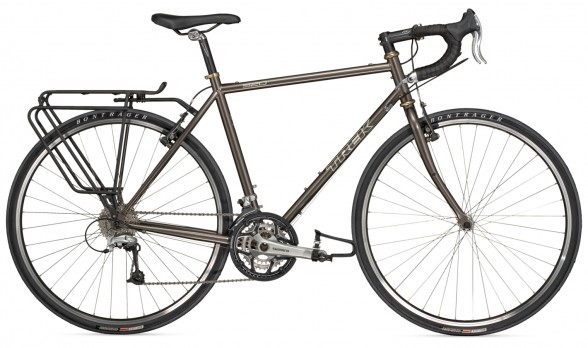
- Pinterest 3
Bicycle touring can be done on almost any kind of bike. After a few 100-mile days, however, having the right touring bike will determine whether your body can live up to the demands of life on the road.
That said, the Trek 520 caters to the touring bike scene with its chromoly steel frame that offers the perfect mix of flexibility, comfort and durability needed for long-distance bicycle touring. The stretched out geometry is just right for staying comfortable on the bike and at the same time allows you to get in a good aerodynamic stance for optimal speed. The 520 is perfect for long-distance bicycle tours or for the daily commute. Its classic touring geometry has stood the test of time and is considered a cult classic by many. Having been around since the 1970’s, The Trek 520 has earned its place in bicycle touring history.
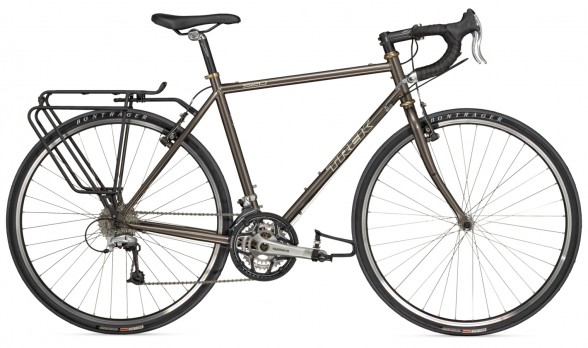
Trek only offers one touring option – the Trek 520, which is altered each year with a new paint color and exterior design. While the paint may change, the components haven’t varied too much throughout the recent years.
The Trek 520 MSRP is set at $1,429.99 USD.
It comes in five different frame sizes: 48, 51, 54, 57, 60cm. I am 5’8” with a 30” inseam and the 54cm fits me perfect.
The included components are great for touring right out of the box. The Shimano Dura-Ace bar-end shifters are low maintenance and easy to fix on the go. If they do break, they’re also inexpensive to replace compared to other styles of shifters. (My friends shifter broke in a minor crash on his Cannondale T-1 and the cost to replace the broken part was almost $500. He was able to switch to bar-end shifters for under $100 USD – including labor.)
The wheel set on the Trek 520 is durable and able to take a heavy load even on mild trails, with Bontrager Race Lite Hard-Case 700x32c tires that are wide enough to add cushion yet able to keep good speed.
The bike also comes with a Bontrager Back Rack Deluxe (a rear rack) that is good for loads lighter than 20lbs.
The stock brakes hold their power and are able to stop your fully-loaded bicycle, even when traveling at high speeds and in downhill scenarios.

The Purchase
I went about purchasing this bike first by spending a good amount of time researching touring bikes online. After hours of research I had narrowed my choices to the Surly Long Haul Trucker and the Trek 520. My next step in purchasing the bike was trying to find a store that had one of these bikes in stock to test drive. I could not find any local stores that had the Surly Long Haul Trucker in stock. I quickly discovered that touring bicycles can be hard to find in many local bike shops.
After calling about 20 stores that carried Trek bicycles, I came across Helen’s Cycles in Santa Monica, CA that stocked the 520, and it just so happens they had my size! I took the bike for a test drive and loved the comfort and stability of the bike. I was sold! I was able to pick mine up in 2010 for just under $1,050 USD (including tax) due to some minor chips in the paint on the top tube.
The suggested retail price of the Trek 520 is a little steep in my opinion, because there are similar bikes of similar quality that sell for less. However, the 520 is specialty bicycle, which somewhat justifies its price.
Experience With The Bike & Upgrades for Long Distance Touring
I purchased my Trek 520 in the spring of 2010 with plans to use it as a touring bike, road bike and commuter. I had never owned a road bike before, as I was mainly an avid mountain biker at the time, so the Trek 520 had a completely different feel for me. After a few longer rides, however, I was hooked! I loved that I could cover 50-80 miles in a day without being exhausted.
After many long rides to train for my month-long Canada tour that I did in the summer of 2010, I invested in some upgrades. While the bike is set up for touring, I made some upgrades to meet my specific riding/touring needs. The biggest upgrade for comfort I have made was the saddle. The Trek 520 comes with a decent stock saddle, fine for 60-mile rides, but after doing a few 80-100 mile days in a row, I decided an upgrade was a worthy investment. After doing my research I decided on leather Selle An-Atomica . It is the best seat I have ever sat on! After proper adjustment and wear-in it feels like riding on air.
Soon after that I added Shimano 520 SPD pedals . Next, I installed a set of Kevlar lined Schwalbe Marathon Plus 700 x 35c tires . With the new tires I have only had one flat in 3,500 miles. My friend bought the same tires for his Cannondale touring bike and was able to ride over 6,000 miles on one set before replacing them. I also upgraded the stock fenders to SKS fenders . They give a lot better coverage for riding in the rain and dusty conditions.
The stock rear rack is good for carrying 20lbs or less. I carry my tent and all my gear on my bike while touring so I decided to upgrade to an Axiom rear rack and purchased Axiom Low-rider front racks to carry my 35-40 lbs worth of camping gear and clothes. To hold my gear I invested in the Axiom journey series panniers – front and back. Everything mounted very well, and the bike has sufficient braze-ons and welds for mounting heavy duty racks.
The one upgrade I have always thought about is lower crank gears. The stock gear ratio of 48/36/26 is a little high if you are using the bike to carry heavier loads on longer trips with mountains. My full load including the bike weighs in at close to 70lbs, while the bike itself weighs in at 27lbs. On long mountain passes, it sure would be nice to have a lower gear to switch into.
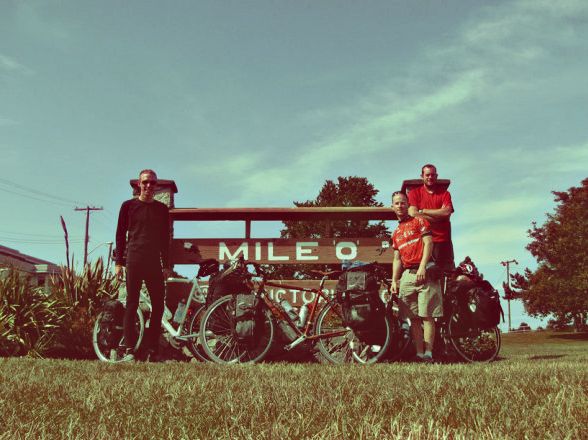
If I had to say one thing negative about the bike, I would say the paint job is not without its flaws. In 2010, when I purchased the bike, a rusty root-beer color was the only color option. For some, the color along might have been enough to turn them away from the bike. The brownish color of my bike has grown on me, however, and the metallic brownish/orange high gloss paint really stands out in the sun.
The problem that I have noticed, however, is that the metallic paint chips off easier than any other bike I have ever owned. An easily chipped paint job, of course, is not what you want in a touring bicycle that can be exposed to the elements for long periods of time. While the paint may be chipping, there isn’t a single spot or chip that has started to rust. You should also remember that the current models paint is different and I have not heard if it still suffers from paint chipping.
Would I Recommend The Trek 520 Touring Bike?
I would highly recommend this bike if you have the money to invest, and are serious about bike touring. You definitely get your moneys worth. The bikes durability, style and comfort definitely justify the price. I also get comments on the style of the bike frequently; a lot of people enjoy the classic look of it. This is the most comfortable bike I have ever ridden. The steel frame and geometry of the bike minimizes the bumpiest of roads and can take on some mild dirt trails – even when fully loaded.
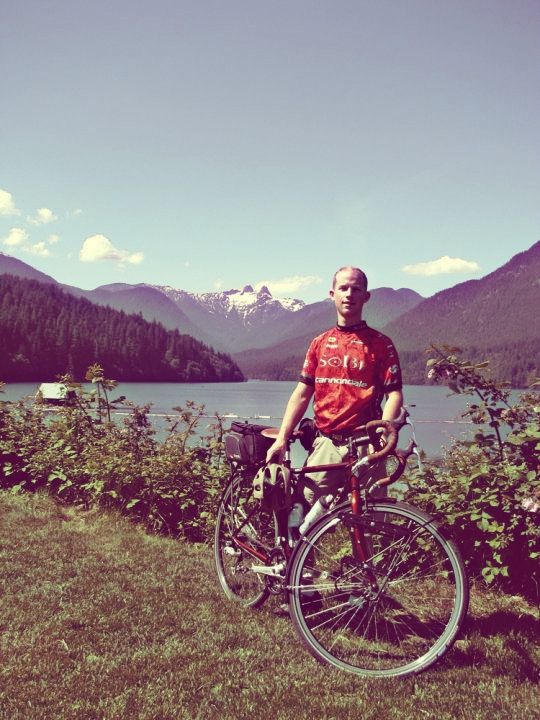
Conclusion and Rating
Looking back I have had no regrets or any major technical issues with the Trek 520. I have also yet to come across any major complaints from fellow bikers that own this particular bicycle. On a Scale of 1 to 10, I would give this bike a 9. The durability of the paint and the fact that the bike is slightly overpriced when compared to similar bicycle models are the only things holding the 520 back from being a perfect 10. The Trek 520 is and will continue to remain a classic choice in the bicycle touring world.
About The Author: Justin Bernstein is a 23-year-old student at Cal State Channel Islands where he works part-time as a bicycle technician. Justin says he enjoys anything that has wheels and notes that bicycle touring has allowed him to see some amazing places and meet some great people. “I love touring by bike and plan to never stop riding!”
Justin Bernstein
40 thoughts on “ trek 520 – touring bicycle review ”.
I too have a 2003 520, has been an awsome bike…lots of miles touring with 0 problems. Great article!
I have someone telling me that a 30 year old trek 520 made in the USA is superior to a new one. What is your opinion?
ha. I don’t know about that.
I also love the 520, but there is or was for me toe wheel clip or what ever we call it when your shoe’s clip the front wheel…what do you think about using butterfly handle bars on the 520, with a 650 wheel you can add a little wider tire?
Rodney, I’m not quite sure I understand you. Are you saying that when you ride the Trek 520 that the front wheel clips the front of your toes when you turn? If so, that could indeed be the right of the bike… or it might just be the way you have the toe clips set up.
As for butterfly bars, this is a personal decision and it is quite a lot of work to change out the handlebars on a touring bicycle like this. If you want to make that change, then yes, it can be done. But the drop bars that come on the Trek 520 are great in my opinion and most people will be quite happy with them.
I had toe overlap….
I’d really like to get one of these for my own touring but they don’t seem to be available in the uk?
Yes, the Trek 520 is available in the UK. You will probably have to special order it, however. You just need to search for a Trek dealer in your area. You can do so by searching for a dealer on this page of the Trek website https://locator.trekbikes.com/locator/search?lang=en
It may be a good touring bike but as any Trek it is just ridiculously too short for tall people. I am 6.8″ and I would never buy Trek (except for Garry Fisher of course – shame they have a Trek label on it now…). So if you look closely you will see that the geometry of Trek bikes is really stupid where the tall people are concerned. They make some bikes up to size 25″ but still only about 10 cm longer then the 15″ version – what is that about. Plus you end up paying too much for the label, I’d rather go for Surly or something else.
I have enjoyed my 520 since 2010. I tour about 6,000 miles a tear and the 520 is very dependable and comfortable. The only negative has been the 3rd bottle holder. When you add the detachable fenders the 3rd bottle holder cannot be used because it hits the fender. I have recommended the 520 to others but it can be difficult to find in stock. Most bike stores want you to purchase before they order….without a test ride. If you do not like the bike you are stuck with it or you can return it but you are committed to buy something else.
Wow, thanks for your help there was actually a dealer 2 miles away. Going to make a trip down tomorrow.
The inability to use the third bottle cage is quite common. There just isn’t that much room under there. A normal 21 oz water bottle is too long. But the cage is still useful for other things. If you use a stove that feeds off of traditional liquid fuel bottles, you can fit a half-liter fuel bottle in the third cage. I have a half-liter storage bottle down there that holds a spare tube, rag, patches, and wrenches. It makes sense to put something heavy down there. It wouldn’t be a great place for an actual water bottle anyway–it’s difficult to access while riding and it tends to pick up a lot of road grit. This is the storage bottle that I use: https://www.amazon.com/Pro-Storage-Bottle-500cc/dp/B004MGICFS
“there are similar bikes of similar quality that sell for less” could you name some of them for us, the budget tourers? 🙂 I’m currently touring on an aluminum trek 7.3FX, is steel really much more suppler than alu?
Excellent review….I am in the process of looking around for a tourer, the top of my list was the Cannondale Touring but I understand these stopped being produced in 2010..Will be following your advise closely
Keep up the good work
Nice review. I picked up a 2010 520 (barely used) this March and put 1200 miles on it over the summer. Never a problem. I really like the metallic root beer color and haven’t had the chipping problems you experienced. The bike rides smooth and shifts smooth. I also put SKS fenders on mine as well as a Brooks B-17. I’m still on the Bontrager Hardcase Race Lite tires that came on it and have not had a flat yet. The updated gearing has the granny necessary for the steep 13-14% grades that we routinely face in our area. The longevity of this particular model speaks volumes. Maybe more have crossed the continent than any other single bike model.
The Trek store sized me and sold me a 57cm Trek 520. They said I was borderline between the 57 and the 54. After 3 years I have to say the bike is too small. I’m 5’9″, and to get it to fit right the seat has to be way up, and Trek had to order a new uncut fork to get the handlebars way up – to get almost level with seat. It looks funny. Another local bike store, that does not sell Trek, told me it looks too small. REI put my wife, at 5’4″ on a “medium” Novara Randonee touring bike (often compared to the Trek 520). Her bike is bigger than mine!
I think Trek sizing works for guys with really short legs, and people who like that “seat post up in the sky” look you see with racers. The old Trek 520s, with less compact geometry, look far better to my eye.
I’ll probably swap the parts to another frame. Big $ loss.
Other than that, it’s a great., flawless bike.
Howdy. 🙂 Nice review, but I’m not sure what sort of rack your 520 had to have come with to only carry up to 20 lbs. o.O That seems really low. The current model of the 520, which you have pictured at the top, comes with the “deluxe” back rack from Bontrager, which is rated to hold up to 25 kgs, or about 55 lbs (and even their smaller rack is rated for the same weight). Anyway, I’ve had my eye on the 520 for a while now, dreaming about the day I finally manage to get myself set up for touring! 🙂
I just bought the 520 and I did a lot of research before I made the purchase. I will stay in touch with all and tell you my thoughts as soon as get the bike this sunday.
I bought the Trek 520 this year for a 3 day tour through the Rockie Mountains. The bike performed well and was able to carry my 20 lb. panniers with ease. The steel frame was heavier than my other bikes but did not feel heavy riding. The smaller frame size fit my short torso although I had to raise the seat quite a bit for my long legs. That being said the 520 is the most comfortable bike I have ever ridden.
I purchased my Trek 520 about 20 years ago and used it for many touring trips. I have always taken good care of it, and today it still remains to be one of my favorite bikes to take day rides on. I paid about $500 for it 20 years ago and has proven to be a great buy.
In Europe Idid use for self supporting tours mind condition Cannondale 1000X . My brother try it and he was also hooked … When return to Canada I did buy new Trek 520 . About 20000 miles fully loaded touring on my trusted and comfortable burgundy red Trek 520 was poore pleasure and I do not complain at all. Set up: Brooks , Shimano SPD , Satori stem and stem riser , AC Lowrider , Axiom rack just slightly modified , Voyager heavy duty paniers front and rear + Voyager handlebar bag , ( you do not buy those quality anymore). Czech made Pigeon framebag is superior quality also so by Bilenky Bicycle Work installed S&S couplings for reason . This Trek 520 is last series proudly build in Wisconsin USA .
Thanks for the great review and information. The Trek 520 is on my short-list of bikes and this is helping me make up my mind!
Wondered if you still have the 520 or gotten rid of it? I see the CoMotion now with S&S couplers. I am purchasing a 520, and building it with components equal to the Americano, along with S&S couplers, a SON28 hub and Luxos U headlight. Your thoughts on this set up?
This bicycle review was written by a BicycleTouringPro.com reader named Justin Bernstein. I don’t own a Trek 520 and I never have.
You are correct about me owning a Co-Motion Pangea , however. The Pangea is the touring bicycle I have been riding since May of 2012.
I’ve never heard of anyone buying a Trek 520 and totally transforming it the way you say you plan to do. It sounds like a lot of work and money. Why did you decided to do this rather than just keep the Trek 520 the way it is… or rather than just buying a touring bicycle with the parts/components that you want?
I’d be interested in hearing how that hub works out for you and what you end up charging with it (besides the headlight).
This review reads too much like a brochure from Trek, at least the first half. Today’s 520 is a relatively more compact geometry than the original. My 2002 is a completely different bike than the current model in both geometry and stock components. Trek has finally figured out what parts a touring bike should have, however, for years they were putting a standard road triple (52/42/30). While it’s a solid bike, I’m critical of the idea that it hasn’t changed over the years. Also, given this review was written two years ago, I should mention that Trek is adding disc brakes for 2015 (mentioning this for the sake of anyone reading the above review and considering the 520).
Where are you getting that the rack (Back Rack Deluxe) can only hold 20#? Trek lists it at 50#. I’ve upgraded to this newer version and I’ve had no issues fully loaded with somewhere in the area of 50# of gear. It’s a well made rack.
I purchased a 2013 Trek 520 earlier this year and enjoy riding it regularly. The bike rides smooth and steady and, while not necessarily built for speed, can sail down the road quickly. I chose to replace the stock Bontrager seat with a Brooks Flyer (springed) saddle which is almost broken in now – it works great to reduce road vibrations. I added a Light and Motion headlight for night-time daylight and a Bontrager pannier which easily mounts to and disconnects from the back rack. This is the second Trek touring bike I have owned – I love it!
My 520 has over 46k mile on it. It’s a fine bike but I have one beef; the SD-7 brakes that came with it were noisy crap. On a wet loaded downhill I had to reach round to the drops to get any stopping power at all. I replaced the front brake with a Single Digit Ultimate and replaced both brake levers with Tektro RS520 levers. Braking is much better now although I couldn’t launch myself over the bars if I tried, they still require effort but I can now brake from the hoods. If I replace it I’ll get the disc brake version.
I bought a new green 2015, without the disc brakes. Love the ride. Very stable. Digging the bar end shifters. I certainly am not doing well with the forward position. I added a Dimension stem extender that raised the bars about 3 inches and that had helped, but I still need a shorter stem. I ordered the Bontrager Elite in the much shorter 7 rise, 70mm. Hope it will take away the pain in the lower part of my neck in back. But if need be, I will add either the tried and true Nitto Albatross I have been using for sometime on a old GT Nomad hybrid, or a set of Jones bars since they are back and will pair well with the stem color. Otherwise, I do hope to make the drops work.. even consider some wider ones along with the shorter stem and any needed stacking like I see on many Surly LHT bikes. Planning a Fit at a bike shop to rule out my options.
I currently have a Trek 8000 mountain bike. For riding around town, neck pain is my main complain. I also have a trike that totally gets rid of any seat or neck pain but it is only good for perfect roads. I am considering Trek 520 and would be interested to know about the changes to the stem that you made to get remedy you neck pain.
I had similar neck and shoulder pain riding in a peloton with this bike, particularly on roads that are not great quality. The underlying cause was that the hoods don’t have much padding (like most bikes), but you need to rest your hands here to brake or use the drops the entire time. The solution was to install in-line brake levers so I could also brake from the padded handle bars while drafting. The levers were ~$30 and are cheap/easy to install when you are replacing your brake cables and bar tape at the same time.
I’ve ordered a 2015 disc model which I’m pickng up this week. Planning an epic tour from Ireland to Turkey and will enjoy training rides around N. Ireland. Slightly concerned about the “small” sizing of the bike but hopeful that the 57′ will fit my 5.10 height.
Hey Darren, im a huge fan
Im planning a long trip to South America, I preffer the less travel or off road path. Im from Colombia and here the obly two touring bikes avaliable are the Giant Thoughroad slr 1 and Specialized Sequoia. Im not sure about this bikes, because the giant have an aluminium frame and carbon fork and the Sequoia have a 48/32 crank. My dream bike is the Surly Troll but is out of my reach. What can I do?
It is possible to have a bicycle shipped to you from the United States or elsewhere in the world. It’s just more expensive when you do this, of course.
After getting my Surly LHT stolen two weeks before my XC trip… A friend of a friend got me a brand new Trek 520 for a good price. Along with the bike being stolen (I live in NYC), the racks went with it… so two comments I’d like to make.
1. During my 5,019 mile ride, I used the stock rear rack and only the rear rack the whole way to stow everything (panniers, tent, sleeping bag and sleeping mat). Per Adventure Cycling Association, my total weight (bike included) was 89lbs. The only issue I had with the rack was after getting off a rocky road, the rack started to squeak. I simply tightened the screws and no more squeak. So I’d hardly say that was a problem.
2. I believe this was the article that solidified my decision to go with the LHT and Trek 520 was my back up option while I price compared stores in the area. Having ridden both bikes, I would say they are just about the same, comfort wise. Jumping on the Trek 520 for the first time felt no different than the LHT. The difference may be the size and how Trek and Surly measure their frame size. I got them both in a 54 and for whatever reason the Trek felt just a little more comfortable. Whether it’s because it was bigger or smaller by a fraction I am not sure.
Anyway, Darren your resources were an incredible help to making me feel comfortable before leaving for my first touring trip. I am not the person to just jump on a bike and leave, so I can’t thank you enough!!!
I purchased a 54cm Trek 520 in September of 2015 and have put over 1500 miles on it to date. I ride on my days off and have done two over night trips. The second trip I took was around 110 mile round trip and about 20 miles was gravel roads. I do wish Trek would design the lower water bottle holder so it would clear with fenders. I recently replaced the the tires after four flats on the original tires. Little things I am changing to fit my riding styles to make the bike more comfortable for me. Over all I am very pleased with the bike and am happy with my purchase. I will be using this bicycle on my New Mexico trip in September of 2018. I know this is along way off but I have other obligations that come first. I am however doing small trips here in Mo. and one trip to my uncles in Oklahoma. I am also getting ready to do the entire Katy Trail in Missouri. Other than the flats I have had zero issues with my 520 but I am only 5’8″ and quite stocky . I would recommend this bike to anyone in my size range.
I considered the 520 because it was a light touring bicycle and a Trek – however, I opted for a Jamis Aurora (more bang for the buck) and have not been disappointed. I added a front Surly rack and clipless pedals – the bike came with fenders, good 9-speed triple crank gearing, bar end shifters, and a rear rack. When shopping, I noticed many shops in the Baltimore area did not stock steel frame touring bicycles. After riding my touring bike around – I seem to prefer the ride of steel frame bicycles.
Hello. I’m looking into purchasing a 2018 Trek 520 for bike touring. I have a Specialized CrossTrail that I use for touring and it is very limited for what I can haul. I took this bike for a road test and it was wonderful. It was very responsive and comfortable, indeed. I liked the fact that it was a 27 speed. The multiple, lower gears, are a plus for heavy load climbing. The bike dealer is asking 1100.00 dollars for this Trek. Am I getting a good deal, thanks!
I have a Trek 520. Bought in 2004, upgraded to Rohloff rear gear hub and schmidt generating front hub in 2010. Repainted at the same time. Does about 6000km pa. Brilliant.
Had mine for 7 years now, best bike I ever owned 🙂
It seems you can buy a good used steel frame and build up the bike to your choosing just fine. Just check out a bike shop which sells used bikes of on CL for old steel, many with classic lugs.
I have a 1984 Miyata 210 which I bought new and it is in fine shape, albeit ridden very infrequently as I have a number of bikes. It still has the original Araya wheels and are still perfect after all these years, original brake pads too! I have thought of adding a Rohloff internal gearing and taking it for an extended tour.
As for the Trek 520, they are good, them and Surly LHT’s are everywhere, can’t go wrong with either.
Comments are closed.
Username or email address *
Password *
Remember me Log in
Lost your password?

The New 2019 Trek 520 Touring Bike
The Trek 520 is the longest running model in Trek’s history. It’s hard to believe that this USA-based company has been refining their dedicated touring bike for 36 years now! Today, we’ll be looking at the controversial changes to the frame, fork and components of the 2019 Trek 520 model.
The 2019 Trek 520 Touring Bike
Ok, the most controversial change to the Trek 520 is the new aluminium fork. Really, a steel frame and aluminium fork?
Aluminium is a dirty word in the bike travel world, but the thing is – broken aluminium forks that are designed for the purpose of touring are about as rare as hen’s teeth. Almost all European touring bikes employ aluminium forks on their builds, and it follows that if this material was inherently unreliable or dangerous, manufacturers would’ve switched back to steel over a decade ago.
From the outset, it might seem strange that Trek chose an aluminium fork for the 520, especially when it causes concern for some. I can’t comment on the precise reason why Trek would have chosen aluminium over steel, but it seems logical to me that they’ve managed to achieve increased fork stiffness with a tidy weight reduction of 318 grams.
Is an aluminium fork less comfortable than a steel fork? Not in my experience. When you’re running tyres in the 38-50mm width range you experience lots of tyre deformation over bumps making any difference in vertical fork compliance unnoticeable. It is worth mentioning that some steel forks with a long rake can be optimised for vertical flex, but this style of fork wasn’t fitted to the outgoing 520 model.
Moving on, a new feature of the fork is what Trek calls the thru-skew secure skewer system. The dropout loops all the way around the skewer, meaning that the wheel cannot fall out unless the skewer is removed. This is designed to keep the quick release wheel perfectly aligned in the fork, similar to a thru-axle system. The fork itself comes with eyelets to fit a cargo cage on either side, as well as eyelets behind the dropout for full fenders.
Included with the bike is a Bontrager front rack unique to the 520. The rack features an upper tray to fit a front basket or a porteur-style bag. Alternatively, you can use the tray to simply strap a drybag to the top. It’s great to see some eyelets on the rack to help mount a front dynamo light too.
The Trek 520 now uses Shimano STI shifters rather than the tried-and-trusted barend shifters of the previous models. While this may seem like a bad decision for a round-the-world touring bike, STI shifters have become much more reliable in the past five years and many people who travel a bit closer to home certainly prefer the better access to the shift levers. You can always swap the levers out if you’d prefer to know your shifter will outlast the rest of the bike.
The bars on the 520 are a pretty typical road handlebar. It’d be nice to see a flared drop handlebar offered with this bike for two reasons: the flared drops provide a bit more steering leverage and the handlebar shape provides additional clearance for a bikepacking handlebar pack, should you decide to pack light.
The gear ratios have improved on the 2019 Trek 520 which I’m really happy about. While many users of the old model opted to swap in a 11-36t cassette to achieve a sub-20″ climbing gear, the new model comes with one as standard.
Another moot point found in the forums about the 2019 model is the downgrade from Shimano Deore gearing to Alivio. The reason for this move is that Deore has now moved on to 10-speed, and unfortunately there are no Shimano STI shifters which will work with the new 10-speed Deore drivetrain parts.
The brakes have received an upgrade to TRP Spyre-C callipers, however. These cable-operated brakes use a unique design that pulls both brake pads in at the same time, providing near-hydraulic braking performance (most cable disc callipers pull just one pad).
Tyre clearance has stepped up from 700x45c to 700x50c. While most companies abide by international standards for tyre clearance (at least 4mm of space on either side of the tyre), Trek adds another 2mm on top of that, so you can likely fit 54mm tyres (29×2.2″) in the 520. Another change to the 520 frame is the larger diameter downtube. This increases the lateral frame stiffness and therefore increases the stability with a front and rear load. As far as I’m concerned, you can never have enough frame stiffness on a touring bike!
And finally, there’s been some discussion around the 125kg maximum total weight limit for this bike. If the bike weighs 13kg itself and you were to carry the maximum rack capacity of 38kg, that means that technically you’d have to be under 74kg as a rider to meet this requirement.
I’m not too sure why Trek have opted for this limit (it’s been like this for a while – something legal perhaps?), but it’s my experience that a frameset of this build type will comfortably handle more. The wheels, although spec’d with 36 spokes, are possibly the only area which may not stand the test of time under a 125kg+ load. Check out THIS resource for my rim recommendations for super heavy loaded touring (ie. tandem-strength rims).
In addition, most bigger manufacturers like Trek are typically a bit more generous with their warranties as they prefer to provide good after-sales service to keep their customers happy. Not always, but I do often hear this.

What do you think of the choice of two colours? I’m digging the simple retro graphics of this years model and think the Anthracite Grey would be a good theft-deterring colour option. At US $1679 , the bike is a bit more expensive than previous years, but with the front rack, upgraded brakes and STI shifters it’s still competitive enough in this segment. Don’t like the build? You can also get the frameset for US $640 if you’d prefer to do build it your way.
You can find out more at Trek .
Want To Compare This Touring Bike With Dozens of Others?
Check out the Touring Bicycle Buyer’s Guide which compares touring bike steering, sizing, gear ratios, specification, pricing and more. The Bikepacking Bike Buyer’s Guide does the same thing, however, with a focus on lighter bikes and models with more off-road capability. Both of these guides are updated annually with the latest models at no extra cost!
Helpful Resources
All About Touring Bike Brakes Frame Materials for Bicycle Touring How to Select Touring Bike Gearing Understand Bicycle Frame Geometry What’s the Difference between Cyclocross and Touring Bikes?
Touring & Bikepacking Bike Overview
2016 Advocate Lorax 2018 All City Gorilla Monsoon 2016 Basso Ulisse 2016 Bianchi Volpe and Lupo 2016 2016 Bombtrack Beyond 2017 Bombtrack Beyond 2018 Bombtrack Beyond 2018 Bombtrack Arise Tour 2019 Bombtrack Beyond 2016 Brodie Elan Vital 2016 Cannondale Touring 2019 Cannondale Topstone 2020 Cannondale Topstone 2016 Cinelli Hobootleg Geo 2018 Co-Op ADV 4.2 2017 Curve Grovel V2 2017 Diamondback Haanjo EXP Carbon 2016 Fuji Touring 2017 Fuji Touring 2018 Fuji Touring 2018 Fuji Touring Disc 2016 Genesis Tour de Fer 2016 Giant ToughRoad 2017 Giant ToughRoad 2018 Giant ToughRoad and ToughRoad GX 2016 Jamis Aurora and Aurora Elite 2019 Jones Plus SWB 2020 KOGA WorldTraveller-S 2016 Kona Big Rove 2016 Kona Roadhouse and Sutra LTD 2016 Kona Sutra 2017 Kona Sutra 2018 Kona Sutra 2018 Kona Sutra LTD 2019 Kona Sutra and Sutra LTD 2020 Kona Sutra and Sutra LTD 2020 Kona Unit X 2016 Marin Four Corners 2017 Marin Four Corners 2018 Marin Four Corners 2016 Masi Giramondo 2018 Masi Giramondo 2016 Niner RLT9 2016 Rawland Ulv and Ravn 2016 Salsa Deadwood 2017 Salsa Fargo 2018 Salsa Fargo Ti Frameset 2018 Salsa Journeyman 2016 Salsa Marrakesh 2017 Salsa Marrakesh 2018 Salsa Marrakesh 2020 Salsa Marrakesh 2017 Salsa Vaya 2019 Salsa Warbird 2016 Specialized AWOL 2017 Specialized AWOL 2017 Specialized Diverge 2018 Specialized Diverge 2019 Specialized Diverge 2017 Specialized Sequoia 2018 Specialized Sequoia 2019 Specialized Sequoia 2018 Surly Bridge Club 2017 Surly Troll 2016 Traitor Wander 2019 Trek 520 2016 Trek 920, 720, 520 & CrossRip 2017 Trek CrossRip 2018 Trek 920 2018 Trek 1120
Related Posts
- The New 2016 Trek 920, 720, 520 and Crossrip Touring Bikes
- The New 2019 Salsa Journeyman Light Touring Bikes
- The New 2019 Cannondale Topstone Light Touring Bikes
- The New 2019 Salsa Warbird Light Touring Bikes
- Touring & Bikepacking Bikes
The Best Touring and Bikepacking Bikes of Eurobike 2023

- Gravel Bikes
The 7 Best Budget Gravel Bikes With Drop Bars (Under $1000)

Here’s Why Gravel Bikes Will Get Much Better In 2025

The 9 Best Budget Gravel Bikes With Flat Bars (Under $1000)
Trek FX 2 Disc Equipped review: Unspectacular but effective
The trek fx 2 disc is a versatile all-rounder with surprising levels of comfort and stability.

Cyclingnews Verdict
Built around a frame with a superb balance between responsiveness and comfort, the Trek FX 2 Disc Equipped will tackle any task required of a hybrid bike in an effective, if unspectacular, manner
The frame has a great balance between responsiveness and comfort
Equipped for night riding, bikepacking or commuting
Can carry a decent amount of weight
Stable ride for long distances
Would need a drivetrain upgrade to become a serious fitness bike
On the heavy side for a rigid frame
You can trust Cyclingnews Our experts spend countless hours testing cycling tech and will always share honest, unbiased advice to help you choose. Find out more about how we test.
A hybrid bike can and will mean different things to different people. But sometimes it is simply the bike that fills the gaps, that doesn't do any one thing but in fact does it all. Purists may scoff and say to compromise is to ruin the essence of life: if you are not something, you are nothing. But Trek has offered a repost: if you can't be something, be everything.
That certainly appears to be the aim of the Trek FX 2 Disc Equipped. It's the jack-of-all-trades, odd-jobber of a bike. It comes, as the name suggests, fully loaded with a pannier rack, lights, mudguards and even a kickstand but what elevates it to a place among the best budget hybrid bikes available today is that, as part of Trek's fitness range, all that versatility does not come at the cost of all rideability.
And that's a crucial element. Just because a bike has more practical functions – going to the shops, commuting, family bike rides etc – doesn't mean it can't be fun, have its own personality and leave us looking forward to running that next errand.
Trek's FX range of bikes is quite extensive, starting at the £500.00/$599.99 FX 1 and going all the way to the full-carbon £3,050.00/$2,799.99 FX Sport 6. The FX 2 is available with a step-through frame – in both the Equipped and standard versions – and has been updated for 2023, with the main difference from the 2021 model being a move from a 3x8 to a 2x9 gearing system.
The FX 2 Disc Equipped is priced at £740.00 - it's not currently available in the USA - which is £90 more than the FX 2 Disc standard (£650.00/$799.99) which foregoes the rack, lights, mudguards and kickstand. Although it does come in a couple of extra colour options.
Design and specification
Recognising alloy frames' bad reputation for comfort compared to steel and carbon, Trek set itself a goal to "build more compliant frames that retain the acceleration and affordability that have always made aluminium popular" – and it is the fruit of that labour that the FX 2 Disc Equipped is designed around.
The Alpha Gold Aluminium frame, while not the lightest, does offer a great balance between responsiveness and comfort. It is also strong: according to Trek, the FX 2 Disc can take weights of up to 136kg (for bike, rider, and cargo combined), which fares well compared to other hybrid bikes in the same class such as the Merida Speeder 200 (120kg) and Scott Sub Cross 50 (128kg). The pannier rack that comes with it is also very solid and suitable for carrying loads up to 25kg despite weighing less than 600g itself.
My size large test bike as a whole weighed in at 13.4kg with pedals. The rack, lights, mudguards, and kickstand account for just over a kilogram of that weight but it's still a touch on the heavy side for a fixed-frame hybrid in this price range.
While the focus is on the practicality of the frame, it is by no means ugly – especially when stripped of all the accessories – with internal cable routing, a gentle curve to the top tube that is reminiscent of the Specialized Sirrus (one of the classic beauties of the hybrid world) and the choice of a striking Viper Red or classy Lithium grey colourway. The geometry is pretty much what you would expect from a hybrid, with perhaps a slightly longer chainstay length adding to its stability. It is not as upright as, say, the Sirrus but similar to the Cannondale Quick 3 – which is a good bike to use as a comparison in general.
Like the Quick 3, the Trek FX 2 comes with a Shimano Acera/Altus 2x9 drivetrain and has an integrated mounting system in the stem, as well as the ability to track cadence and other metrics using an integrated wireless sensor.
Trek's Blendr stem system is designed for easy installation of computers, lights and other accessories to your cockpit. It does, rather annoyingly, require an additional base to be purchased (which plugs into the stem) and then a further mount for the specific accessory (which attaches to the base) but that does allow for a wide range of options to suit all needs.
The DuoTrap S is a Bluetooth/ANT+ sensor that integrates into the chainstay and wirelessly transmits to a smartphone or computer to track cadence and other metrics. Again, it requires a separate purchase, but the frame is set up for it to be attached without the need for zip wires or other ungainly fasteners.
Trek has made an effort to include ergonomic grips on the FX 2 Disc Equipped, although they are a little on the basic side, especially compared to those on the more expensive models in the FX range.
The lights, however, are far more impressive, particularly the AXA Greenline 35 headlight. USB-charging, it has a wide beam, is also designed to be visible from the side and is discreetly mounted on the top of the fork, which avoids cluttering the cockpit.
The Tektro HD-R280 hydraulic disc brakes are pretty standard now for mid-range hybrids. My test bike came with Bontrager H2 Comp 700x32c tyres but with the mudguards fitted there is room for up to 35mm and Bontrager H2 Hard-Case Light 700x35c tyres are listed as an option on the spec sheet. Without the mudguards, Trek says the frame can accommodate tyres up to 38mm in width.
Performance
Trek deserves credit here for really delivering on its aim of a responsive-yet-compliant frame. It's one thing coming up with the jargon, but another bringing it to fruition at a genuinely affordable price. While the FX 2 Disc Equipped might come across as a bit of a plodder on paper, in reality, it has a surprising amount of responsiveness. Loaded up with a carry pack on top of the pannier rack, I was happy overtaking other cyclists on reasonably fast country roads, knowing I had the acceleration to get past and back across to the side of the road in ample time.
Yes, it's no speed demon – it doesn't have the playfulness of the Boardman URB 8.9 or the lightweight climbing ability of the Merida Speeder 200, two bikes at a similar price point – but where it completely outscores both is in comfort and stability, even with a rack, mudguards, light, kickstand all bolted on.
Interestingly enough, I took it for a ride with all those added extras stripped off and, while significantly lighter – making an obvious difference on climbs – there was not a huge noticeable change in its performance on the flat.
My test bike came with a slightly-different-to-advertised Microshift Marvo front derailleur instead of Acera T3000, which is roughly equivalent, and I had no issues with it. However, as a whole, I did find the drivetrain to be under-par for a fitness bike. It's perfectly functional and will get you pretty much wherever you need to go, but it is a little clunky and I noted that the next bike up in the FX range, the FX 3 Disc Equipped , comes with a 10-speed Shimano Deore groupset which, in my experience, is a huge step up in performance.
In particular, I could not get to grips with the drastic change when switching chainrings on the 46/30 chainset. If I didn't downshift on the 4th sprocket or earlier I found myself spinning out – and this is perhaps a rare example of the FX 2 Disc Equipped coming a little unstuck wanting to satisfy in all areas. That 16-tooth difference in the chainrings (the same difference as a 50/34 compact road chainset, for example) means the bike has the range to get up steep hills while also having enough gas on the flats, but the user experience is compromised a little in doing so.
Where it doesn't compromise, however, is in its comfort and handling, whether I took it on potholed roads, bike paths, or light gravel it felt so balanced and stable. I was even happy taking it on the grassy, rutted track of a nearby nature reserve – and this was all with the standard 32 mm tyres it came with. Even when there was a little rattling, you could tell it was coming from the rack, fenders, and lights rather than the frame.
Taking it out at night in light rain did little to change my faith in its dependability and the lights were superb, particularly the wide-beam fork-mounted headlamp – a marked improvement from the usual glorified-torch-on-the-handlebars setup I usually use. Neither front nor rear light offered an intermittent option but, having been driven to distraction on long night rides behind blinking bulbs in the past, that was no great loss to me.
I took the Trek FX 2 Disc Equipped on rides around the countryside, trips to the shops, rides with the kids, rides at night, in the rain, for exercise, for errands and more, and on every occasion, it delivered. It is solid and dependable without feeling clunky or cumbersome. It's not sexy but it's not ugly. It's not overly fun but it's no chore to ride.
It will do what it needs to do in almost every situation you will need a hybrid bike for. Not necessarily to the highest level, but to a high enough level that you won't feel like you are missing out.
Yes, I did find the Altus/Acera groupset to be restrictive in terms of performance but drivetrains can be upgraded, along with wheels and grips and seatposts etc. Having a top frame is such a great building block. I would stress, however, this frame still has a ceiling to what it can do as a fitness bike, even if it were upgraded in all those areas. It is built for sturdiness as much as anything else and the fact that its performance was similar with and without the rack, fenders, kickstand et al is quite telling. I'm not going to use it to take on the Brecon Beacons in the Dragon Ride but I might choose it over a more expensive performance-oriented bike for a long-distance overnight ride such as the Dunwich Dynamo , where comfort, stability and safety are the overriding priorities.
Tech specs: Trek FX 2 Disc Equipped
- Price Trek FX2 Disc Equipped : £740.00 / $N/A
- Price Trek FX2 Disc : £650.00 / $799.99
- Sizes : S, M, L, XL
- Weight : 13.4kg (actual, size L, with pedals)
- Frame : Alpha Gold Aluminium
- Fork : FX Alloy
- Shifters : Shimano Altus M2010, 9-speed
- Front derailleur : Microshift Marvo
- Rear derailleur : Shimano Altus M2000
- Crankset : 46/30
- Cassette : Shimano HG200, 11-36, 9-speed
- Brakes : Tektro HD-R280 hydraulic disc
- Wheels : Bontrager Connection
- Tyres : Bontrager H2 Comp, 700x32c
- Saddle : Bontrager Sport
- Seatpost : Bontrager Alloy, 12mm offset
- Stem : Bontrager Comp, Blendr Compatible, 7-degree, 90mm length
- Handlebars : Bontrager alloy, 31.8mm, 15mm rise
- Extras : Rack, Eurofender Snello mudguards, Spanninga SOLO rear light and AXA Greenline 35 headlight, Bontrager Satellite grips, kickstand

Thank you for reading 5 articles in the past 30 days*
Join now for unlimited access
Enjoy your first month for just £1 / $1 / €1
*Read any 5 articles for free in each 30-day period, this automatically resets
After your trial you will be billed £4.99 $7.99 €5.99 per month, cancel anytime. Or sign up for one year for just £49 $79 €59
Try your first month for just £1 / $1 / €1
Ben has been a sports journalist for 16 years, covering everything from park football to the Olympic Games. As well as cycling, his passions include podcasts, tennis and speaking enough Italian to get by on his snowboarding trips to the Dolomites. A DIY rider who is almost as happy in the toolbox as he is in the saddle, he is still trying to emulate the feelings he experienced as a nine-year-old on his first Peugeot racer – he couldn’t fathom the down-tube friction shifters then and he’s still wrestling with groupsets now. When he isn’t making a beeline for the nearest Chiltern hill, he is probably tinkering or teaching his kids how to clean a bike properly. He rides a heavily modified 1980 Peugeot PVN10 Super Competition (steel is real) when the road is smooth and dry, and a BMC Alpenchallenge when it’s not.
Tour de France bikes 2024: The ultimate equipment guide
Visma-Lease a Bike reveal custom Cervélo bikes for the Tour de France
Chantal van den Broek-Blaak wins Dutch national road race title in Arnhem
Most Popular
10 things to know: Riding the Baja Divide
- filter controls Items 24 24 48 72 filter controls Sort by Featured Featured A-Z Z-A Price Low-High Price High-Low
NEED HELP CHOOSING?
Use the Bike Finder to narrow your choices, compare models, and find the Trek that’s right for you.
Get started
- RWR Home Page
- Recent Posts
- Bike Reviews
2022 Trek FX 3 Review
- by Riding With Ryan (Official)
- 56 Comments

This 2022 Trek FX 3 review covers everything you need to know about the best hybrid bike for 2022. The 2022 Trek FX 3 checks all the boxes: disc brakes, 1X drivetrain, tubeless ready wheels and more! Its a fitness hybrid, which means you can ride it like a flat bar road bike while staying comfortable, or use it to commute around town.
The FX 3 is the best value in the FX series. The FX 1 is heavy because it comes with a steel fork. There are some models of FX 1 that still have rim brakes. The Trek FX 2 has a similar price point to the FX 3, but the upgrades on the 3 are worthwhile. (We dive into those upgrades below!) Regarding the front fork, the FX 2 comes with an aluminum fork, while the FX 3 has a carbon fork. Carbon reduces vibrations, meaning the 2022 FX 3 will provide a more comfortable ride.
Trek FX vs Trek Dual Sport vs Trek Verve
The three most common hybrid bikes in Trek’s arsenal are the FX, Dual Sport, and Verve. Depending on how and where you ride, each model offers a unique set of features. The Trek FX is the Five-Star General for several reasons.
First, in a weight comparison the Trek FX is the lightest bike of these three hybrid models. The Dual Sport comes with a front fork suspension adding a lot of weight. That front fork isn’t good enough to classify the Dual Sport as a mountain bike because it has limited travel. There is more room for wider tires on the Dual Sport than the FX, but again, you aren’t going to fit a set of 2.6″ Maxxis DHF or DHR tires to make a full mountain bike conversion. At best, the Dual Sport is an over-equipped gravel bike.
The Trek Verve is also a heavier bike than the FX, and it doesn’t come with suspension. It still has a similar weight to the Dual Sport. Depending on frame size you can expect your Dual Sport or Verve to weigh in approximately 31-33 lbs, depending on frame size. The FX 3 weighs just 25 lbs, which means climbing hills and going fast will be a lot easier on the FX.
Trek FX 3 Maximum Tire Clearance
Speaking of tire clearance, the Trek FX 3 maximum tire size is listed at 38mm per Trek. Trek believes you need 6mm of clearance on each side of the tire. I run gravel tires that are 40mm wide on my FX 3 during the winter and when I know I will be riding a lot of gravel trails. They provide plenty of traction in all riding conditions, and adding an even wider tire would simply add unnecessary weight to the bike.
All three models come with rack and fender mounts. The only area the Trek Verve has the advantage is in adjustability. The stem is adjustable to an upright position, and dropped for riding aggressively. The adjustment is made with an Allen wrench. On both the Dual Sport and FX, you need to flip your stem for any adjustability. Even then you aren’t getting the same amount of adjustment range offered by the Verve.
Trek FX 3 Upgrades
There are a few upgrades covered in this 2022 Trek FX 3 review that you need to make before leaving your bike shop. The three main touchpoints almost always need an upgrade with any new bike. They are grips, pedals and saddle. This is the first new bike I’ve purchased that I am not upgrading the grips. The 2022 Trek FX 3 comes with Bontrager Satellite IsoZone Plus grips that are lock-on and ergonomic. IsoZone is a vibration dampening technology and simply put… it works.

2022 Trek FX 3 Touchpoint Upgrades
When it comes to pedals, I am an advocate for clipping-in. Clipless pedals are a must have, but even cyclists that ride flats will want to upgrade pedals on their Trek FX 3. The Bontrager City pedals do not have a lot of grip, and they are cheap plastic that isn’t durable enough for even a casual rider. I don’t believe one clipless pedal manufacturer has an advantage over the other. You should use the pedals that are easiest to get in and out of. Most bike shops will let you test a few options to help you decide.
The saddle on this bike is nice. Most beginner cyclists will complain it is too hard, but the firmness of the saddle provides increased efficiency. Also, soft saddles become more uncomfortable on longer rides, and once you buy a Trek FX 3 you will go on some long adventures. Rather than upgrading the saddle, try a pair of cycling shorts. If your concerned about the look, you can always throw a pair of casual shorts over top. The built in chamois cycling shorts offer is the number one way to increase comfort on your bike. My personal favorite is the Escape Quest short from Pearl iZUMi. Its a durable cycling short that costs $50 or less. ( Check Current Price on Amazon Here ).
2022 Trek FX 3 Tire Upgrades
As I mentioned previously, a good set of winter tires is a must for this bike if you plan on riding in all weather conditions. I really love the 700×40 Donnelly Gravel Tires. If you plan on riding a lot of gravel I highly recommend a tan sidewall. They hide the dust better than all black tires, and they look great. ( Check Current Price on Amazon Here ). The FX 3 comes with tubeless ready wheels, and the Donnelly tires are tubeless compatible.
Tubeless wheels and tires allow you to run a lower tire pressure without having to worry about getting a flat. Tubeless setups are also lighter than running tubes, so you cut weight off the bike which adds to your efficiency. Converting to tubeless is something I recommend doing before you leave the bike shop.
2022 Trek FX 3 Drive Train
Another reason I upgraded from my 2020 FX 2 to this 2022 FX 3 is the drive train. Like it or not, the biking industry is moving to simplified drive trains. That means getting rid of your front derailleur. Your rear cassette is manufactured with enough range that 2X and 3X drivetrains are obsolete.

The 2022 FX 3 comes with a 1X10 Shimano Deore drivetrain. Shifting is incredibly smooth, and there is plenty of range for climbing mountains in Colorado. With the high end drive train, carbon fork, and thoughtful upgrades the price is $150 more than the FX 2 (Read: Trek FX 2 Review ), but the upgrades make the FX 3 an incredible value. The carbon fork alone is enough to justify the added expense, and the upgraded drivetrain makes the FX 3 a no brainer.
With the upgraded drivetrain you need to be able to stop faster too. Stopping is no issue with this bike thanks to the hydraulic disc brakes from Shimano. Disc brakes make stopping easier and faster in all weather conditions. There is no debate on the better brake, because disc brakes work better than rim brakes in every scenario.
If you enjoyed this 2022 Trek FX 3 review, consider reading:
- 10 Ways To Make Your Bike Lighter
- Best Road Bike For Beginners
56 thoughts on “2022 Trek FX 3 Review”
Hello, I’m very interested in the FX 3 before I buy can I get the handlebars up a few inches with an adjustment or replacing the stem with a longer one. Btw Your video was great I will go tubeless as u recommend. Thank you , Charles
Yes there are stems available that sit higher, but if you want a gain of a few inches you will be better off replacing the bars. The amount of gain you get from adjusting the stock bars is only a centimeter or two.
Loved your review and ended you getting the bike, same color, thank you. Quick question, could you provide info on the water bottle holders? I love how they complement the FX3, both black and blue.
I went with the Bontrager Elite bottle cages because I knew the colors would match. I can’t remember the name of the blue, I just know it was NOT the Waterloo Blue.
The color is alpine blue.
Yes! Thank you!
Hi Ryan, Thanks for the review. I’m debating between FX2 and 3 (or even Dual Sport). Most of my rides will be on city roads, but my commute does have a few hills (yikes San Francisco!) and I do plan to ride on light trails and gravels occasionally. What would you recommend for this riding situation?
Thanks, Abota
I definitely recommend the FX 3. The Carbon fork on the 3 will be a big advantage over the FX 2 when you hit that occasional gravel, and the weight savings over the Dual Sport will serve you much, much, much, mmmmuuucccchhhh better than the Dual Sport on those hills. If you are worried about the comfort of the rigid frame you can always put a higher volume tire on the FX to get you more comfort.
Is this bike comfortable for uphill riding with stock tires ?
Yes, it definitely is.
Do you ever use fenders? I’m curious if fenders still fit with your 40mm tires, which Trek says is already above the max of 38mm without fenders. Thanks!
I don’t use fenders on my FX. I think with fenders it’s best to stick with treks recommendation because there isn’t as much extra clearance. I’m going off memory but I think with fenders max tire width is 35mm.
Hello Ryan, I am thinking of upgrading my 2022 Trek FX3 Disc to a 2x system. What are your thoughts?
To each their own. If you feel like your ride is less enjoyable because you don’t have enough gearing for your terrain, then it’s a good idea. I would challenge you to go for a ride and tell yourself before hand that you will enjoy your ride even if that means working a little harder or going a little slower. I think you will find after a handful of rides the 1x is pretty good.
Hello again Ryan, I got a bit of a paint chip on the top tube in the aqua blue part of my 2022 FX 3 Disc. Can this easily be fixed on your own or should I take it to a bike shop?
It depends on how you want it to look. Its really hard to color match and blend it yourself. If you take it somewhere it will probably cost a small fortune.
Ryan, I’m looking at doing my first solo cross-country back-packing trip this coming season, starting in San Francisco and ending in Hilton Head. Because of carpel tunnel, drop bars/road bikes are not an option because of weight and angle it puts the riders wrists at. This limitation is what brought me to test ride the 2022 Trek FX Sport 4 Carbon & 2022 Sport 3 at my local bike shop. Question, do you think either of these are capable of making the trip and if so which one? I’m 6’1″and 215 lbs. Your thoughts would be greatly appreciated.
For a trip like that the carbon sport model will be better.
Correction on the second bike, I meant the 2022 FX 3 Disc.
Hello Ryan, two questions. Are you still using the stock seat or did you upgrade? Also, if you wanted to put a 12 cog rear cassette on, would there be enough room and what other parts would you likely have to change out. Thanks.
I use the stock seat. With cycling shorts on I’ve found I am comfortable on any saddle.
Very helpful review. After years riding and loving a road bike I decided to make a switch (I’m 68). I read your review, talked to my local, trusted LBS and purchased a FX3. Now for a twist…I also bought a Giant Escape 1. So far so good, and it’s too early to compare and contrast, but I’ll be back shortly after a few more rides.
I am 65 and just started biking. I bought the FX 3 and love it. You can ride nice and easy or make the ride challenging.
Ryan, any idea if the 2022 Trek FX Disc 3 can accommodate a 11 or 12 speed rear cassette?
It can be modified for sure, but in addition to a new cassette you would need new shift levers too. I think it’s a bigger project than it’s worth for a bike in this price range.
Two final questions Ryan. Can you recommend a pair of bike shorts that are not spandex? What kind of bike gloves do you wear while riding the FX3? I have a pair of Specialized gloves with padding on the inside and they don’t feel right with the ergonomic handlebars. Thanks again.
I love the Lycra shorts from Pearl Izumi. If you don’t like that skin tight feel try a pair of mountain biking shorts. My favorite are made by Zoic.
I go back and forth on gloves. With ergonomic grips I feel like I don’t need the gloves, but when I do wear them I wear either Pearl iZUMi or if I want full finger I wear Giro.
Is there a FX3 step through model?
Not a true step through or low step. They call it a stagger. The stagger has a much lower top tube but it won’t be as low as a true step through.
What’s the depth of the wheels rims if you know?
No clue on depth. I’ve always been more concerned with width. Looking at them I would guess internal is maybe 10mm. Seems to be about half the width anyway.
Bought my FX3 in August of this year to help get back into shape. At 60, with beat up knees, running wasn’t working for me. I love this bike and feel great after a few months of long rides. My only complaint was the non- adjustable handle bars as I was feeling too much pressure on my hands. I purchased Surly Sunrise handlebars and installed them at max height and rolled them back a bit to get more upright and haven’t had any issues yet. The extra weight doesn’t seem noticeable to me. Love this bike. Great article BTW. Thanks,
Hey Ryan, Great article. I am currently in the market for a new bike. I’ve only ever ridden mountain bikes and I’ve done what little I can to my full suspension Diamond Back to make it a smoother commute to work on city streets. I found an FX3 on offerup for a great deal, but im hesitant to pull the trigger. Can you advise as to what I would expect with that transition if I were to buy the FX3?
It will feel a lot faster, but it’s rigid so expect to feel more bumps.
Hi Ryan, I’m on the fence between this Trek FX3 and the Specialized Sirrus 3.0. The Sirrus has an aluminum fork and 1×9 Microshif. The brakes are Tektro. The advantage for the Sirrus is that is comes with 42mm tires and can run 45mm if you wanted to. Which bike would you pick? And do you think 42mm tires on the Trek would be possible for added comfort? Or perhaps the front tire could be 42mm and the back one 40mm? Thank you
42mm tires are definitely too big for the Trek. Both bikes are great. Trek will have more speed, specialized more comfort.
Having the ability to use a 2.1 tire is great I chose the DS3 2022, your statement about the narrow tires being faster is correct unless you hit a lot of sand like we have here in Florida then the narrow tires are going to let you down. Having the ability to mount wider tires or narrower and a carbon fork that can take up too a 2.0 700c on the DS3 makes it right on par with the FX but better because of having the option for running wider tires and something you can’t do on the FX.
Hi Ryan. I picked up the same bike last year (another n+1 added to the collection!) and for the most it’s great! Ended up upgrading pedals, grips , stem and tires (the LBS squeezed 42s on , so the bike essentially doubles as my gravel grinder). Question I have is if you have experienced any issues with the braking system? Particularly the rear brake stutters a fair bit with high speed braking or when I have my child in the Thule seat? I’ve read that it’s a bit common with the Promax brakes Trek substituted for the shimanos. Thought I would ask your experience this far. Cheers, Mike
I personally have not had any issues, but I know other commenters have reached out with complaints about Promax brakes. In this price range, I think the Promax brakes get the job done, but maybe I’ve just been lucky.
I have been riding a Trek FX 7500 for 20 years and now I am thinking about a new bike…I love my Treks I am thinking about a FX3 or a Verve 3. I am 74 years old and I am thinking about a more upright ride. What do you think? FX3 or Verve3?
Thanks Brian
I’m not a fan of the Verve, personally. The Verve 3 will definitely be more upright thanks to the adjustable stem, but you can replace the stem on an FX3 for the same result, it will just cost a little more. I think I would pay a few extra bucks on accessories that make the FX3 work versus buying the verve. The Verve is such a heavy bike weighing six pounds more than the FX.
I have a Verve 3 which is great for upright posture (which I need at 75); but I do not care for the drivetrain and weight. Can you specify how I could set up an FX3 to achieve the same posture and comfort? OTOH could I change the Verve 3 to a Deore or other drivetrain from Alevio/Acera?
Replace the stem and handlebars with something more upright. You might be able to get away with just a new stem too.
Hi Ryan. Am 54 not in great shape. Thinking of picking up cycling again to get in shape. Am from Malaysia and there seems to be a shortage of good bikes you see on internet. Now am suddenly faced with a choice of Specialized Sirrus 2 (gloss black) with Microshift set, Giant Escape 2 (cement) with the Altus set and Trek FX 3 with Deore set (matte black). The Trek is a thousand more in our currency making it the most expensive at MYR 3,899 (US 860) whereas the Giant and Specialized are around MYR 2,700. (US 650) we don’t even hv much color choices. Which of the 3 would you pick ?
The Trek. They all make a great bike but the Deore group set is the best in that bunch, by far.
Ok Ryan. Tqvm. Really good of you to reply. Decided am not going to do anything until I get your reply. Take care and all the best.
Hey, Great review.. Does the 1×10 drivetrain pick up as much speed as the 2×9 in the Fx2? I ride mostly flat trails and not much climbing. Thanks!
No, I’d say is the equivalent to having every other gear, so you are spending a little more time in each instead of ramping up quickly with multiple gears.
I found that I spinned out with the gearing and didn’t need the easier gears where I live… I replaced the crack with a 105 hollowteck .. the BB is compatible and got a 52t chainring … Of course you need a longer chain
Hello Ryan. What do you think of the FX3 for just riding down the highway on flat terrain?
Their are probably better bikes to do it more efficiently, specifically a road bike, but for just a casual rider strolling paved flat terrain the FX lineup is definitely sufficient.
Hi ryan About the FX3, 2023, with a 1×10, Would it be possible to maintain a good speed, let’s say 50 km/h, on a paved road without having to pedal like a crazy? Is the gearing low enough on a 1×10 compared to a 2×9 for example for fast riding?
Id say the 1×10 is going to feel lacking for maintaining fast speeds. It will feel like you’re missing that one extra gear.
Hi Ryan. Glad I found your page. For reference, I’m 73, 6’1″, 250 lbs working to drop 25 lbs, 1 knee replacement last Oct and the orher seems OK…for now Been out of cycling for about 10 years but wanting back in. Hoping to do both roads and solid trails…nothing to technical or extreme. I’ve been to all the local LBS and looked at most of the familiar mfrs offering. Now I’m down to the Trex FX3 and the Giant Fastroad AR. Not sure I need a 2x gearset here in SE Pennsylvania (Bucks Cnty) but I like the fatter tires on the AR. The FX is more comfortable for my tired old body. Your thoughts? TIA.
The gearset is a bummer really. Shimano 4100 Deore 10-speed A Shimano 5100 11-speed or 6100 12 speed would be a different league. agree?
It’s all relative. The group set is great for a beginner comparing their bike to one from a big box retailer. If you’ve riding high end bikes, it’s a lot harder to appreciate the quality and value of the FX.
Leave a Reply Cancel reply
Your email address will not be published. Required fields are marked *
Save my name, email, and website in this browser for the next time I comment.
Privacy Overview
- MAGAZINE OFFERS
- BIKE INSURANCE
- Best Products
- Maintenance
- Accessories
- Long-Term Reviews
- BikeRadar Podcast
- First Look Friday
- Bike of the Week
- Tech Features
- Routes and Rides
- Bike Galleries
- BikeRadar Bargains
- Buyer's Guides
- Fitness & Training
- Sizing & Fit
- Mountain Biking UK
- Cycling Plus
- Bike of the Year 2024
Trek Fuel EX 9.7 review | Trail Bike of the Year contender
Trek’s hyper-adjustable trail bike is built to do it all
Excellent chassis; spot-on geometry; great suspension; lovely ride feel; super-capable and adjustable
Poor brakes; tyres can’t compete with the competition
The Trek Fuel EX 9.7 Gen 6 sits around the middle of Trek’s aggro trail bike range, with this version sporting a carbon frame.
It is, as far as I can tell, one of the most adjustable mainstream trail bikes on the market, with a plethora of geometry-adjustment capabilities, as well as the ability to tune the suspension further than the shock alone allows.
Add in a couple of wheel-size options on the smaller-sized bikes and it's hard to think up a rider profile who wouldn’t get on with the bike.
That’s all based on the tech specs, though, and what’s important is how this 140mm-travel rig rides.
As I found when I tested the alloy Fuel EX last year, it’s a solid platform, with excellent ride characteristics and plenty of positives.
It’s highly maneuverable and easy to ride without any odd quirks, while the suspension works well on hits small and large.
However, at RRP, the value isn’t amazing, and Bontrager’s tyres struggle against competition from Maxxis , lacking their grip and feel.
Trek Fuel EX 9.7 frame and suspension

Trek’s nomenclature dictates that a 9.something-named bike has a carbon frame . Here, you get the brand's OCLV Mountain Carbon throughout, save for the magnesium rocker link.
The frame features are well thought-out, with plenty of protection from rock strikes, as well as internal storage, neatly wrapped up in the supplied bag. This sits in a lever-locked door under the frame’s bottle cage in the down tube.
Cables are guided through the frame in sleeves from the head tube, while the use of a 34.9mm seat tube means broad-diameter droppers can be used for, theoretically, increased durability.
ISCG mounts surround a threaded bottom bracket.
Specific suspension

Trek builds the frame around its ABP (Active Braking Pivot) linkage. This features a rear pivot concentric to the rear axle, marking it out from the usual four-bar or faux-bar linkages, whereby the rear pivot sits in the chainstay or seatstay respectively.
Trek claims this better separates forces from braking and pedalling from the suspension.
While most riders will likely stick with the air shock supplied, the frame is compatible with coil shocks . This is partly thanks to the More/Less chip that lives at the bottom of the shock.
This adds (More) or reduces (Less) the progressivity of the leverage curve, making it more or less progressive.
This can be flipped with the stock shock in place, but the Less position is most suited to air shocks, which naturally have more ‘ramp-up’ later in their stroke. The More position is suited to coil shocks, which are linear throughout their stroke (unless you have a fancy progressive spring or shock).
Trek Fuel EX 9.7 geometry

Much like the suspension, there’s plenty of adjustability on offer when it comes to the geometry of the Fuel EX.
There is a Mino Link chip at the top of the seatstays, which is pretty traditional in nature. This alters the head and seat angles by 0.5 degrees, as well as the BB height by 8mm.
There’s also the ability to swap the headset cups. These are available aftermarket and allow for a range of 2 degrees of head-angle change – one degree either side of the ‘Neutral’ setting the bike comes with as stock.
Though there will be slight changes in BB height and seat tube angle, it’s effectively pretty independent of these.
Then, there are wheel sizes to consider.

The XS comes with 27.5in wheels, S-sized bikes can be purchased with either 27.5in or 29in wheels, while M, ML, L, XL and XXL come with 29in wheels, but can also be run as mullet setups . Phew.
With such an extensive set of options, the below geometry chart is representative of how I ran the bike the bulk of the time – Neutral headset cup, Low Mino Link, 29in hoops.
Here, a Large has a long 485mm reach, short 435mm seat tube, steep 77-degree seat tube angle (though I measured mine at 78 degrees, with a 750mm saddle height) and slack 64.5-degree head angle.
The chainstays are 440mm on a Large, but are size-specific, ranging from 435mm to 450mm.
Clearly, Trek’s engineers have been busy.
Trek Fuel EX 9.7 specifications

With the carbon construction accounting for much of the £4,175 price, the spec list isn’t necessarily as flashy as some in the 2024 Trail Bike of the Year list. However, it’s all solid kit and doesn’t, on paper, give anything to be concerned about.
The suspension is provided by Fox, with a 150mm 36 Rhythm featuring a basic GRIP damper. At the back, a Performance-level Float X shock has a piggy-back construction, boosting oil volumes, which should help with consistency on long descents. It has a two-position lockout lever.
Shimano supplies Deore, SLX and XT running gear, while SRAM’s DB8 brakes haul on 200mm/180mm rotors.
Trek’s Bontrager brand supplies the alloy Line Comp wheels and XR5 Team Issue tyres, as well as most of the finishing kit. Droppers come from TranzX, in 100-170mm lengths, depending on frame size.
All combined, this trail-ready bike comes in at a shade under 15.4kg.
Trek Fuel EX 9.7 ride impressions

With relatively little adjustability, setting up the fork and shock is easy. It's nominally a case of setting sag and adding the required rebound clicks – in my case two from fully open in the fork and three from fully open in the shock.
My tyre pressures depend on the conditions I’m riding in, but my baseline is 22psi in the rear and 21psi in the front, from which I then experiment.
Trek Fuel EX 9.7 climbing performance

The Fuel EX offers few excuses on the climbs.
The suspension is stable, rarely bobbing in its travel as you pedal, ensuring the majority of your effort is channelled into getting you to the top of the hill.
On lumpier climbs, this means a few more of those bumps and edges are fed through to you, but the stability is much appreciated on steep climbs and long drags alike.
Don’t equate stability with a lack of suppleness, though, because there’s still enough freedom of movement to enable the tyres to find grip.
On tarmac sections, the shock’s lockout lever is within easy reach, for even perkier climbing, and you can easily twist the dial on top of the 36 Rhythm fork to lock that out, too.

The climbing performance is boosted by the geometry. The seat angle is steep, putting your hips in an efficient position over the cranks, while the 440mm chainstays (Large) balance the lengthy front end nicely, ensuring your weight is distributed well between the axles.
When things get steep, it doesn’t settle deep into its travel, maintaining those angles nicely.
Bontrager’s hubs have a very low engagement angle of just over 3 degrees, which makes ratcheting up and through techy lines much easier than a gappier freehub .
The tyres also contribute. Their low block height reduces rolling resistance, speeding up your ascent.
On loose, muddy climbs, though, the tread blocks don’t dig in as well as chunkier rubber. Their relatively hard compound also doesn’t ‘stick’ to rocks and roots as well as the best compounds from other tyre brands.
If steep, techy climbs are your thing and you want a more upright bike, the geometry adjust settings will help you get a more perky feel that's even better suited to navigating complicated terrain.
Trek Fuel EX 9.7 descending performance

The overriding feeling from the Fuel EX is one of composed calmness.
The chassis is robust and largely unshakeable on all grades of trail, whether you’re pummelling through rocks or loading it up through berms.
The rear shock smooths the way effectively, keeping the rear wheel locked to the ground, even when you’re on the brakes.
The damping in the shock mirrors the calmness of the bike. It has a steadfast calmness, rather than a hyperactive feel.
It does a good job of dealing with mid-sized impacts, although there are bikes out there that will offer an even smoother ride – there’s still a communicative feel as you traverse technical tracks.
Hit something big and the bike transitions to the depths of its suspension in a controlled manner, avoiding any harsh bottom-outs and ensuring you remain nicely in control.

The Fuel EX is happy being pumped through rollers, or pushed into the face of a jump, thanks to good mid-stroke support.
This gives it a more urgent feeling than some on more mellow terrain – only boosted by those faster-rolling tyres.
With excellent geometry and a stout frameset, the Fuel EX excels when weighted up through corners. While the shape is pretty long and slack, there’s still an agility that means you can make the most of tight and twisty tracks, thanks to the stubby stem, balanced shape and supportive suspension.
Pitch into a steeper section and the relatively low BB and generous length help give the Fuel EX an unshakeable feeling.
The 36 Rhythm is a fine fork, with the simple GRIP damper offering smooth and comfortable performance that aids the front wheels’s tracking of the ground and helps insulate you from the rough and tumble.
The chassis is sturdy, so it doesn’t choke when you’re battering it through rocks.
The most aggressive riders, though, will start to push its limits. The slight lack of mid-stroke support becomes noticeable, and the fork starts to use more of its travel than is necessary.
That said, you have to be really going some to get to that point.
By then, you’ll have noticed that Bontrager’s tyres don’t perform as well as the best mountain bike tyres .
Their rubber compound is less grippy, leading to a nervous feel on rocks and roots. This is exacerbated by a pingy carcass that skitters away from, rather than shrugs off, glancing blows.
Fortunately, The Line 30 alloy wheels the tyres are wrapped around are good.
They blend decent stiffness with comfort, while the fast pick-up of the rear hub makes accelerating out of corners a joy. As soon as you put some cranks in, the bike drives forward.

I tested the Fuel EX with wheels from another test bike, to see how it would perform with better rubber.
The improvement in grip from the Maxxis tyres was noticeable, enabling you to push the frame and fork further towards their limits, squeezing every drop of available performance out of them.
A more prominent shoulder tread, rather than the rounded profile of the SE5, improves cornering grip, while changing up the compound improves grip in marginal conditions.
I’d happily have this bike in my garage, though the tyres would be an early upgrade to help make the most of it.
I’d also make some alterations to the braking because the organic pads on the SRAM DB8s aren’t as good as the sintered options. My experience of the Marin Rift Zone 29 XR’s DB8 brakes with their HS2 rotors would inspire me to switch up the rotors on the Trek, too – the difference is palpable.
With better tyres and brakes from the off, the score would be higher, but you also have to take price into account. Though it has a carbon frame, the value for money at RRP isn’t great.
How does the Trek Fuel EX 9.7 compare to the Canyon Spectral CF7?

The Trek’s chassis is one of the best, offering tons of adjustment, a fantastic shape and a sturdy ride feel.
It is, however, considerably more expensive, at RRP, than the Canyon Spectral CF 7 (£3,299), which also has a carbon frame and a very similar spec list.
Both have fantastic geometry, and while the Canyon offers a smoother ride feel, the Fuel EX climbs better and has more urgency when generating speed.
The Canyon’s brakes and tyres are better – Shimano SLX and Maxxis Minions respectively – however, the Trek’s SRAM drivetrain is smoother if you’re maintenance-phobic.
Canyon has the advantage of a direct-sales model, which helps cut costs, although many will appreciate the access to test riding and servicing from a local shop with the Trek.
Trail Bike of the Year 2024 | How we tested
This bike was tested as part of my 2024 Trail Bike of the Year test. Around 20 bikes were long-listed, with eight models, ranging from £2,999 to £4,199, making it into the test.
The bikes were all tested over a period of three months, on a wide range of trails in the South West of the UK, ranging from trail centre pedals to bike park laps and woodland rallies.
The bikes were also all put through our workshop to measure angles, dig into frame details and make sure everything was running smoothly.
All bikes were base-line set up with 28 per cent sag at the rear, and 21psi in the front and 22psi in the rear tyre. The testing process helped fine-tune their setups to get the most out of the bikes, wherever they were being ridden.
Our Trail Bike of the Year contenders
- Whyte T-160 RS
- Canyon Spectral CF7
- Marin Rift Zone XR
- YT Jeffsy Core 3
- GT Sensor Carbon Pro
- Cannondale Habit LT 2
- Trek Fuel EX 9.7
- Scott Genius 940
Trek Fuel EX 9.7 bottom line

Trek’s carbon Fuel EX chassis is solid, adaptable and high-performing.
The blend of excellent geometry with sorted suspension makes it, in my eyes, one of the most desirable framesets on the market.
This model doesn’t represent the best value for money around, though, with the brakes and tyres in particular holding it back. Upgrade those and the Fuel EX 9.7 will be an absolute shredder.
Share this article

Senior technical editor
You may also like
Bikeradar newsfeed, whyte t-160 rs review | trail bike of the year winner, marin rift zone xr 27.5 review, cannondale habit 3 review, cotic jeht silver mullet review.

- Terms & Conditions
- Subscribe to our magazines
- Manage preferences
Trek 1120 Review: Is It The Best Touring Bike?
- By Daniel Shakibaie
- Mountain Bike , Trek Bikes
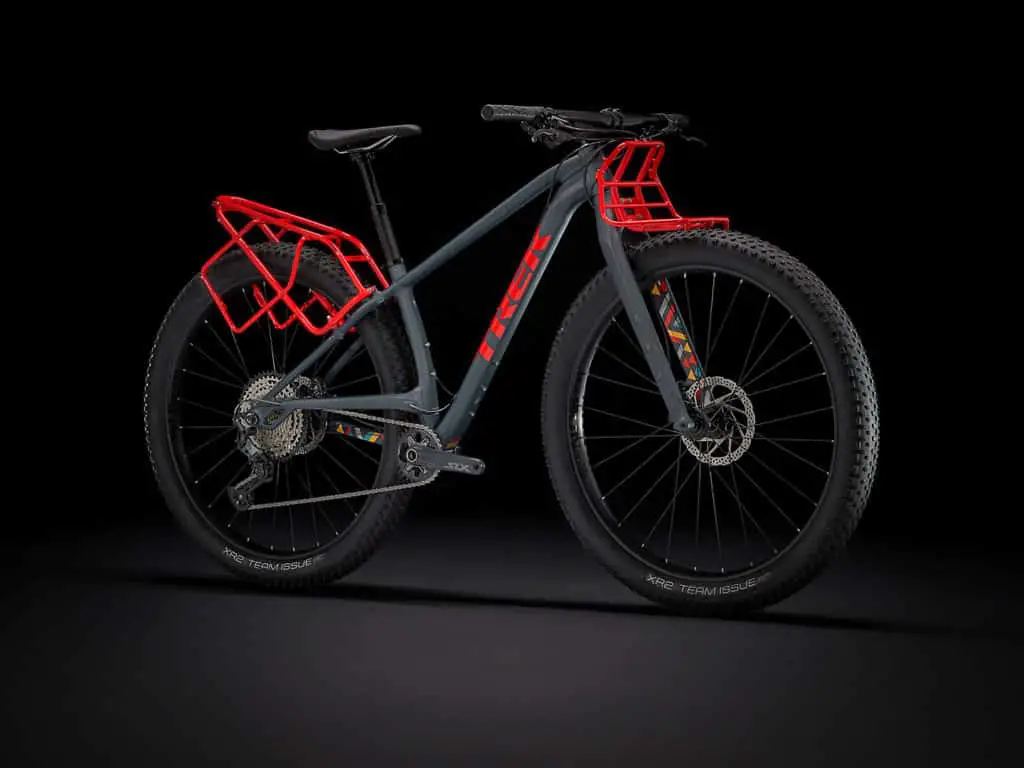
The Trek 1120 Touring bike is for bicyclists who want to take on all terrains. It has a rugged, durable frame that is also lightweight. This model is perfect for backpacking trips and bike tours because it has a heavy-duty rear rack system for hauling gear.
It is ready to go for mountain trails and more. It is built to take on any kind of terrain, no matter how rough. It is made by Trek bikes who specialize in manufacturing touring/mountain bikes for adventure rides. All of the features and components are optimized for most extreme backcountry destinations and off-road adventures.
The streamlined design has a sporty black and orange color scheme. Compared with similar mountain bikes, the Trek 1120 is lighter, faster and has more storage room. The 29+ tires are very forgiving of all terrains. One of the larger tires’ benefits is that they offer more traction, which makes for a more stable ride over bumps. It doubles as a trail bike, but it really shines for it’s off-trail capabilities.
One of the features that makes it great for bike tours is high-capacity racks and holsters for storage. This bike is best used for trails that are off the beaten path. For regular everyday riding, such as the commute to work in the city, this bike is not going to be the best choice for you because of the aggressive riding position. If you are looking for adventure, then you will love everything that this tour bike has to offer.
- Fork/Frame: Aluminum/Carbon
- Weight (L W/Racks): 29.4 LBS (13.3KG)
- Bottom Bracket: PressFit 92
- Max Tire: 29 x 3”
- Wheels: Chupacabra
- Seatpost: 31.6MM
- Hub Specs: 148 x 12MM (RR); 110X15MM (F)
- Cassette: Shimano Wide-Range 11-46 11SPD
- Handlebars: Bontrager Crivitz
- Brakes: Hydraulic Disc
- Shifters: Shimano SLX M7000
- Crank: Race Face Aeffect, 30T Direct Mount Narrow Ride
- Size: Small to Extra-Large
Things to Consider Before Buying a Touring Bike
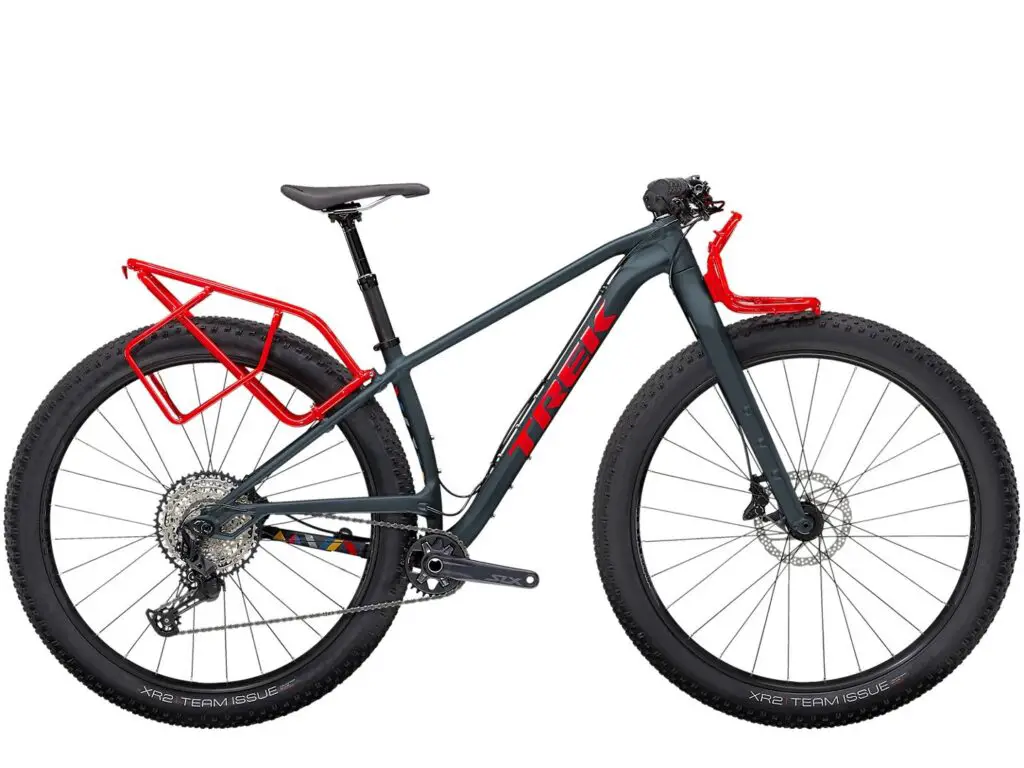
The most important thing for you to consider when shopping for a touring bike is what terrains you plan on taking on. The Trek 1120 doubles as an off-trail and on-trail bike, but its features are most optimized for taking on the roughest of terrains. It is high-performance when it comes to rocky and rough terrains, but if you plan on sticking to trails, then there are better options. For adventurous individuals who need an awesome mountain bike made for off-road adventures, this bike is a great choice.
Bike Frame Materials: When shopping for a touring bike to take on bike tours, the bike frame materials are very important because this is where most of the weight of the bike comes from. The Trek 1120 is made out of a carbon or aluminum frame, which is very lightweight yet durable.
Gears: The bike gears are what allow for the bike to reach certain speeds and determine how it handles going up/downhills. For speed and for climbing slopes there are different gears. Different types of bikes require different gearing settings. The Trek 1120 has gears that are great for trails, but it could use more gears for making climbing steep hills better.
Seat and Handlebars: The seating and positioning of the handlebars determine what riding position you will be in. The Trek 1120 has an aggressive riding position which is best for off-roading tours. It has a dropper seat post which makes it easy to get on and off the bike.
Brakes: The braking system on the bike is essential to consider for safety. The faster you plan on going, the better braking system you will need.
Features & Benefits
The features and benefits of the Trek 1120 are geared towards performance on extreme terrains. It can double as an on-trail bike as well. Here is a detailed overview of the features and their benefits.
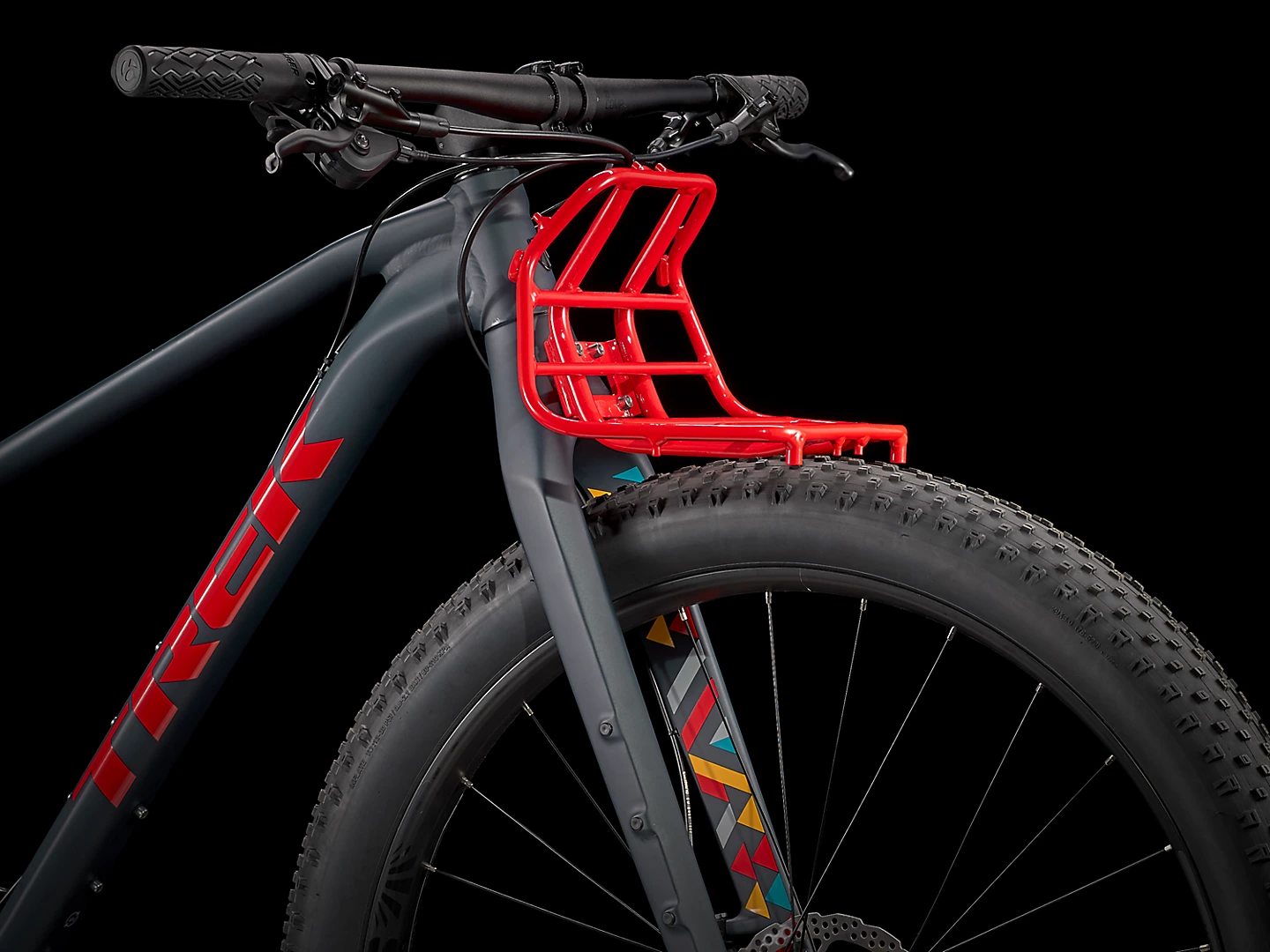
The frame of the Trek 1120 is made with durable aluminum and carbon. It is made out of Alpha Platinum Aluminum which is exclusive to the Trek brand of bikes. The rear rack system adds some additional weight, but does not slow the bike down. You can remove the storage or rear rack for greater speed as a mountain bike. The frame of the bike is designed based on Trek’s innovative Stache platform. It has many similarities to the Stache model, but with a few changes that make it more suited for off-trail performance.
The frame of the 1120 is extremely rugged as it is made to take on any sort of terrain. Because of how rugged the frame is, it does weigh a little more than some of the similar mountain bikes by Trek. Compared with a steel frame, carbon and aluminum are more lightweight. The downside to aluminum is that it is noisier than steel, but keeping it well greased will eliminate any creaking noises.
Another thing to consider about the frame is geometry. This is important to consider when choosing which size of the bike is best for you because height is not the only factor. Arm and leg length can vary for different heights, and so both the individual dimensions and the geometry of the frame contribute to the overall comfort and performance.
Frame Sizes:
- 15.5 in/Small – Rider height 5’ – 5’5
- 17.5 in/Medium – Rider height 5’3 – 5’8
- 19.5 in/Large – Rider height 5’8 – 6’2
- 21.5 in/Extra-Large – 6’1 – 6’5
Specifications:
- Alpha Platinum Aluminum
- Tapered head tube
- Internal derailleur & drop post routing
- Proprietary rack mounts
- Horizontal sliding dropouts
- 12MM thru-axle
More: Raleigh Alysa 2 Review: Your Only Needed Guide to Alysa 2 Bike
Suspension System
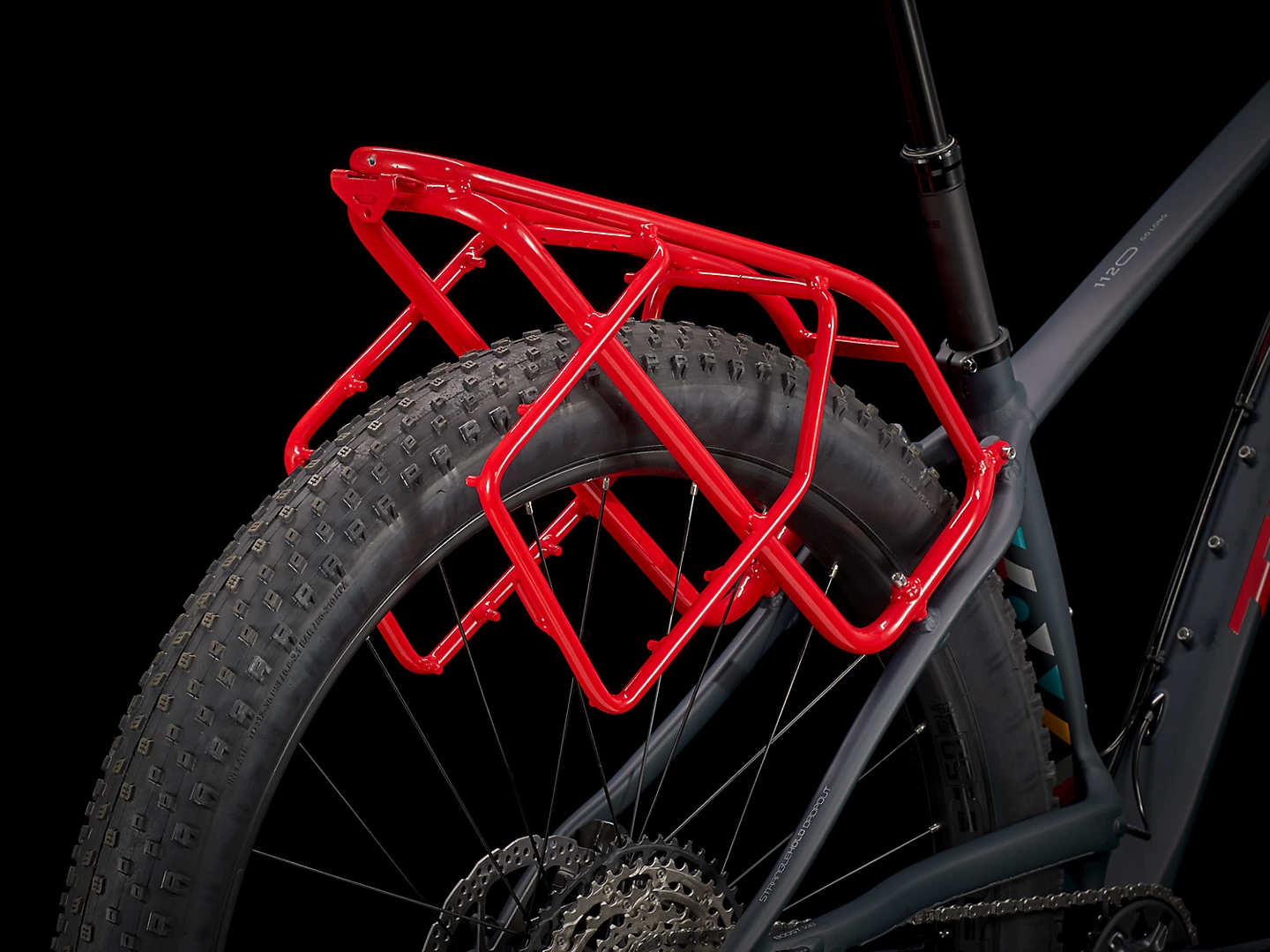
The suspension system is what insulates the rider from the roughness of the terrain. For adventure bikes, the suspension system is one of the most important things to consider because it will determine how smooth of a ride you can get on rough trails.
The Trek 1120 is outfitted with a Carbon Adventure Fork. The carbon fork suspension on the Trek 1120 is so good that many people wonder if it will be sold as a separate part for use with other bikes. Right now, the carbon fork is only available in pre-assembled bikes by Trek.
This suspension system is highly effective for insulating the rider for bikepacking trips which is the main function of the Trek 1120. The bike can easily glide over bumps like rocks and sticks without causing sudden jolts to the rider.
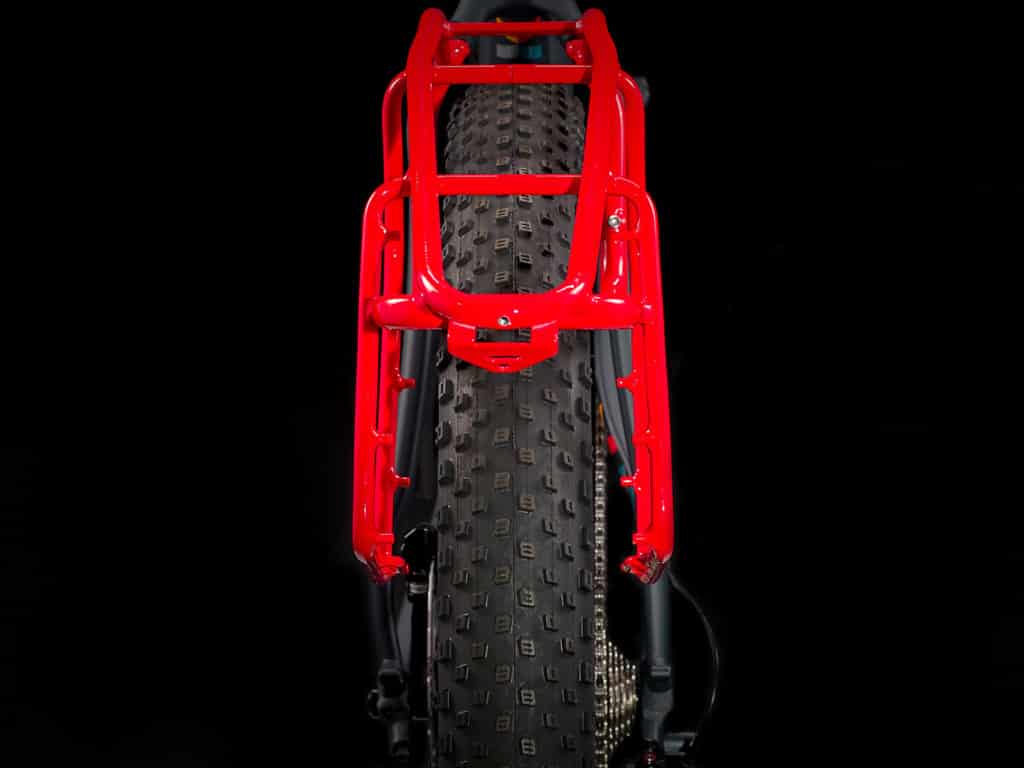
One of the standout features of the Trek 1120 is the large 29+ wheels. These wheels roll fast and offer great traction. For bumpy terrains, the large wheels help to absorb much of the impact from below. The wheels are 3+ inches wide which creates strong traction with the ground to keep the bike stable in all circumstances. With the rims on these wheels you can go tubeless. Tubeless rims allow you to reduce the tire pressure to prevent flats.
The materials used to manufacture the wheels are very strong. You can use this bike for tours with total confidence that the large, steady wheels will be highly resistant to wear and tear from the terrain. The most important benefit of the wheels of the Trek 1120 is that they are stable, strong, and create strong traction. The wheels are 28-spokes and are fairly solid, but when the bike becomes airborne, there is a small chance of the spokes becoming damaged, so keep this in mind.
- Back and front hub & skewer by Bontrager
- SUNringle Duroc 50 SL rims with tubeless tape included
- 28-spokes made out of stainless steel
- Bontrager tubeless-ready wheels with inner strength sidewalls
More: Find the Best Cyclocross Bike Under $1000 On the Market
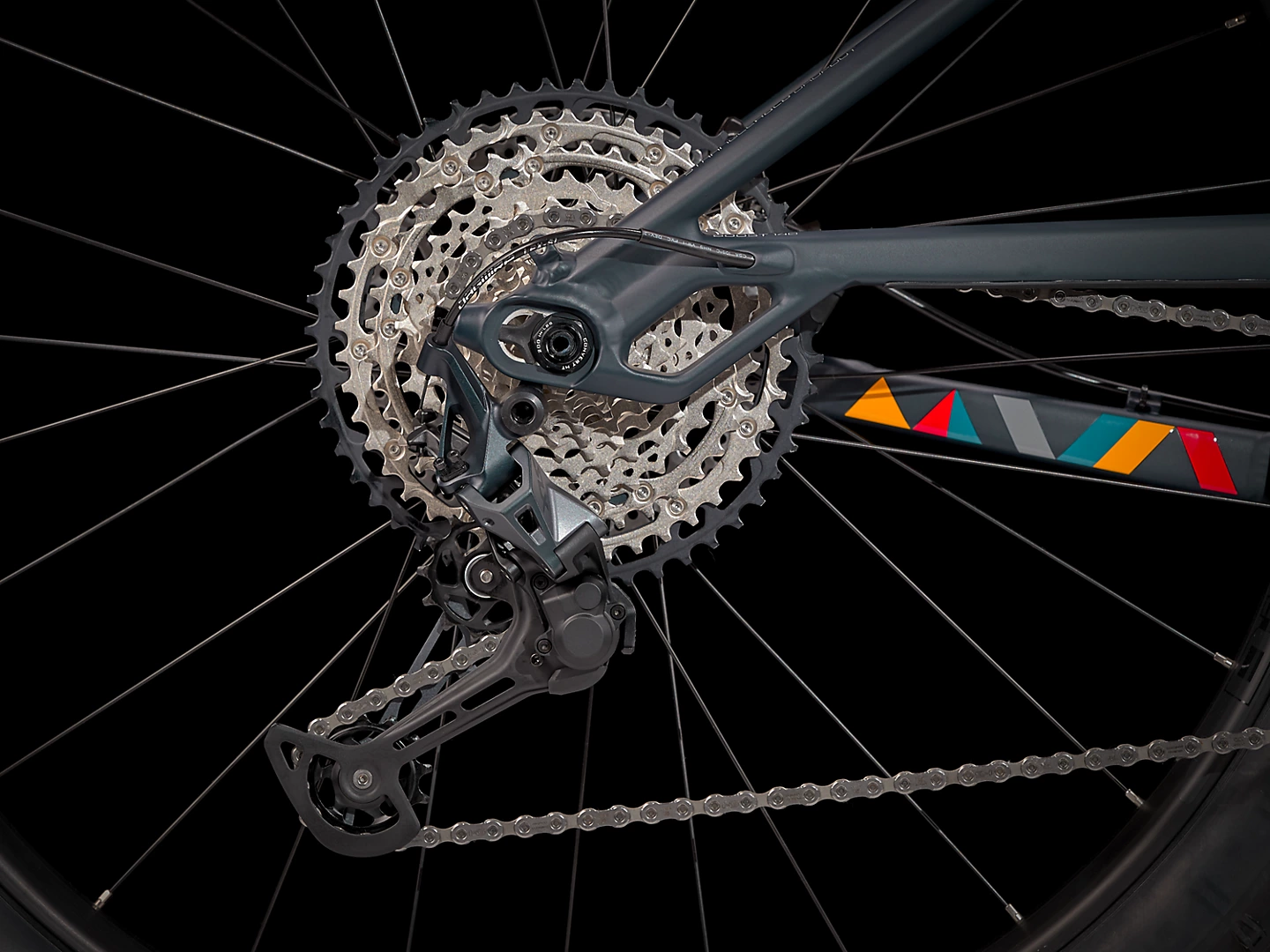
The Trek 1120 has all of the gears that you should need for long rides over difficult terrains. The only downside to the gearing system that we could find is that some people have reported that they wish the bike had gears to make climbs easier.
The wide range of 1x drivetrain is simple and effective. The 1x drivetrain is one of the features which makes the bike ready for mountain bikes. The gearing works great for gravel roads and for mountain trails. This mountain bike has a wide range of capabilities from flat terrain to extreme off-road touring.
More: Trek X Caliber 8 Review: Worth Buying Or Not?
The Trek 1120 has a range of 11-gears. The gearing system is top-quality and makes this bike versatile for both off-trail and on-trail tours. Most touring bikes manufactured this year have a 1 x 11 gear set, including the 1120.
All of the drivetrain gear components and shifters are made by Shimano. Shifting gears with this system is easy and it stays in the gear that you want without accidentally shifting out. You can use the gears to go over different terrains without damaging the chain.
- Shimano SLX M7100 12-speed shifter
- 30T alloy ring crank with 52MM chainline
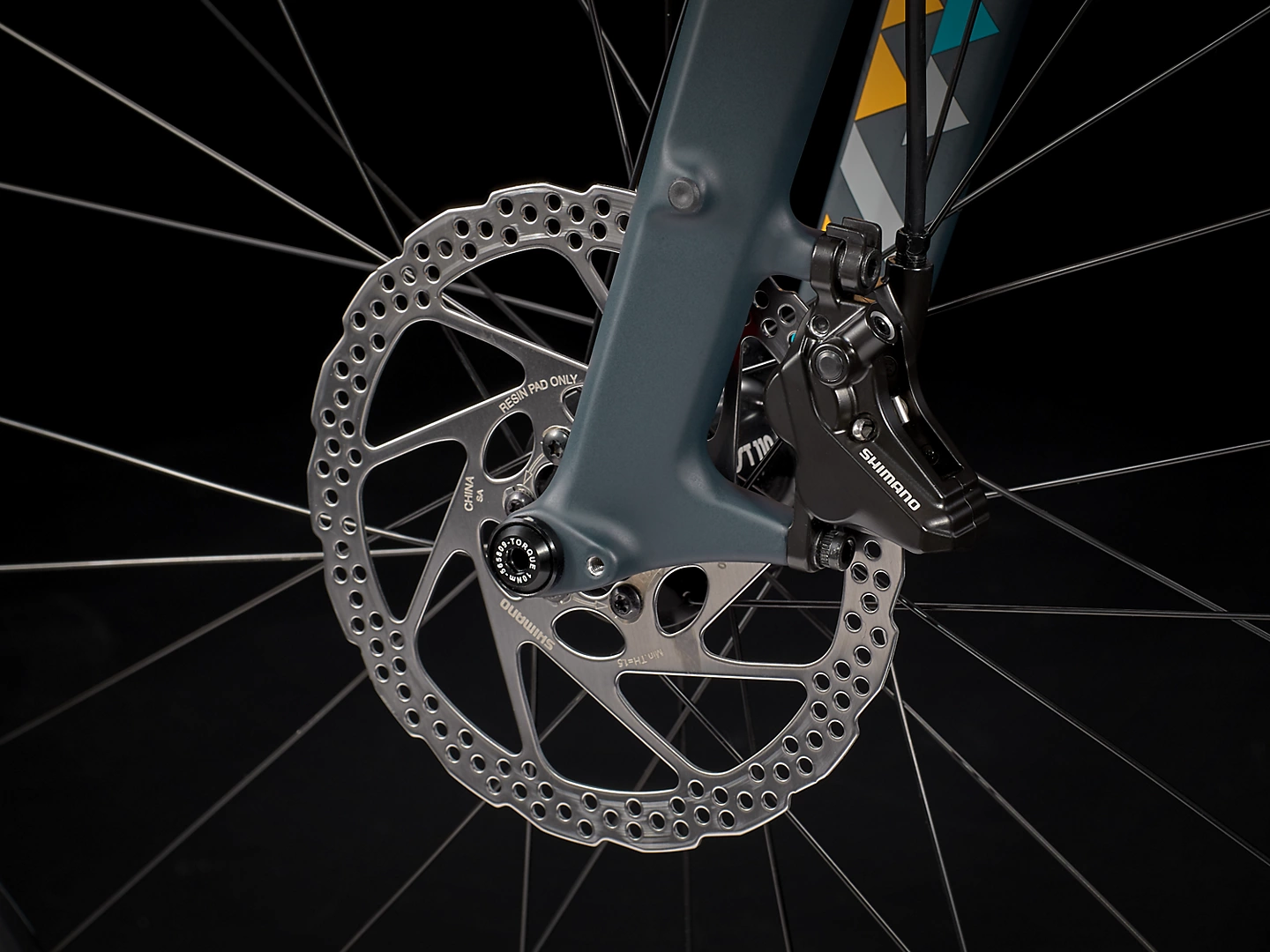
The Trek 1120 uses a hydraulic brake system. Hydraulic disc brakes are highly effective for making quick stops even in wet conditions. The brake system is made by Shimano. It has a 6-bolt Shimano RT56 brake rotor. Hydraulic braking systems offer the most powerful stopping power. You can trust this bike to come to a clean stop even in water or mud .
Compared to mechanical brakes, hydraulic brakes are high-performance in all weather conditions. Mechanical brakes use a cables system, while hydraulic brakes use pressure to force the hydraulic fluid to activate the brake pads.
- Shimano 4-piston hydraulic disc brakes
- MT4100 lever
- MT420 caliper
More: The Best hybrid bikes under $300 [Complete Review and Buying Guide
What Makes the Trek Checkpoint ALR 5 a Good Bike for Touring?
The Trek Checkpoint ALR 5 bike is highly regarded among touring enthusiasts. Its durable construction, responsive handling, and versatile capabilities make it an excellent choice for long-distance adventures. With its lightweight yet sturdy frame, the Trek Checkpoint ALR 5 allows riders to easily navigate challenging terrains. Its reliable braking system and comfortable geometry ensure a smooth and enjoyable touring experience. In a trek checkpoint alr 5 bike review , users praise its ample storage options and reliable performance, making it a top choice for bike touring.
Why Should You Trust the Trek 1120?
The Trek 1120 has been featured as one of the most top-rated mountain bikes of this year by many reputable mountain bike enthusiast websites and magazines, including a feature in Time magazine. The manufacturer Trek has their own brand of components called Bontrager. This means they can create high-quality components that are streamlined for their bikes’ performance, and most of their mountain bikes come pre-assembled with options for modifications. Trek has partnered with professional mountain bikers to promote their products and even has a scholarship program to promote diversity in cycling.
More: Best Cyclocross Bike Under $1500 [Review and Buying Guide]
Alternatives
Trek has a comprehensive line of mountain bikes. Here is a summary of how the Trek 1120 compares with the Stache and the Trek 920 models.
Trek 1120 vs Stache
The Trek 1120 is very similar to the Stache. They look very similar and the Trek 1120 borrows many of the same stylistic components as the Stache, but they vary somewhat in performance. One of the features that is different on the Trek 1120 is that it has a longer chainstay.
This, along with the shorter tube and steeper head angle, all work together to make the Trek 1120 better for rough, off-trail terrains than the Stache. The Trek 1120 is optimized for lower speeds and rougher terrain than the Stache,
Trek 1120 vs Trek 920
The Trek 1120 is a bikepacking bike whereas the Trek 920 is a conventional touring bike. The 920 has 12-speeds compared to the 1120, which has 11. There is a lot more room for storage on the Trek 1120 than the 920.
They are similar in that they both have an aluminum frame and hydraulic brake system. Trek 1120 has a more aggressive riding position which is better for rougher terrains, and the Trek 920 is more comfortable for riding on long rides with lots of road and flat trails.
More: Why the Trek Verve+ 2 Should Be Your Next Hybrid E-Bike
The Trek 1120 is a powerful, durable touring bike that is best used when you need a bike that can handle all kinds of terrains. For road use, the riding position of the bike is a little too aggressive to be comfortable for long periods. It shines the most when used for touring that requires lower speeds and over off-road terrains. It has a great rear rack system for storing your gear on your tour. It is a top-rated mountain bike for adventurous cyclists.
About The Author

Daniel Shakibaie
Want To Receive Exclusive Offers, Tips & Freebies?
More To Explore

8 of The Best Cycling Routes in Cotswolds (Unforgettable Rides)
6 best mountain bike brake pads for reliable stopping power.

Uncover the Best Cycling Routes in Jordan for Adventure Seekers

Explore the Best Cycling Routes in Iceland – Adventure Awaits
Subscribe to newsletter.
We hate spam so we pinky promise that we will only send you the good stuff. Sign up to our weekly newsletter to get tips, tricks & freebies😲
Affiliate Disclaimer
Please note that some of the links on ‘Outdoor Lab With J’ are affiliate links. This means we may earn a commission, at no additional cost to you, if you click through and make a purchase.
We only endorse products and services that we have personally used or believe to be valuable to our readers.
Our primary goal is to provide helpful and informative content, and any commissions help us maintain the site and continue to produce quality content. Thank you for your support.
Bikes By Brand
- Priority Bicycle
- Rad Power Bikes
Biking Guides
- Mountain Bike
- Hybrid Bike
Legal & About Us
- Terms & Conditions
- Privacy Policy
- Earning Disclaimer
Trek Checkpoint SL 7 gravel bike review: a true all-terrain vehicle
Trek's 'Adventure focused' lives up to bikepacking expectations, with stable geometry and practicality
- Sign up to our newsletter Newsletter
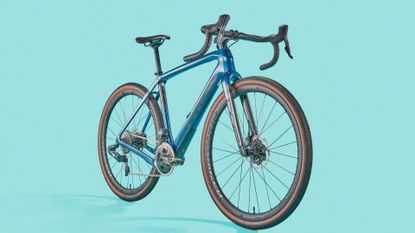
The Trek Checkpoint SL 7 is an outstanding all-rounder when it comes to all-terrain riding. A true ATV, the Checkpoint provides a planted, confidence-inspiring ride feel which is great for tackling more technical terrain. It might not be as supple as the likes of the Cannondale Topstone, but if long-distance trekking on tough terrain is your bag, the Checkpoint SL 7 is right on the money.
Planted ride feel
Compliant frameset
Handles luggage weight very well
In-frame storage is genuinely useful
Rugged ride feel won't be for everyone
You can trust Cycling Weekly. Our team of experts put in hard miles testing cycling tech and will always share honest, unbiased advice to help you choose. Find out more about how we test.
- Value and conclusion
Gravel riding is a discipline that holds a vast range of different bikes within its sphere, from gravel race bikes, to do-it-all rugged machines. Trek markets the Checkpoint SL range as its 'Adventure-focused' line, and I think they've got it spot on.
Having tested the Checkpoint SL on everything from roaming local trails to an overnight bikepacking excursion (fully laden with camping gear) I can confirm that if you are on the hunt for your next adventure gravel machine, then the Checkpoint SL 7 might just be one of the best gravel bikes on the market.
Trek Checkpoint SLR 7: Frameset
Since its last iteration which came out all the way back in 2018, Trek has given the new Checkpoint platform some serious revamping. The tubes are much chunkier now, giving the bike a much more industrial aesthetic.
Trek still includes an 'IsoSpeed decoupler' at the seat stay junction - this is a pivot system, similar to Cannondale's 'Kingpin' which allows the seat post to flex fore and aft. This, alongside a standard 27.2mm seat post, is designed to give the bike some extra compliance where the rider will feel it most. Though, I found it doesn't offer quite as much real-world travel as the Cannondale equivalent.
One big change over the last iteration is the extinction of 'Stranglehold'. The system enabled chain stay length adjustment of up to 15mm (and single speed conversion!), which meant riders could alter the geometry between a slightly more stable ride (with longer chainstays), or a more playful one (shorter chain stays).

27.2mm carbon seatpost and ISO speed help compliance
Trek has opted for 435mm chainstays across all models - 10mm longer than the previous shortest setting. This does change the ride feel, which I will get onto, making for a more stable feeling rear end. Once again this characterizes the Checkpoint SL at the more adventure end of the gravel riding spectrum .
The in-frame storage is perhaps the most radical part of this bike's dedication to long-distance riding, and It works well. A section of the frame underneath the bottle cage on the downtube can be quickly released via a small lever, revealing room for a tool roll, and spares. While the 'boot capacity' is nothing overwhelming, it does provide a neat place to hide away annoying spares, like the odd tube, or smaller mini-pumps .
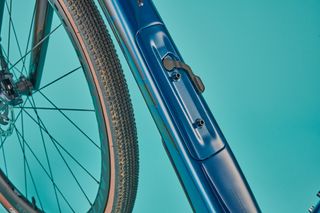
In-frame storage for tools
Trek has also included a plethora of mounting points - three bosses can be found on each fork blade, and the bike even holds the capability to mount a rear rack, which I think is a very underrated option for modern-day bikepacking, even if it isn't the most trendy. As well as these options, the usual suspects can be found with mounting points on the top tube, and underneath the down tube as well.
Notable too is the tire clearance. The new Checkpoint SL is good for 45mm tires when coupled with a 700c wheelset, but this can be upped to a 2.1 inch (53.3mm) for those who like the playful handling of a slightly smaller 650b wheelset. For the rough, and extremely varied terrain in my local testing ground, this too offered some much needed ride forgiveness.
Trek Checkpoint SLR 7: Components
The full Trek Checkpoint SL line-up spans a price range from $3,399.99 / £3,700.00 with the SL 5 to £6,400 with the SL 7, which is the model I had on test. This may be the top of the range for the 'SL' frameset, but it's worth noting with the SLR framesets, builds are priced as high as $12,249.99 / £12,000.00.
Nonetheless, the Checkpoint SL 7 still boasts some pretty high-performance parts, starting with the dependable SRAM Force AXS groupset . Trek opts for a two-by setup rather than a one-by system, which I think, for most consumers, will still be the better option.
43/30t chainrings coupled with a 10-36t cassette provide a wide range of gears, which is great news for long-distance riders, especially those who carry luggage and this never left me feeling under, or over-geared.
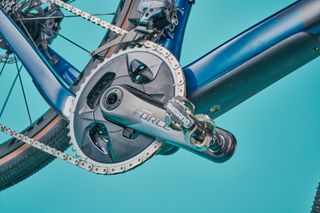
Sram Force AXS groupset throughout
The checkpoint SL 7 rolls on in-house component brand Bontrager Aeolus Pro 3V carbon wheels, which feature a 25mm internal rim width and a particularly loud freehub.
Though both the wheelset, and provided Bontrager GR1 tires are both tubeless-ready, the SL 7 comes out of the box with tubes to get started. Although I didn't set up the tires tubeless, it should be pretty easy, especially with a full Bontrager system. Bontrager provides rim strips, which snap into the Aeolus wheels, and are designed to work with Bontrager tires, meaning tight tolerances can be adhered to throughout the product range.
The finishing kit is a fairly standard affair, which can leave a little to be desired from a price standpoint, but then again it should be fairly robust. You do get Bontrager's carbon 27.2mm seat post, but both bars and stem are an alloy affair, with the 54cm frame on test coming stock with 420mm (center to center) bars, which are slightly flared, and a -7 degree 80mm stem.
Trek Checkpoint SLR 7: The ride
As I mentioned all the way back in the intro, this bike got a jolly good reviewing. With gravel bikes often marketed as the 'do-it-all' bike option, I always see fit to test gravel bikes on a whole host of terrain.
I treated the Checkpoint no different, treating it to a heap of different obstacles. My first ride was a shorter blast around a local test loop, which encounters everything from fire road to steep single track and even some small jumps. This loop allows me to gain a pretty good tell on a bike's character from the off, and it is fair to say the Checkpoint certainly lies at the more stable end of the spectrum.
The Checkpoint handled all the terrain perfectly well, but offered a more straightforward ride characteristic when compared with a more flamboyant handling bike like the Cannondale Topstone Carbon 3 . For those who like a more dependable ride, this will be great news, but as someone whose riding is catered to a more playful experience, the Checkpoint wasn't quite so up my street.
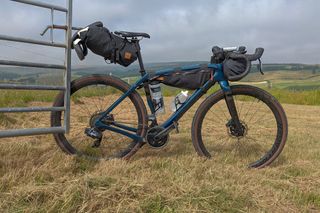
Bikepacking setup for a real test
Longer rides, and in particular, bikepacking , is where this gravel machine truly comes alive. I took the SL 7 on a (shortened due to illness) one-night trip around the Isle of Wight during testing, and this really allowed me to get to grips with the bike when fully burdened with all the equipment needed for a rough night's sleep away from home.
The bike remained totally balanced even when loaded up with a saddle pack, frame bag, and bar bag. The in-frame storage too was super useful - as previously mentioned it might not be a huge amount of real estate, but in practice, I found it was just enough to stop me from sacrificing a heavier base layer as I was able to stow away multi-tool, mini-pump, and a tube all in the tool roll. At 8.9kg too, this does make a great bikepacking platform, being rugged whilst not carrying excess weight.
When it came to the steep ups and downs synoptical with the Isle of Wight, the Trek did not falter - in the same breath however, it did not blow me away. While the chunky tubing provides great power transfer and a truly robust feeling ride, I found the ride quality to lack the excitement of other gravel bikes I have tested. The best comparison is the Cannondale Topstone Carbon 3, which, though a heavier bike, at 9.22kg, actually feels lighter and more supple than the Checkpoint.
That said I did feel like I could throw the bike at absolutely anything, loaded up with gear or not, especially with the slightly flared bars, which offered great control.

Tire clearance of up to 45mm
For me, this comes down to geometry, and it is a double-edged sword. The Checkpoint, with longer chain stays than many of the best gravel bike contenders, is undoubtedly a more stable and planted ride - and some consumers will love the imposing ride feel this brings, but for others who favor a more supple ride quality, it might not be the bike for you.
It is important to note though, this is not a criticism, much more a characterization of the bike. As gravel riding spans such a wide spectrum, it is essential to consider what riding you prioritize, and what characteristics you want out of a gravel bike.
Trek Checkpoint SLR 7: Value and conclusion
Value aside, the Trek Checkpoint SL 7 is probably the best gravel bike I have ever tested when it comes to bikepacking. An unbeatable ride feel, especially when loaded, made for super easy riding on any sort of terrain, even when tiredness loomed heavy at the end of long days of riding. We tested 9 off-road machines to crown our gravel bike of the year , with the Trek Checkpoint SL 7 winning our 'best expedition bike' title.
Include value too ($6,699.99 / £6,400.00 for the SL 7 we tested), and I think Trek is still on the money, but equally not groundbreaking. The most obvious competitor to the do-it-all Checkpoint is the Specialized Diverge Expert Carbon, which retails for a very similar $6,200.00 / £6,500.00. For a similar price, specialized matches the spec pretty much to every dotted T, also featuring carbon wheels, a second-tier SRAM AXS groupset (albeit one-by SRAM GX AXS), and alloy finishing kit.
There are certainly better value bikes out there though - the Giant Revolt Advanced Pro 1 for example, which won our overall best gravel bike of the year retails for $5,500.00 / £4,899.00, which is considerably more palatable than the SL 7. You do only get SRAM Rival AXS at this price point, and it doesn't feature the same number of mounting points if out-and-out exploration is what you are looking for, but it is still worth considering.
Trek Checkpoint SLR 7: Specs
Thank you for reading 20 articles this month* Join now for unlimited access
Enjoy your first month for just £1 / $1 / €1
*Read 5 free articles per month without a subscription
Join now for unlimited access
Try first month for just £1 / $1 / €1
Get The Leadout Newsletter
The latest race content, interviews, features, reviews and expert buying guides, direct to your inbox!
Joe is Cycling Weekly's tech writer. He's always had a love for bikes, since first riding a two wheeled steed before the age of four. Years down the line, Joe began racing at 16, and enjoyed great experiences internationally, racing in Italy, Spain and Belgium to name a few locations. Always interested in tech, Joe even piloted his Frankenstein hill climb bike to a Junior National Title in 2018. After taking a step back from elite level racing in April 2022, Joe joined our team as a freelancer, before becoming Tech Writer in May 2023.

We'll see triathlon superstar Taylor Knibb doing double duty, being the first American athlete to qualify in two sports at the 2024 Olympics
By Anne-Marije Rook Published 21 June 24

Italian Renaissance tribute or bus seat pattern? Social media has its say on Visma-Lease a Bike's new colours
By Tom Davidson Published 21 June 24

Earl Blumenauer's Domestic Bicycle Product Act proposes multiple methods to encourage brands to manufacture their bikes in the U.S. instead of overseas.
By Kristin Jenny Published 21 June 24
Useful links
- Tour de France
- Giro d'Italia
- Vuelta a España
Buyer's Guides
- Best road bikes
- Best gravel bikes
- Best smart turbo trainers
- Best cycling computers
- Editor's Choice
- Bike Reviews
- Component Reviews
- Clothing Reviews
- Contact Future's experts
- Terms and conditions
- Privacy policy
- Cookies policy
- Advertise with us
Cycling Weekly is part of Future plc, an international media group and leading digital publisher. Visit our corporate site . © Future Publishing Limited Quay House, The Ambury, Bath BA1 1UA. All rights reserved. England and Wales company registration number 2008885.
SORT CONTENT BY LOCATION
CLICK TO DRILL DOWN BY COUNTRY/PROVINCE
Your browser is ancient! Upgrade to a different browser or install Google Chrome Frame to experience this site.
Inspiration
- Bikepacking 101
- Join/Support

- View Latest/All
- Bikepacking Videos
- Your Stories
- Rider's Lens
- Field Trips
Popular Tags
- #bikerafting
- #Tour-Divide
- #family-bikepacking
- #winter-bikepacking
- #1Q5V (1 Question 5 Voices)
Gear/Reviews
- Bikepacking Bags
- Camping Gear
- Accessories
- #Editors-Dozen (Our Favorite Gear)
- #Gear-of-the-Year
- #MYOBG (DIY)
- #Decade-in-Review (Best of All Time)
The Gear Index
Latest indexes.
- Mini Panniers
- Saddlebags & Top Openers
- Cargo Cages & Anything Bags
- Gravel Bars
- Drop Bar 29ers
Bikepacking Bikes
- Rigid & Plus Bikes
- Drop-bar & Gravel
- Full Suspension
Rigs & Roundups
- Rider & Rig
- Race/Event Rig Roundups
- Worthy Builds
- Handbuilt Bikes
- #29+ (29-plus)
- #vintage-mountain-bikes
- #cargo-bikes
- Readers' Rigs (Dispatch)
- New Bikes (Dispatch)
Plan Your Trip
- Bikepacking Guides
- Bikepacking Food
- Gear & Pack Lists
- Bike Photography
Essential Reading
- Leave No Trace (for Bikepackers)
- Guide To Bikepacking Bags
- Bikepacking Gear That Lasts
- #Bikepacking-Awards
- Power Of An Overnighter
- Advice For New Bikepackers
- Our Favorite Bikepacking Routes
-
Where to Begin
We have over 300 original and curated bikepacking routes in our global network spanning nearly 50 countries.

Start at our worldwide routes map to dig into our detailed guides with GPS maps and inspiring photography.
By Location
- The United States
- Latin America
- Middle East
By Length (days)
- Overnighters & S24O
- Weekend Routes (2-4)
- Week-long Routes (5-10)
- Odyssey Routes (11-30)
- "Freakouts" (31+)
Local Overnighters
The Local Overnighters Project is a unified effort to document and map one-night bikepacking routes all over the world—by locals, in their own backyards.
The Bikepacking Journal is our biannual printed publication. Each issue features a collection of inspiring writing and beautiful photography. Find details on the three most recent issues below, join the Bikepacking Collective to get it in the mail (anywhere in the world), or click here to find a collection of selected stories in digital format.

The special edition 10th issue of The Bikepacking Journal is one you won’t want to miss! It features 25% more pages with extra stories, bonus art and maps, and much more...

Issue 09 takes readers on trips through time—one to the early days of bicycles—and offers several reminders to be grateful for supportive friends and family, and strangers we meet along the way...

For Issue 08, we invited several contributors to return and pick up where earlier trips and ideas left off and also feature a handful of first-timers whose perspectives we’ve long been eager to share...

Justinas Leveika’s 2024 Tour Divide Bike Check and Race Strategy (Video)
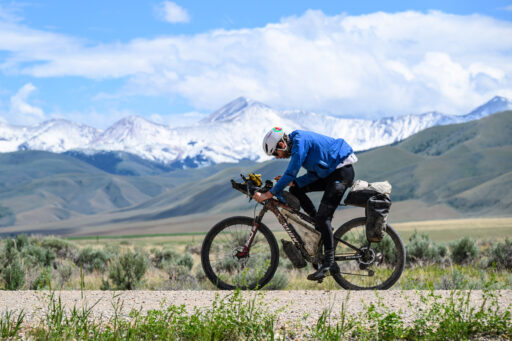
Previous Dispatch From Thu Jun 20, 2024
2024 Tour Divide Debrief: Days 5-6

Justinas Leveika, the current 2024 Tour Divide frontrunner, caught up with the team at Tailfin before the race to chat about his bike setup and game plan to go after an overall win. Watch the video and learn more about his bike and gear here…

Often called the nicest man in ultra racing, Justinas Leveika still had a plan to conquer the 2024 Tour Divide and improve on his second-place finish in 2023. And considering he’s currently in the lead, I’d say he’s doing a good job at it. Tailfin had him visit their HQ in Bristol to finalize the tweaks to his setup before he flew to the US for the race. Naturally, during his visit, Tailfin took the opportunity to ride the local trails with him and gain insights into his current setup and thoughts on the Tour Divide. Watch it below, and scroll down for more details on his bike.
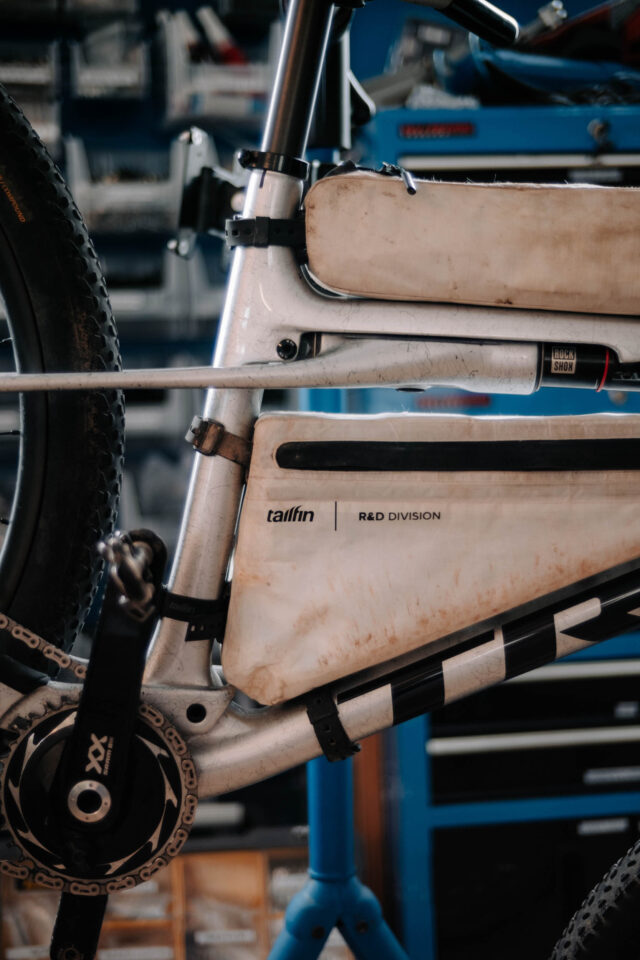
This isn’t the only bike check for Justinas we have on the site. You can find links to a couple of others in the Further Reading grid below, plus you can see the Trek Procaliber he rode in the 2023 Tour Divide in the drop-bar rigs roundup from last year.

Justinas’ 2024 Kit
- Frame: Trek Supercaliber, 80mm travel
- Fork: Fox 34 SC Performance Elite, 110mm travel
- Drivetrain: SRAM AXS Transmission XX SL
- Brakes: Magura MT8
- Wheels: Hunt Prototype Proven Carbon, 29”
- Tires: Continental RaceKing
- Handlebar: Bontrager XXX Carbon
- Seatpost: Bontrager XXX Carbon
- Saddle: Bontrager Aeolus
- Top Tube Bag: Pre-production Long Top Tube Bag
- Frame Bag: Prototype/custom Frame Bag
- Rear Bag: Prototype RacePack
Further Reading
Make sure to dig into these related articles for more info...
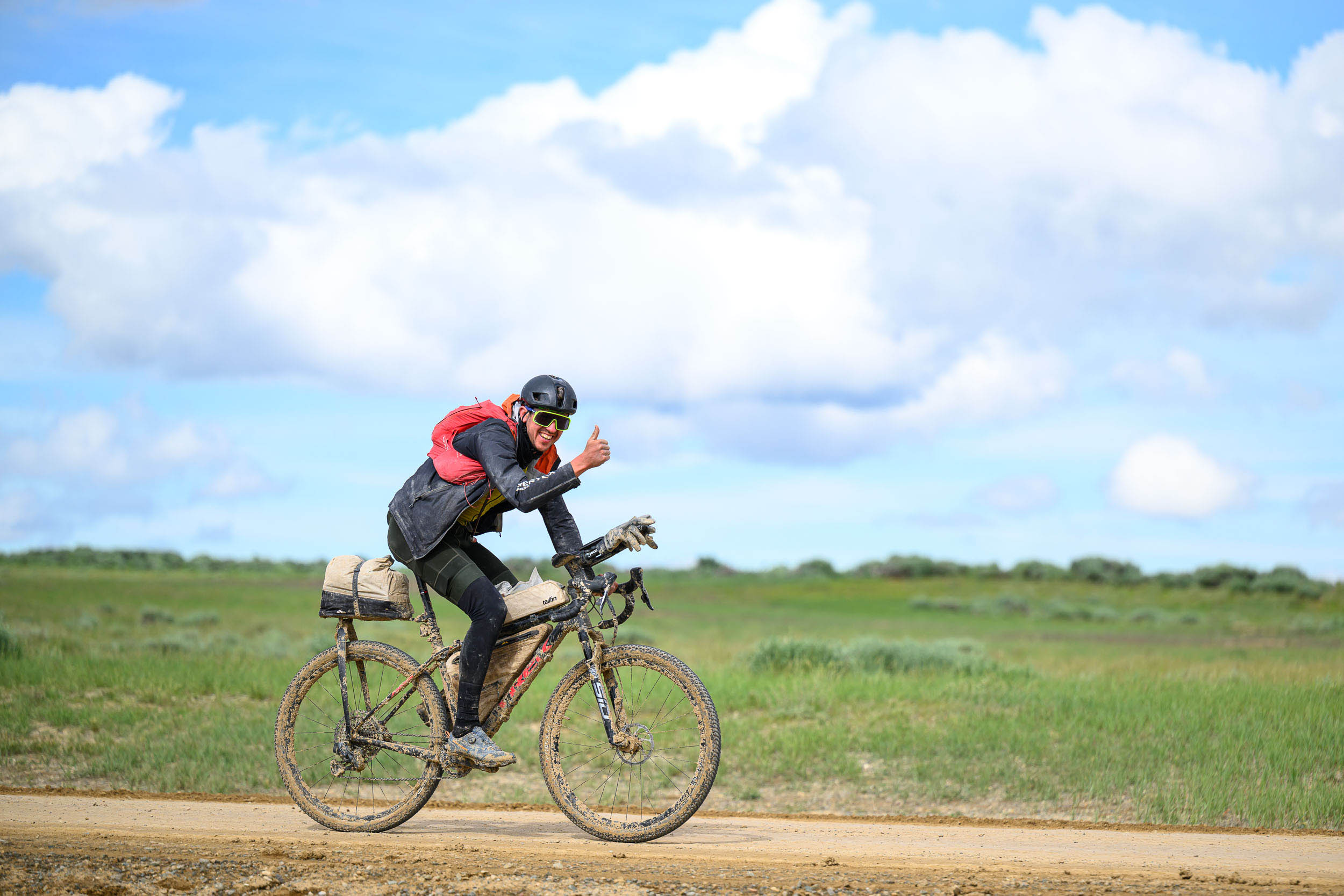
Congrats to Justinas Leveika, Second-Place Finisher in the 2023 Tour Divide
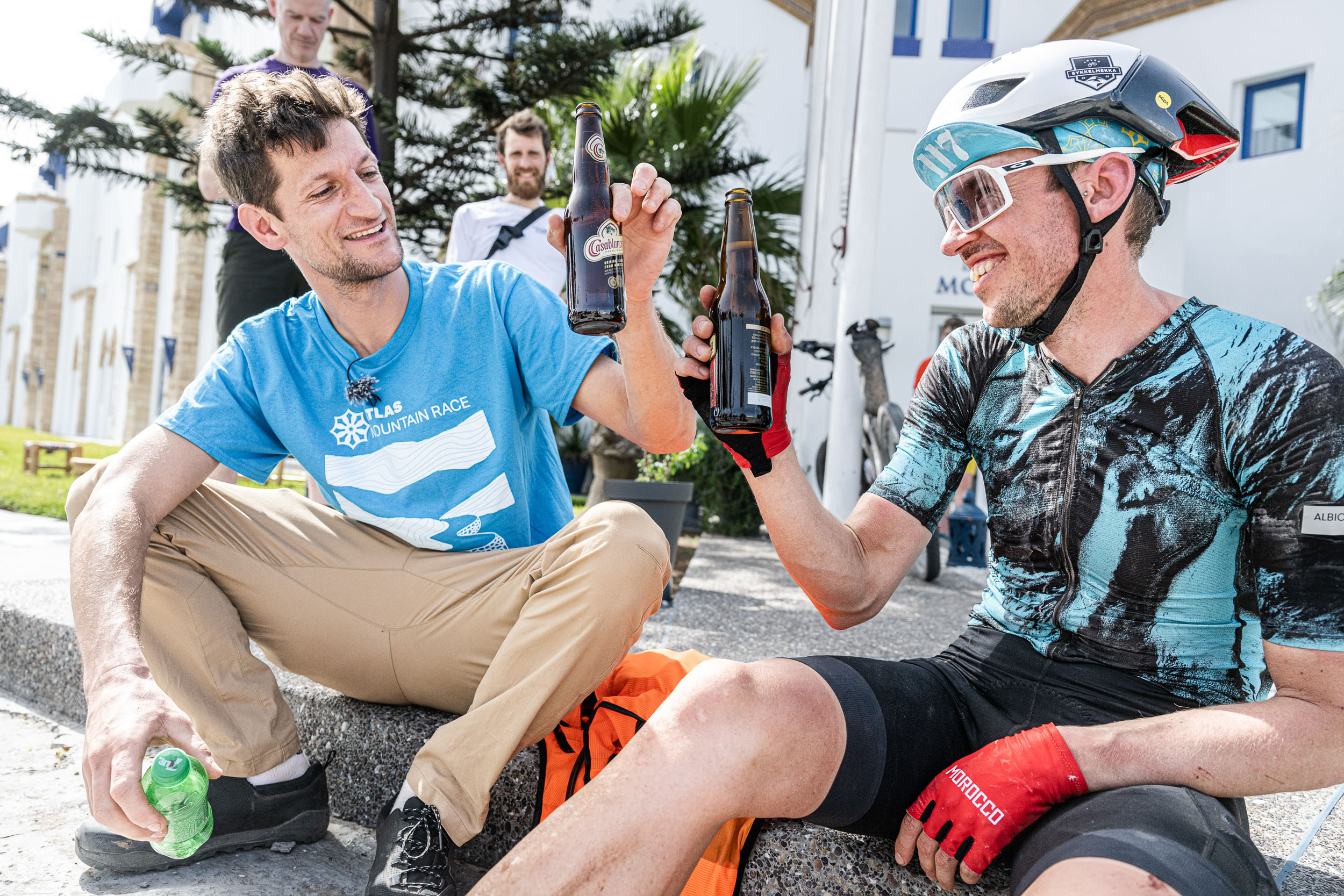
Justinas Leveika Wins 2024 Atlas Mountain Race

Tour Divide Bike Checks: Chris Burkard and Justinas Leveika


Rigs of the 2023 Tour Divide (Part 1): Drop-Bar Bikes
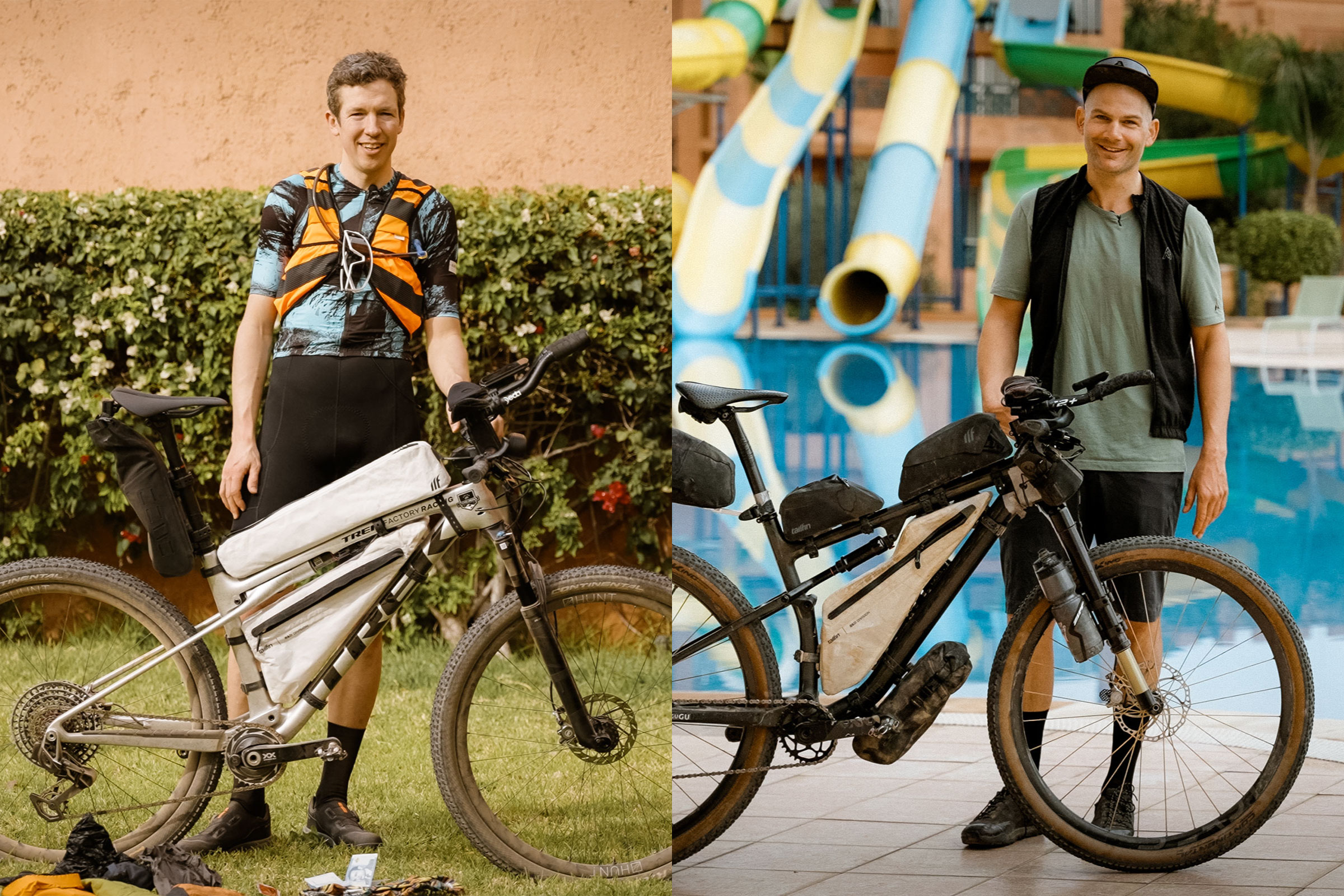
Two More 2024 Atlas Mountain Race Bike Checks

FILED IN (CATEGORIES & TAGS)
Please keep the conversation civil, constructive, and inclusive, or your comment will be removed.
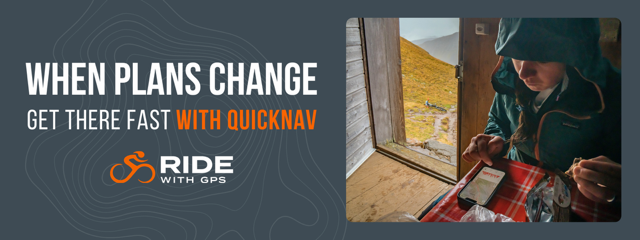
Rad Companies that Support Bikepacking

You need to be logged in to use these features. Click here to login , or start an account if you’re not yet a member of the Bikepacking Collective…
The best electric bikes of 2024
Our picks for the best electric bikes for riders of all types and budgets, based on dozens of reviews and tests.
- The best for most people
- Best budget ebike
Best fat tire ebike
- Best for commuters
- Best electric dirt bike
Best under $1,000
Best cargo ebike, best folding ebike, best front-storage cargo bike, best for long distances, ebike specs compared.
- What to look for
- Ebike rules and regulations
Meet our testers
- How we test electric bikes
The best electric bike for most people

It's not the flashiest, but we think the RadCity 5 Plus will more than fit the needs of most riders. It's comfortable, offers plenty of power, and comes with lights, fenders, and a rear rack for your gear. Plus, RadPower makes a lot of accessories that let you easily customize the bike.
In our tests, we found the RadCity 5 Plus to be responsive and powerful enough to get us up and down hills easily, and do so in comfort. It is a bit heavy at 64 pounds, but that should only be an issue if you try to go farther than it's 55-mile range.
Read more below
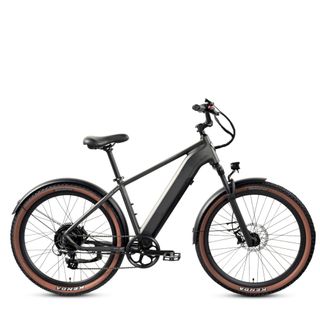
For those who don't want to spend too much on an ebike, the Ride1Up Turris offers just about everything you could want, with few compromises.
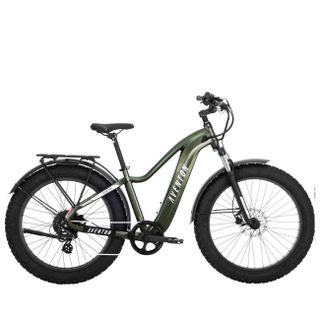
If you're looking for an ebike that can go anywhere, look no further. This bike is responsive, stable in all conditions, including snow, has both lights and turn signals, and even comes with fenders.
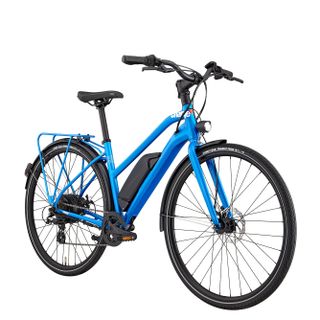
This affordable ebike has a neat feature: Its handlebars can turn sideways, so it'll take up less room when you have to store it in a hallway or some other cramped space. It's also fairly light, has a great range, and has a built-in rear rack.
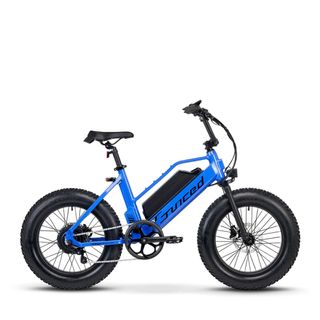
This BMX-style fat tire bike delivers some great thrills on trails and dirt paths. It has a powerful motor to get you around, but no suspension.
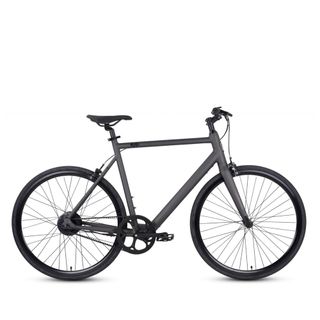
This lightweight ebike lacks some niceties you'll find on more expensive rides — you'll have to provide your own lights and fenders — but it delivers a zippy ride around town at a great price.
Read more below .
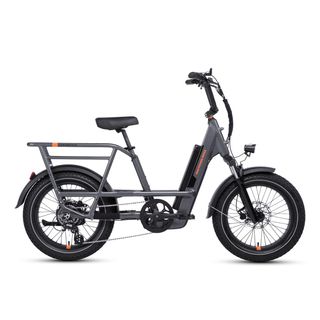
A truly versatile ebike that can be configured with dozens of accessories. It's also compact, powerful, very comfortable to ride, and one of the most affordable cargo bikes around.
Click to view more products...
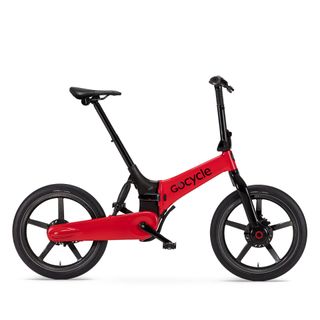
This futuristic-looking ebike is made from carbon fiber, which keeps its weight to just 36 pounds. It has a speedy electronic shifter, responsive and powerful motor, and a great range for something this small. It ain't cheap, though.
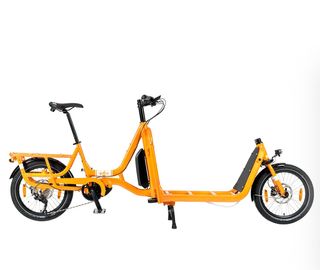
When you need to haul really big loads, the Supercargo CL is your best bet. It has a ton of space, yet is very stable and even fun to ride.

With dual batteries, this bike has the endurance to get you wherever you need to go. And, it's often on sale for a very reasonable price.

1. The best for most people 2. Best affordable ebike 3. Best fat tire ebike 4. Best for commuters 5. Best electric dirt bike 6. Best under $1,000 7. Best cargo ebike 8. Best folding ebike 9. Best front-storage cargo bike 10. Longest-range e-bike 11. What to look for 12. Electric bike FAQ 13. Ebike rules and regulations 14. How we test ebikes
The best electric bikes are an ideal choice if you want to cut down on the time you spend in the car. From quick daily commutes to short trips into town, these bikes can help you get up to speed and climb slopes with relative ease.
But it can be hard to tell how they really perform until you take a ride. That's why we put the best electric bikes to the test, to help you find the right ebike for your needs, whether you want to head into the office or take a leisurely ride.
After hours on the road, we felt that the Rad Power RadCity 5 Plus is the best electric bike overall, as it was comfortable, has three levels of powered assistance and the battery lasts 50 miles, so it should easily see you through most trips.
Fortunately, that's not your only option. If you're after a different design, increased range, or alternative features, we've rounded up the best electric bikes you can buy right now. Or, if you're after an option that won't break the bank, consider the best budget electric bikes instead.
The best electric bikes you can buy today
Why you can trust Tom's Guide Our writers and editors spend hours analyzing and reviewing products, services, and apps to help find what's best for you. Find out more about how we test, analyze, and rate.
best electric bike
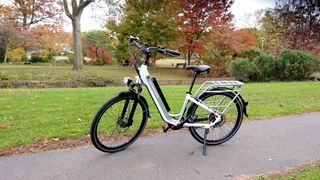
1. Rad Power RadCity 5 Plus
Our expert review:
Specifications
Reasons to buy, reasons to avoid.
For the vast majority of riders, the Rad Power RadCity 5 Plus will be the best electric bike. It has a comfortable design, plenty of power, and a multitude of mounting points for things such as baskets and child seats. Plus, it comes with a rear rack and mudguards. Its 7-speed shifter, combined with three levels of pedal assistance and a twist throttle is more than enough to get you up even the steepest of hills.
Rad Power says that the RadCity5 should get upwards of 50+ miles on a charge; in our testing, it came fairly close — about 40 miles.
We really enjoyed pedaling around on this bike, which is offered in both step-through and step-over models. Its battery, while not fully integrated into the downtube, provides plenty of range, and can also be used to charge your phone (with the right adapter). The one caveat is that this bike weighs a hefty 64 pounds, so you're not going to want to lug it up stairs.
At a starting price of $1,999, it's reasonably affordable, but you should check out our Rad Power Bikes promo codes for the latest discounts.
Read our full Rad Power RadCity 5 Plus review .
Best affordable ebike

2. Ride1Up Turris
While there are plenty of great electric bikes that cost more than $2,000, the Ride1Up Turris shows that you can get a lot of value from an ebike that costs much less. During our testing, we found the Turris' 750W motor to be more than powerful enough for most situations. We were equally impressed with how quickly it responded when we started pedaling, as many budget ebikes exhibit a slight delay in these situations. (There was a slight lag when using just the throttle, though).
Other standout features include its mechanical disc brakes, easy-to-read digital display, and bright 60 Lux headlight. Included front and rear fenders helped keep our clothes clean on wet days, and its wide, 27.5 x 2.4-inch tires made for a comfortable ride — so much so that we thought that the front suspension felt a bit extraneous.
There's no taillight, so you'll want to check out our picks for the best bike lights , and unlike some pricier ebikes, you'll have to assemble a few pieces of the bike yourself, including the handlebars, front wheel, and pedals. We also had to make a few adjustments to the fenders, which might mean a trip to your local bike shop.
But for those who want an affordable electric bike to get around town, the Turris should be at the top of your list.
Read our full Ride1Up Turris review .

3. Aventon Aventure.2
If you're looking for a fat-tire electric bike that's less than $2,000, the Aventon Aventure.2 is hard to beat. It's as good off-road as it is on pavement, has a beefy battery and a clear color display, as well as fenders that'll save your clothes from getting too muddy. Other niceties include a brake-activated rear light and turn signals.
The Aventure.2 has both pedal-assist and throttle modes, and the battery and wires are neatly integrated into the frame. What's more, the battery can be removed for charging. The battery lasted nearly the advertised 60 miles on a charge, but, as with other ebikes, we drained it much faster when we relied on the throttle.
While not as capable as a dedicated mountain bike, the Aventure.2 was able to get us up and over hilly terrain, and its torque sensor was quick to translate our pedaling into power.
Our only real critiques were the bike's 77-pound weight and its front suspension fork, which felt unnecessary. Otherwise, it's an excellent bike for the price.
Read our full Aventon Aventure.2 review .
best for commuters
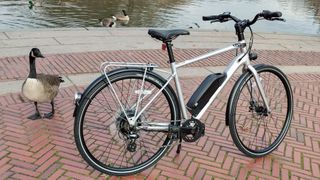
4. Charge Bikes City
If you plan on commuting to work, Charge Bikes City may well be the best ebike for you. Not only does it come with features like full-fenders to keep the mud off and a rear rack for a pack or bag, but it does everything well for a very reasonable price. The Charge City has a five level power assist, as well as a full-power throttle button, should the need or hill arise.
The biggest reason why we think this bike is best for commuters is that its handle bars fold flat, so you can more easily store it in an apartment or a cubicle at work. It comes with all the necessary bells and whistles a commuter is going to want, including the bell (actually a superior and very loud electronic horn). The bike is available in both step-over and step through, and in a few color options, too.
The City's electric assist is so smooth you'll think you're doing all the work yourself. At night, the bike's lights sufficiently lit up the road and the throttle helped us zip around potential trouble when we felt out of gas. Its advertised range of 50 miles held up, too; we found we only had to recharge the bike every three days using it on our regular commute.
Founded by folks from biking icon Cannondale, Charge's sui generis feature is that even newbies can assemble the bike right out of the box in 10 minutes or less. All you basically have to do is put the front wheel on.
Read our full Charge Bikes City review
Best BMX-style bike
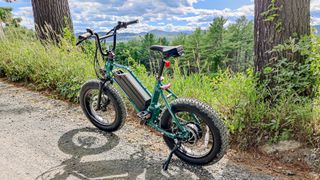
5. Juiced Ripracer
The Juiced Ripracer is a lot of fun, and costs a lot less than you might think. It's one of the more affordable offroad ebikes we've tested, and it can go just about anywhere. This fat-tire bike has 20-inch wheels and a 40.3-inch wheelbase that's meant for trails and other unpaved surfaces. However, its lack of shock absorbers, like most e-mountain bikes, means you're in for a rougher ride.
Its 750W motor delivered some real get-up-and-go, and, thanks to its low-end torque, was great for charging up hills. In one concession to its price, the Ripracer has a cadence, rather than a torque sensor, so you have to rotate the pedals a couple of time before the assist kicks in. As it's a BMX-style bike, the Ripracer is a lot smaller than other mountain e-bikes, which also makes it easier to maneuver around tight spaces.
Read our full Juiced Ripracer review .
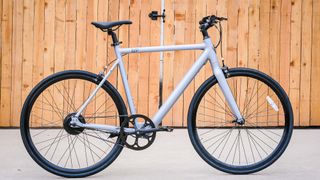
6. Ride1Up Roadster V2
At first glance, the Ride1Up Roadster V2 It looks like a regular, non-motorized commuter bike — the better to blend in with traditional rides — but concealed inside is a battery capable of up to 30 miles of range.
The Roadster V2 is also one of the lightest ebikes we tested — it weighs just 33 pounds, so carrying it around shouldn't be a problem — and although there's no step-through model, Ride1Up offers it in two sizes to accommodate riders of nearly all heights.
The Roadster V2 was fast and fun on flat and rolling terrain, and its belt drive made for a very quiet ride. However, this is a single-speed model, so it's a bit hard to get moving on hills.
There are a few concessions to get to this price: The Roadster V2 doesn't have lights of any kind, nor does it have fenders, and it uses rim, rather than disc brakes. We also found its display to be on the small side. Still, if you can live with those compromises, you'll enjoy the Roadster V2.
Read our full Ride1Up Roadster V2 review .
7. RadPower RadRunner 3 Plus
How's this for an endorsement? Our reviewer loved this bike so much that he decided to buy one for himself.
While it can't haul as heavy loads as some other larger (and much more expensive) cargo bikes, the RadPower RadRunner 3 Plus is more than capable of carrying you, your kids, and plenty of groceries wherever you need to go. We loved its responsive 750W motor, its comfortable ride, and its low center of gravity, thanks to its 3.3-inch thick, 20-inch tires.
However, we found it to be fairly heavy, tipping the scales at 75 pounds, so you're not going to want to try pedal it without any power assist. But we found its advertised 45-mile range to be pretty accurate, so long as we didn't go too heavy on the throttle.
Aside from its performance, what made the RadRunner 3 Plus stand out so much to us was its versatility: You can outfit the bike with any number of combinations of racks, seats, bags, and other accessories to truly customize it for your needs. And, its relatively low price for a cargo bike makes it a real bargain for those looking to replace their car with an electric bike.
Read our full RadPower RadRunner 3 Plus review .
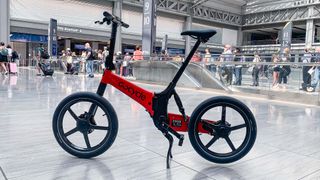
8. Gocycle G4i+
The Gocycle G4i+ looks like something a supercar designer would build, which isn't surprising given that it was conceived by former McLaren sports car engineer Richard Thorpe. Not only is this bike's unique wheels-on-one-side and tapered body eye-catching, but we were able to fold it up in less than a minute into a size small enough to get us on and off a train, and past our security and into our office elevator. At 36 pounds, it's one of the lightest folding electric bikes out there, too.
Despite that, this bike was a real pleasure to ride. Its electric shifter responded near instantly, as did the pedal assist and throttle. However, while the G4i+ has daytime running lights, you'll have to pay extra for a legit headlight, as well as mudguards. Also, the G4i+ has a great smartphone app, but one of the flimsiest methods of holding your phone on the bike itself — a cheap solution for a bike that costs $7,000.
If you're looking for something slightly more affordable, GoCycle also sells the G4i ($5,999) and the G4 ($4,799). A 2022 version of the G4 has an injection molded composite mid-frame. Still too much for your wallet? Then you should check out the Brompton Electric C-Line Explore , which starts around $3,000.
Read our full GoCycle G4i+ review .

9. Yuba Supercargo CL
The Yuba Supercargo CL can haul an astounding 500 pounds, making it one of the heftiest electric cargo bikes in its class. Yet, it offers a surprisingly stable ride, thanks to its low center of gravity. Its cargo area is very customizable, letting you convert it from a place to carry groceries to a space to tote your tots to soccer practice.
Magna hydraulic brakes and a Bosch mid-drive motor were very responsive, though the relatively small 20-inch tires and lack of suspension did make bumps feel a bit jarring. The Supercargo CL starts at around $6,000, but is incredibly customizable; you can select from a range of accessories to adapt the cargo area to suit your needs.
If you're looking for a cargo bike that can haul more than the Rad Power RadRunner 3 Plus, this is the model to consider.
Read our full Yuba Supercargo CL review .
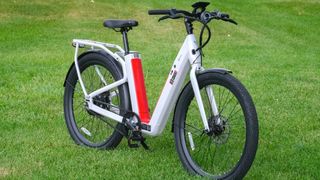
10. NIU BQi-C3 Pro
There's nothing worse when running out of power when riding your electric bike, especially if you're miles from home — and at the bottom of a hill. With its dual batteries, the NIU BQi-C3 Pro is the best electric bike for those who have range anxiety, as it can give you up to 90 miles of range before you need to recharge. And, that's no boast — based on our testing, we found that 90-mile estimate to be pretty accurate, too.
But range isn't the only thing we liked about the BQi-C3 Pro: It has mechanical disc brakes, front and rear lights, and a rear rack so you can carry things wherever you plan to go. A carbon belt drive is another nice-to-have feature, as it's quiet and easier to maintain than a traditional metal chain. Its step-through design also makes the bike easy to use for riders of all sizes; we tried it with both a 5' 11" rider and a 5' 3" rider, and both found it comfortable.
Our only real complaint with the BQi-C3 Pro is that at 70.5 pounds, it's one of the heaviest electric bikes we've tested that's not a cargo bike, so this is not a model to buy if you have to go up any stairs. Still, the bike's 500W motor was more than powerful enough to get its bulk moving with ease.
The bike's regular price is $2,199, but we've seen it on sale during the holidays for as low as $1,299, so wait for a sale to pick it up.
Read our full NIU BQi-C3 Pro review .
What to look for when buying an electric bike
Pedal-assist or throttle? All electric bikes have what's called pedal-assist; you start pedaling, and the bike's motor kicks in to make your ride a little easier. But you need to put in at least some work: you won't go anywhere unless you pedal. Most electric bikes will also let you set the level of assistance, so you can decide how hard you want to pedal.
However, some electric bikes will also have a throttle. Press a button or push a lever, and the bike will do all the work for you — no pedaling needed! Using a throttle will quickly eat up the battery life on the bike, so you'll get far less of a range if you don't want to pedal at all.
Motor type Less expensive electric bikes traditionally use a rear hub motor. Mid-drive motors located in the center pedal crank shaft tend to be more expensive but offer better overall balance and smoother shifting.
Motors are also rated based on their power, measured in Watts. Typically, the least powerful motor will be 250 Watts, but unless you're a very large person or planning to go up really steep hills, the motor size shouldn’t be a major determining factor for your purchase. More important, there is no industry standard for measuring Watts (is it continuous or peak and if peak, for how long?). So in general, a motor’s Watt rating isn’t a reliable indication of power.
Battery size Consider where you live. If you're in San Francisco you're going to want more help than if you're cruising around Austin. Watt hours (Wh) is the most important figure for comparison—it takes into account battery output and battery life to give you a better sense of available power. Higher Wh translates into more range.
Many electric bike makers will also include an estimated range (usually about 40 miles) that you can get off a single charge. You should take this figure with a large grain of salt, as that number is usually determined under ideal circumstances: A fairly lightweight person riding on flat terrain with no wind, and at the perfect ambient temperature for the battery. Range is also dependent on the level of power assist being used, whether full-throttle has been applied and for how long, and your average speed. As they say, your mileage may vary.
Removable or built-in battery? Most bike batteries will handle rides of about 40 miles and need to be plugged in for at least a couple of hours to get to 80 percent of capacity. So if you have a more demanding commute, consider a model that lets you swap out the battery rather than a bike with an integrated battery.
Also, if you live in a place where you can't bring your bike inside or get close to a wall outlet (such as if you live in a walk-up apartment), definitely look for a bike with a removable battery. It will make your life a lot easier.
Step-over or Step-through? Many electric bike makers will offer their bikes in two configurations: Step-over (which has a top bar that runs parallel to the ground) and Step-through (the bar is angled downwards). Once upon a time, step-through models were traditionally thought of as women's bikes, but that perception is changing. It's generally easier to get on and off a step-through bike, as you don't have to lift your leg over a bar.
Safety features If you're planning to ride your electric bike in traffic or in low-light conditions (such as dawn and dusk), it's worth looking for an electric bike with built-in head and taillights. While increasingly common, it's not a standard feature on all models.
Electric bike FAQ
What are the different types of electric bike.
Generally speaking, electric bikes fall into the same categories as non-electric bikes. Here's a quick summary of some of the kinds of electric bikes you'll find.
Road bike: These are meant solely for riding on roads, and are designed for speed. They will have thinner tires and curved handlebars, so that the rider will be crouched forward. Higher-end models may also be made out of carbon fiber, so as to make the bike as light as possible.
Mountain bike : Designed for off-road use, mountain bikes will have thick, knobby tires, full suspension, and a burlier frame to better absorb bumps and jumps.
Fat tire bikes : Similar to mountain bikes, fat tire bikes are meant to be ridden off-road, usually on very soft ground, such as mud, sand, and snow. As their name suggests, these bikes have very wide tires — as much as four inches — which helps keep a grip on unsteadier terrain.
City/Commuter bike: Made for urban dwellers who need to get around town, a commuter bike will have tires that are somewhere in between a road and a mountain bike. Generally, the bikes will be configured so that the rider's back is vertical when seated, which gives them a better view of their surroundings.
Cargo bike: These bikes are made for carrying heavy loads, and will have a cargo area either in the front or rear of the bike. Because of the payload area, these bikes often tend to me much longer and heavier — and more expensive — than a typical bike.
What is a good speed for an electric bike?
In the U.S., electric bikes are limited to 20 miles per hour; that is, they can only provide you with power — either through pedal-assist or with a throttle — until the bike hits 20 MPH. While you can easily go faster than 20 MPH on an electric bike, the rest of that power will have to be provided by you — or gravity.
How much does an electric bike cost?
Electric bikes range widely in price. Some of the best cheap electric bikes start at around $1,000; you can certainly find models for less, but quality will be less.
The bulk of electric bikes cost anywhere from $1,500 to around $2,500, and there are hundreds of models in this price range.
Higher-end and specialized electric bikes — such as cargo bikes — will cost upwards of $3,000, and can easily reach $6,000 to $8,000, which is a sizable investment.
rules and regulations
There has been a lot of confusion about ebikes (pedal assist versus throttle bikes) and where you can legally ride them. Some municipalities have banned ebikes from bicycle paths, for example. Many places classify ebikes depending on whether they can go full throttle and have a maximum speed of 20 or 28 mph. There are three official classifications:
Class 1: Ebikes that only assist while you pedal, with a top speed of 20 mph.
Class 2: Ebikes with a throttle that don't require you to pedal but have a top speed of 20 mph.
Class 3: Ebikes that only assist while you pedal, with a top speed of 28 mph.
So check your local regulations before you buy. And always wear a helmet.
Dan Cavallari is the former technical editor for VeloNews Magazine, who currently reviews electric bikes, the best bike lights , best bike locks , and other bike accessories for Tom's Guide. In addition to VeloNews, his work has appeared in Triathlete Magazine, Rouleur Magazine, CyclingTips.com, Road Bike Action, Mountain Bike Action, CycleVolta.com, Tomsguide.com, and much more.
Dan also hosts two podcasts on his site, Slow Guy on the Fast Ride: One is about cycling and other outdoor activities, while the other looks at mental health issues. Most recently, Dan also covered the 2022 Tour de France. Dan lives outside of Denver, Colorado with his family.
John R. Quain has been reviewing and testing video and audio equipment for more than 20 years. For Tom's Guide, he has reviewed televisions, HDTV antennas, electric bikes, electric cars, as well as other outdoor equipment. He is currently a contributor to The New York Times and the CBS News television program. John has also written our guide to the best bike helmets .
how we test
All the bicycles in this feature were road (and in some cases, off-road) tested by Tom’s Guide reviewers and staff.
The testing process begins when we first receive the bike; as most come only partly assembled, we assess the difficulty with which we have to put the final pieces together. Typically, this involves attaching the front wheel, handlebars, and pedals, but some bikes are easier to put together than others.
Next, we take the bikes for a ride, evaluating their comfort, handling, responsiveness of their motors — some will be faster to apply power than others — as well as how they perform over a variety of terrain and conditions. For example, if we're testing a fat-tire bike, we'll take it off-roading; if we're testing a cargo bike, we'll load it with kids and grocery bags.
If a bike has headlights and/or taillights, we'll also check to see how bright they are in dimmer conditions. After all, you're not going to only ride it during the day. We'll also try out any other safety features, such as bells and horns.
We also evaluate the advertised battery range of an electric bike. Many companies will offer, shall we say, optimistic range estimates based on ideal riding conditions: A light rider using the lowest level of power assist, and traveling on a level road in 70-degree conditions.
But, that's not reflective of real-world use. While it's impossible to replicate the exact same conditions from one bike review to the next, we do our best to provide as much detail in our reviews as to how we rode the bike (terrain, pedal assist levels) to determine how close to accurate the companies' claims are.
Finally, if an electric bike comes with an app — as is becoming increasingly common— we'll test it out too, to see how easy it is to use, and how well it works with the bike itself.
Sign up to get the BEST of Tom’s Guide direct to your inbox.
Upgrade your life with a daily dose of the biggest tech news, lifestyle hacks and our curated analysis. Be the first to know about cutting-edge gadgets and the hottest deals.
Michael A. Prospero is the U.S. Editor-in-Chief for Tom’s Guide. He oversees all evergreen content and oversees the Homes, Smart Home, and Fitness/Wearables categories for the site. In his spare time, he also tests out the latest drones, electric scooters, and smart home gadgets, such as video doorbells. Before his tenure at Tom's Guide, he was the Reviews Editor for Laptop Magazine, a reporter at Fast Company, the Times of Trenton, and, many eons back, an intern at George magazine. He received his undergraduate degree from Boston College, where he worked on the campus newspaper The Heights, and then attended the Columbia University school of Journalism. When he’s not testing out the latest running watch, electric scooter, or skiing or training for a marathon, he’s probably using the latest sous vide machine, smoker, or pizza oven, to the delight — or chagrin — of his family.
- John R. Quain
I used the Swytch Go kit to electrify my 30-year-old bike, and now I ride it everywhere
The best folding electric bikes for space-saving rides
How to watch 'Reel Stories: Shania Twain' online and from anywhere
- Marc-G Hello, I noticed a couple of errors in the article around pricing on a couple of the bikes. Regarding the Gazelle Medeo T9 classic, your article list a starting price of $1999 but clicking the link takes you to their site where the least expensive model is $2499 and no model called Medeo T9 Classic is available nor can such a model be found with search. The second model is the VanMoof S3 which is listed in the article with a starting price of $1999 but going to the site shows a price of $2299. As someone trying to persuade his wife that an ebike would be a worthwhile purchase for me, I’d be grateful if you would clarify these discrepancies. One last thing. On the article itself, it says it was published 21 hours ago when it was actually published on July 21. I’m going to assume some aspect of it was updated but I can’t spot any changes to it and would appreciate it if whatever was updated could be noted somewhere. Many thanks for the article. Pricing confusion aside, it’s been quite helpful for me. Reply
- Marc-G Thanks for the reply. Just went back to the top of this page and realized that it said 2020. However, if that’s the case, why is it made to look like a recent article? Does that mean all the authors did was change the title from best of 2020 to best of 2021? That seems kind of disingenuous to me. Reply
- mprospero Hi Marc - We've recently updated the pricing for all the models. We've also added new ones to this list as we've reviewed them. Reply
- GFujioka You do your readers a disservice and reveal your partiality by not listing the 64,5 lb weight of your number one bike. Cheers. Reply
- gtilford One factor that seems to be missing from virtually every review-support. I have some friends who could not get parts for their ebikes for 6+months, and they were only 1 year old. I've had problems getting parts with a highly recommended brand. The bike is well made, it performs well, but parts are nearly unobtainable. If I knew then when I know now about parts availability I wouild not have purchased the brand. Reply
- View All 5 Comments
Most Popular
- 2 7 underrated HomeKit features you need to know
- 3 I visited NordVPN and Surfshark's HQ – here's what I found out
- 4 Hurry! Walmart Plus Week ends soon — 15 last-minute deals I’d shop
- 5 Can Al make you a better gardener? I put ChatGPT to the test

NCM Milano Electric Bike Review
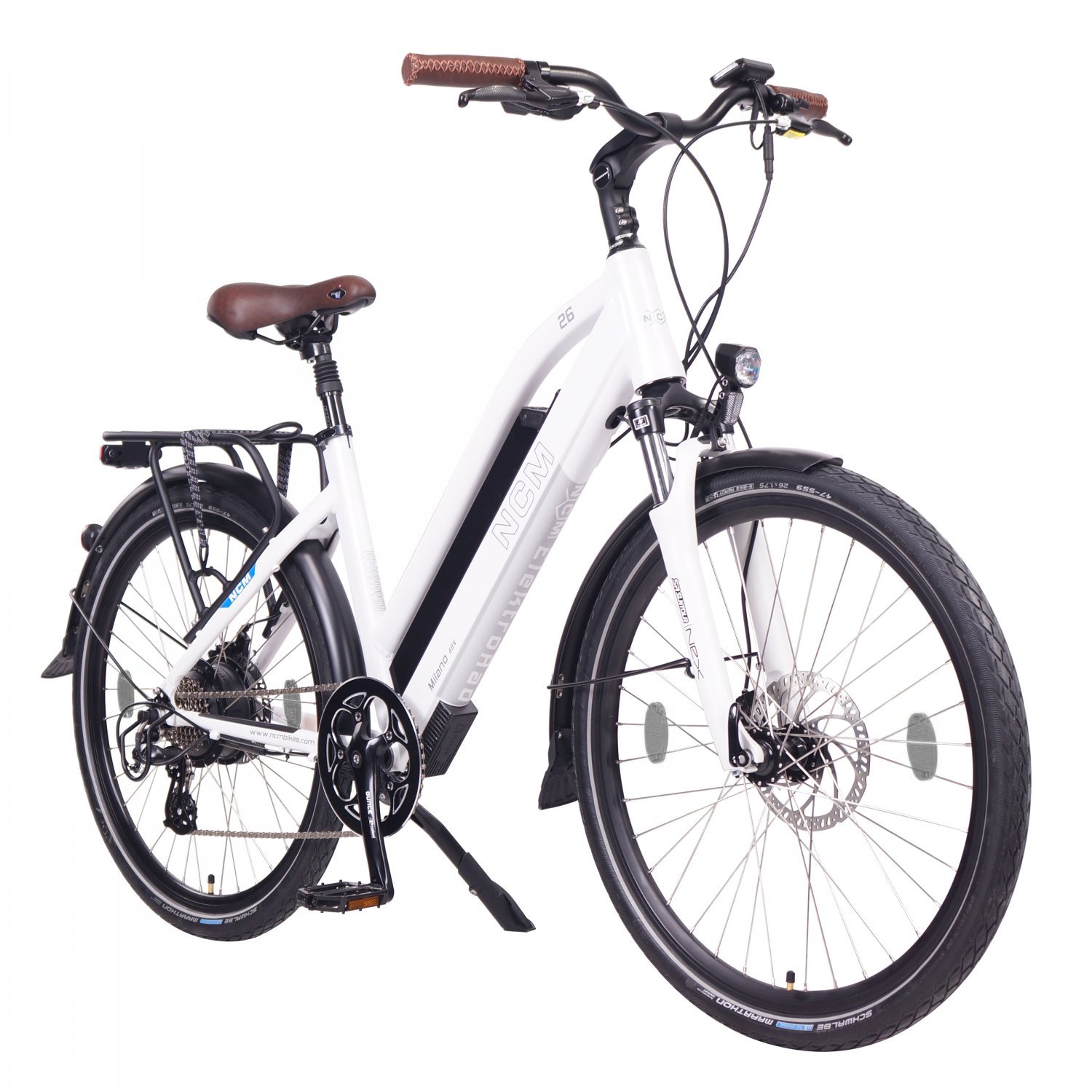
When you purchase through links on our website, we may earn a commission. Affiliate disclosure.
NCM make high-quality, but affordable electric bikes, in this review I will explain why I believe the NCM Milano is the best electric commuter bike for the money.
About NCM Electric bikes
NCM electric bikes are owned by Leon Cycle GmbH a German company based in Hanover. Their e-bikes are designed in Germany and manufactured in China.
Specification
The centrepiece of this Electric bike is the X15 geared rear hub motor: This reliable 250W rear electric motor is known for its durability and high torque output, enabling the rider to maintain 15.5mph for long periods. There is no compromise in handling with the small motor centred in the rear hub.
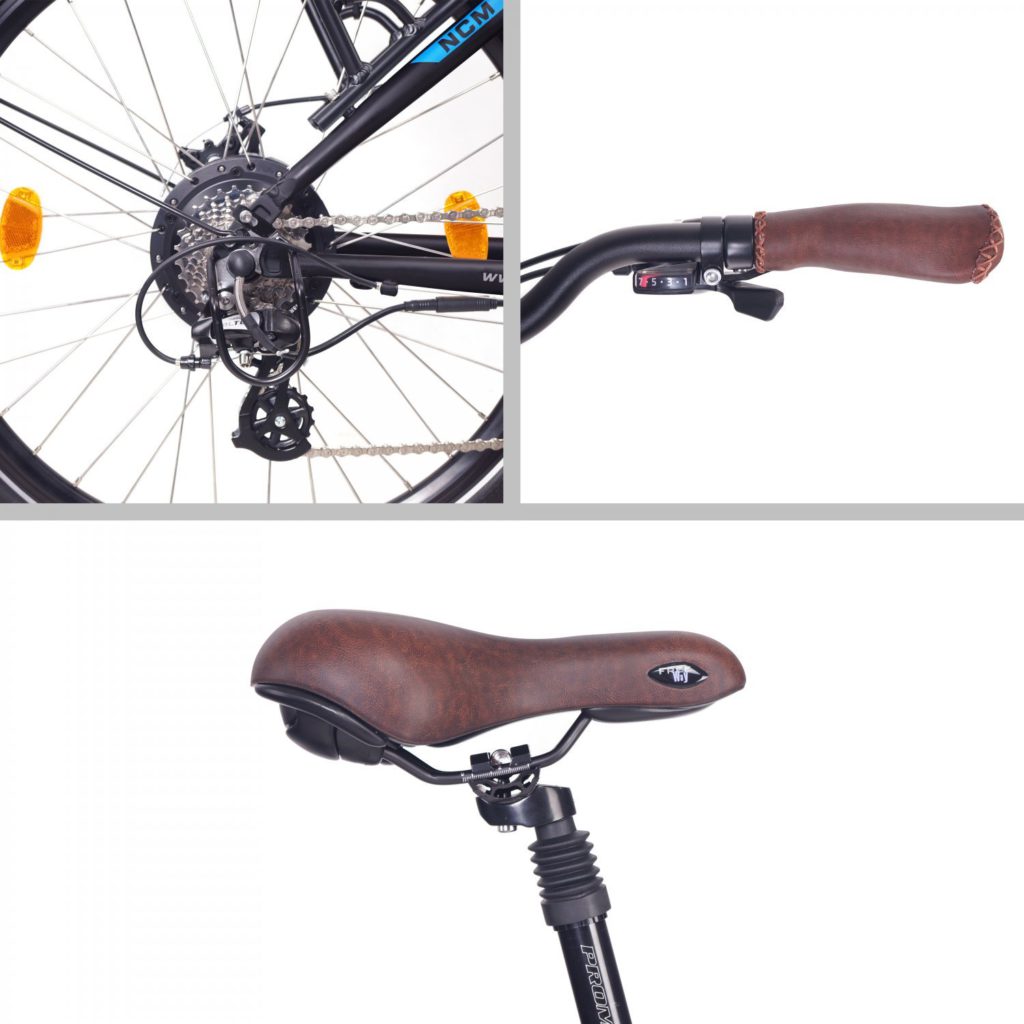
48v13ah Lithium battery pack with USB charging port for mobile devices: Bulky battery packs take up a considerable amount of space, but the Milano’s battery is integrated into the down tube of the bike, keeping the weight low and central, which helps to improve stability. The manufacturers claimed a maximum range of 75 miles seems a little optimistic. The total battery energy capacity is 624wh (watt hours), so if you were consuming 20wh per mile, your range would be 31 miles. My friend owns one of these bikes and gets an average range of around 40-50 miles.
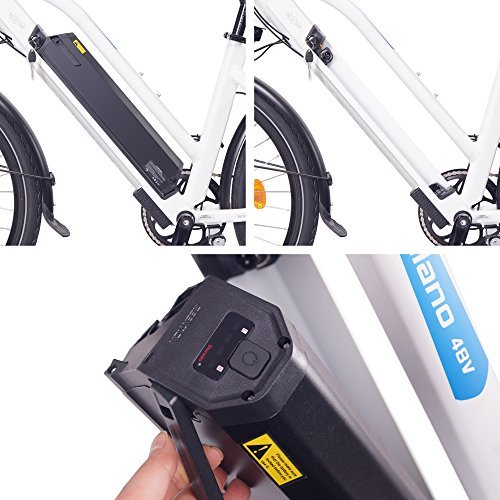
This bike is built for comfort: The Schwalbe touring tyres, Suntour front suspension, adjustable handlebar stem, Selle Royal ergonomic grips and saddle with suspension post all make for an incredibly comfortable ride, even over longer distances. The Shimano 7-Speed gears, index perfectly – shifting is crisp and precise.
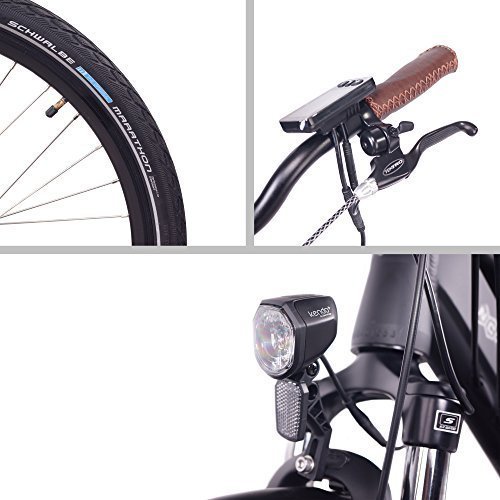
Fully functional control panel display: The Das-Kit LCD gives you all the information you would expect from an e-bike display. including journey time and mileage. It also has 6 power levels of pedal assist, so you can fine-tune the power output to suit your ride.
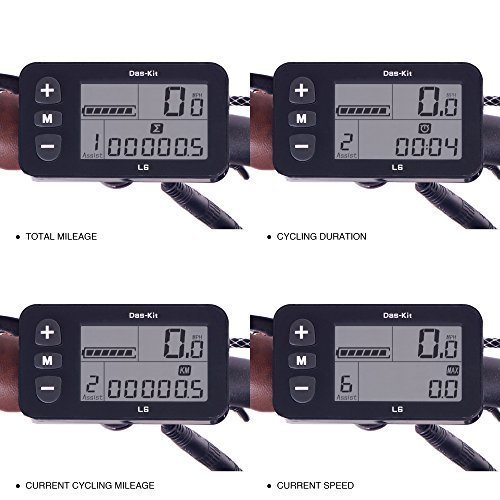
Excellent build quality: The NCM Milano is designed to look great but with no compromise on functionality and safety. The Tektro mechanical disc brakes with 160mm rotors provide adequate braking and the brake levers incorporate motor cut-off switches to ensure safe riding. The front and rear lights work off the battery and provide an extra level of safety – especially when riding in the winter. Internal cable routing finishes off the package neatly and not only looks great but protects the cables from the elements.
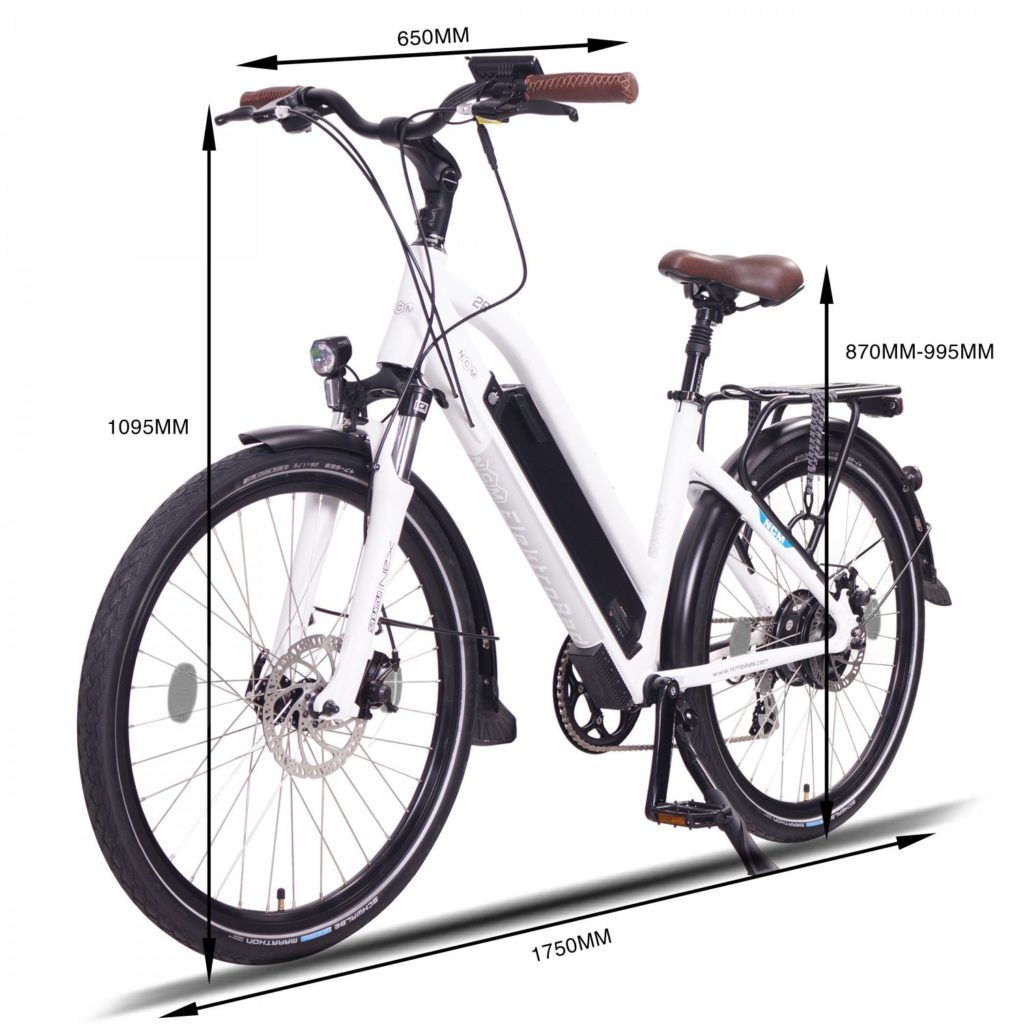
In my opinion, the NCM Milano electric bike offers exceptional value for money. It is unusual to see such a high-quality, well-made e-bike at this price point. What’s more the specification is excellent. The 48v13ah battery will certainly provide users with a realistic range of between 30-45 miles, or 31 miles using the 20wh per mile calculation. The claimed range of 75 miles may be a little optimistic for everyday use – it depends on how much you use the electric assist.
Tektro Mechanical disc brakes should provide adequate stopping power, while the Schwalbe tyres will provide a reasonable amount of puncture protection.
The attention to detail on this bike is great. The internally routed cables and the integrated battery pack make for a very clean finish, something you only usually find on more expensive e-bikes.
The fact that this bike has mudguards, a pannier rack, lights and a kickstand fitted, means that it is excellent for the daily commute in all weathers, or perfect for some weekend touring. The inclusion of a gel saddle and suspension seat post make this bike a truly comfortable and versatile all-rounder.
If you are in the market for an incredibly versatile and affordable e-bike this definitely ticks all the right boxes
A friend of mine purchased one of these back in the Summer and he was kind enough to let me take it for a spin. I can honestly say it was a revelation! The gel saddle was incredibly comfortable and the small X15 hub motor was quiet and smooth. It produced a lot of power for such a small motor, making climbing the steep Cornish hills a doddle! The brakes and front suspension were more than adequate for the back lanes of Cornwall.
I really cannot recommend this bike enough. It has to be one of the best value e-bikes on the market at the moment, and the specification is great.
The great thing about this e-bike is that it is a true hybrid – it is equally comfortable being ridden on tarmac or unpaved surfaces. It can even be used for some light off-road riding.
If you are in the market for an incredibly versatile and affordable e-bike this ticks all the right boxes.
Incidentally, NCM’s other 48v 250w bike is called the NCM Moscow , I will be reviewing this bike shortly. I have personally worked on and ridden a Moscow, and it is on par with the Milano for the ride and builds quality. It uses identical electric components but in a mountain bike-style frame.
Meet Tony, a passionate e-bike advocate and enthusiast who discovered the life-changing benefits of electric bikes back in 2016. Tony’s technical experience within the e-bike field was gained while running a successful electric bike conversion business for 5 years in his home county of Cornwall, UK.
Similar Posts
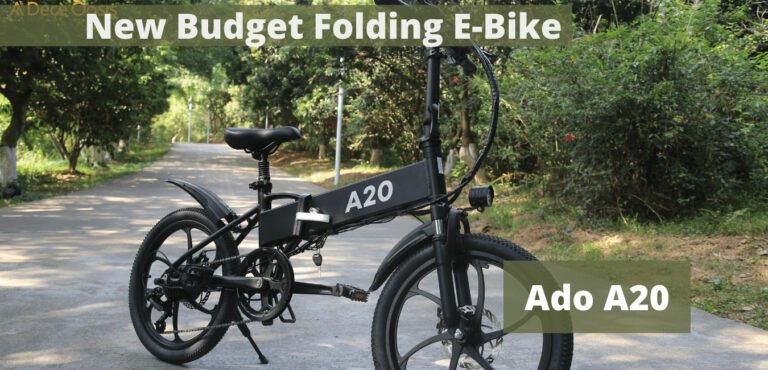
ADO A20 Folding Electric Bike Preview
When you purchase through links on our website, we may earn a commission. Affiliate disclosure. There’s quite a lot of choice in the sub-£1000 folding e-bike market at the moment,…
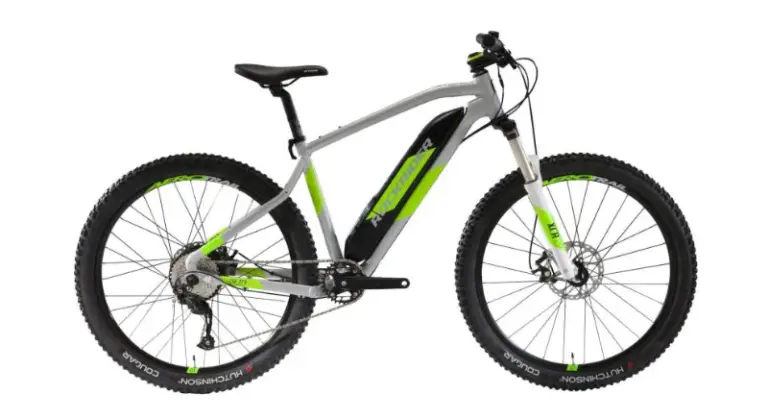
Rockrider E-ST500 Electric Mountain Bike Review
When you purchase through links on our website, we may earn a commission. Affiliate disclosure. In this review, I will be taking a closer look at the new Decathlon Rockrider…
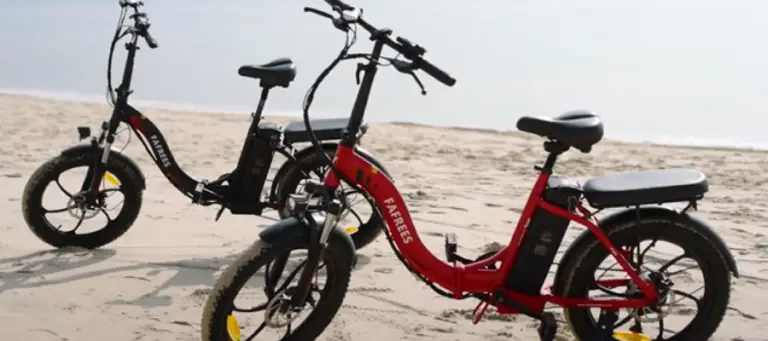
Fafrees F20 – Budget Folding E-Bike
When you purchase through links on our website, we may earn a commission. Affiliate disclosure. The Fafrees F20 is a budget folding e-bike that punches well above its weight in…
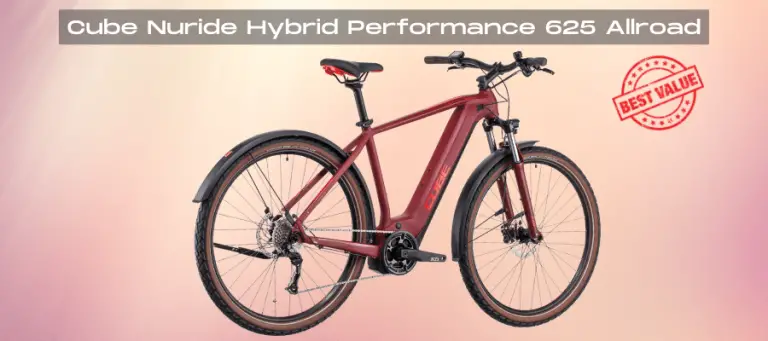
Cube Nuride Hybrid Performance 625 – New 2022 Model Preview
When you purchase through links on our website, we may earn a commission. Affiliate disclosure. In this second article featuring new 2022 e-bikes, I take a closer look at the…
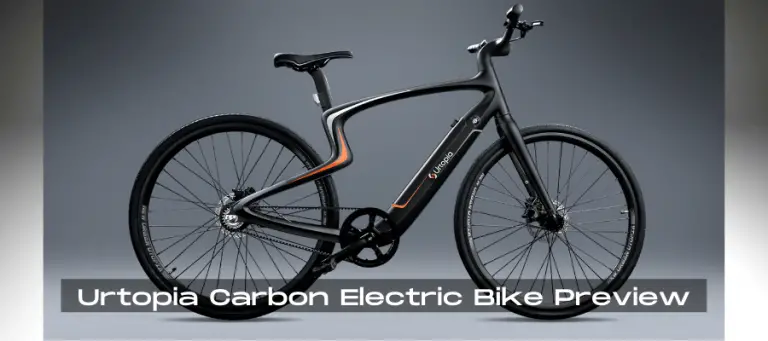
Urtopia Electric Bike – Lightweight Carbon E-Bike
When you purchase through links on our website, we may earn a commission. Affiliate disclosure. In this article, I’m going to be taking a closer look at the new Urtopia…
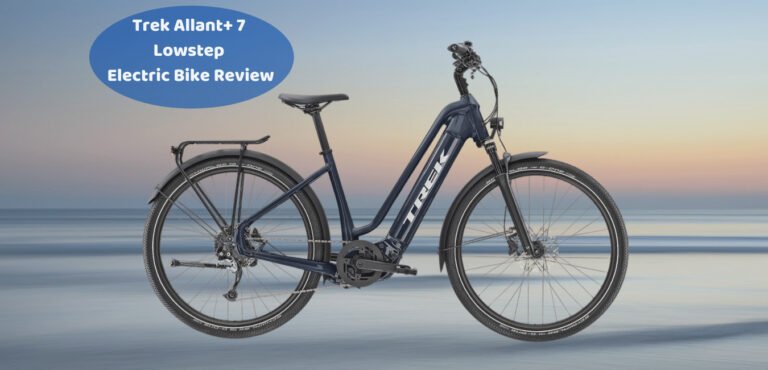
Trek Allant +7 Lowstep Electric Bike Review
When you purchase through links on our website, we may earn a commission. Affiliate disclosure. Lowstep or step-through e-bikes as they are known are one of the most popular genres…
46 Comments
boa taarde tenho uma biçicleta destas mas necessito de assistencia em Portugal. ela não arranca e não encontro uma ofecina que repare esta marca e com a garantia
Hi! Thank you for the review! I bought Milano a week ago, so far so good. I found the first assist speed to be stronger that I’d like it to be. Is there any way to rebalance those 1-6 modes within the given range, so it starts not as strong?
Don’t know if this is still open, but I really like the Milano plus, my only question, is how easy is it to remove the battery beneath that tube? Can it be done one handed? Cornwall my home!
Turning the key releases the battery catch, then you need to lift it slightly, move it forward and remove. I would imagine it’s possible to do it one handed, but it would be fairly tricky as the battery weighs around 3kg.
Let me know if you have any more questions.
Regards, Tony
bike seems well make and sturdy but i find the tyres are so skinny that when you are on slightly uneven surfaces even at a slow pace & i’m talking in number 1 setting it is dangerous and you could so easy fall off on a slightly uneven footpath. It’s ok on even ground but i wouldn’t let my wife ride it. I’ll try putting new tyres on it & see how it goes or it will be sold. In comparison i have another basic ebike in the states which is so stable this is nowhere close to and ride all types of tracks on it which is also a similar style. i would say I’m disappointed in it so far & feel its an accident waiting to happen.
Bonjour J’ai juste une question ,je mesure que 5 pieds !!!! Donc le small peut-il me convenir
Bonjour, Je pense que même la version 26″ est peut-être un peu trop grande. NCM recommande une hauteur minimale de 5′ 2″ de 160 cm.
Excellent review Tony,
I went ahead and bought the Milano and I’ve been very impressed with it so far. I was wondering if you’d know whether the 48v 16ah battery for NCM bikes would be compatible with the Milano model? I can’t seem to find a 48v 13ah battery anywhere.
Many thanks, Andy
An NCM Milano Plus battery should fit straight in. The 16Ah battery is the same size and uses lithium cells with a higher energy density.
Bonjour Je viens d’acheter ce vélo Mais je me pose la question, comment mettre en route la lumière avant ? Merci de votre aide
Appuyez et maintenez la touche « + » sur l’écran pour allumer le phare.
Bonjour Tony, Merci pour votre commentaire très instructif. Je souhaite acheter le Milano car après avoir étudier le marché des vélo électriques; il semble être d un excellent qualité-prix. J ai expérimenté le Veligo. Il me semble etre un peu similaire. Mais j ai une petite hésitation…si vous pouviez m éclairer…a t on sur le vélo le dos droit? Je pensais le prendre en taille L (28 pouces)(Je fais 1,74m) pour avoir une assise plus confortable. Je l utiliserai quotidiennement pour aller travailler. Pensez-vous que c est un bon choix? Ou devrais je m orienter vers un vélo de ville type Elops de Decathlon ou Sydney de Ubanbiker?(que je trouve tout de même assez cher) Merci pour votre réponse. A très bientôt, Linda
Bonjour, La taille fait référence au diamètre de la roue (28″). Tous les cadres NCM Milano sont identiques et correspondent à une taille moyenne. Cela devrait être parfait pour votre taille. La potence du guidon est également réglable, ce qui vous permet de monter le guidon encore plus haut si nécessaire. Salutations, Tony
I am seeing two different Milano Max models…N8C and N8R. They look exactly the same and with the same specifications. What is the difference?
I checked online for milano and price was 1189 Canadian dollar. On Monday I decided to buy it but unfortunately price went up to 1359$. I’m surprised as during holiday season everywhere else reducing their prices but your price was raised.
Leave a Reply Cancel reply
Your email address will not be published. Required fields are marked *
The 14 Best Road Bikes to Buy Right Now
These amazing road, racing, and endurance bicycles are lightweight and built for speed, comfort, and long rides.

Gear-obsessed editors choose every product we review. We may earn commission if you buy from a link. How we test gear.
Many buyers choose to purchase their bikes online. For this article, we prioritized brands and retailers that will allow you to do that—either shipping directly to you or to a local dealer for assembly. If you wish to purchase your new road bike from a bike shop , several of the options listed here are also available from local retailers, but call before you shop to make sure your dealer has the right model, color, and size.
If cost is no barrier, start your search with the Specialized Tarmac SL8 . One of last year’s most exciting new models, this bike is one of the most well-rounded road race bikes we have tested. For more options, the other models in this roundup were evaluated by our expert test team staff and all are highly recommended.
What Can You Get For Your Dollar?
Why you should trust us, how we selected these bikes, our full road bike reviews, best road bikes under $1,500, best road bikes under $3,000, best road bikes under $6,000, dream bikes, what to look for in a road bike, know your fit, road bike drivetrains, brand component hierarchies, what is a road bike.
I bought my first road bike in 1999. In those days, a road bike meant essentially two things: 19mm tires and dropped handlebars. Regardless of how you intended to ride your road bike, most models were designed around the era’s understanding of racing geometry.
Then 10 years later, when I was an editor at Bicycling , you could have a race bike, an endurance road bike with relaxed geometry and clearance for wide tires, or a touring bike with lots of mounts for bags and racks. The arrival of aero road bikes, so-called all-road, and then gravel bikes, further ballooned the options available to drop-bar cyclists.
Fortunately, the current options are a little more straightforward: Many road bikes now have geometry that will work for both flexible racers and for those who prefer to be more upright. Disc brakes mean that most bikes come with tires appropriate for pavement but have the space to fit wider tires if you like to take your road bike on moderate gravel or dirt roads (plus, we now know that 28mm of tire is far superior to the 19mm tires of my youth).
Advances in design also mean that most brands no longer need to offer both a regular road bike and an aero road bike—one frame can be light, stiff, and slippery to the wind. You can now have one drop-bar road bike that’s comfortable, fast, and fairly versatile for group rides, racing, and exploration.
Below $1,500 , you’ll find bikes with either rim or mechanical disc brakes. These bikes usually have 10-, 9-, or 8-speed drivetrains. If much of your riding is on flat or rolling terrain without steep grades, these drivetrains will serve you well. Riders looking to tackle lots of steep or long climbs will notice the limited gear range and increased weight of bikes at this price. Models under $2,000 usually have frames made from aluminum or steel.
The closer you get to $2,500 , the more likely you'll find bikes with 11-speed drivetrains. At this price point, the frames will probably be made of aluminum, but with more attention to small details, better finish quality, and nicer parts that all result in lighter bikes that are easier to pedal uphill and faster to accelerate. You may also get a carbon fork that can help smooth bumpy roads.
Additionally, with bikes at this level, you’re more likely to see hydraulic disc brakes. These are more powerful and easier to use than mechanical versions and require less adjustment. Road bikes at this price often weigh less than 20 pounds. Adventure and touring bikes at these prices typically weigh more but have a wider gear range and include more mounts for racks and bags.
Bikes between $3,000 and $6,000 , will usually have a carbon fiber frame and fork, along with higher-end components. The increased price comes with a decrease in weight, and bikes in this price range may have electronic shifting, upgraded wheelsets, and components such as bars, stems, and seatposts that may even be made out of carbon. Because these bikes are several pounds lighter, they may feel snappier when accelerating and going uphill.
If you want a premium, high-performance bike and can spend more than $5,000, what you can expect is a much higher quality finish, regardless of the frame material. All of our high-end recommendations are carbon fiber, but at these prices, you can find bikes made of carbon, steel, titanium, or aluminum. Each material has its own unique attributes, and no matter which you prefer, you can be sure that you’re getting a premium version of that material with this kind of financial investment. Count on high-end components and wheels that are lighter and more aerodynamic for smoother, longer rides.
While it’s not necessary to spend this much money on a bike that will let you enjoy excellent days on the bike, this is the price point that affords you access to one of road cycling’s great joys: Seeing a bike that looks very similar to yours carrying cyclists to prestigious wins and show-stopping performances in World Tour races.
Bicycling has been vetting and reviewing bikes, gear, and accessories for more than 50 years. The bike recommendations here are based on the extensive work of the test team which includes Deputy Editor Tara Seplavy, Senior Test Editor Matt Phillips, Test Editor Dan Chabonov, and Maintenance Editor Gabe Ortiz. Together, they have more than 60 years of ride-testing experience and insight that they bring to every recommendation they make.
For road bikes, Dan Chabonov oversaw these selections based on the team’s collective testing experience, as well as his own extensive knowledge of the category.
Andrew Bernstein has been a cyclist nearly his whole life and a passionate road rider and racer since he was a teenager. These days, he rides road and gravel bikes around his home in Boulder, Colo. As a former bike salesperson and Bicycling Gear Editor, Andrew has had the chance to ride many bikes and meet many Bicycling readers, helping him to know what to look for in making these recommendations.
Bicycling ’s Test Team carefully chose these road bikes based on value, quality of parts, user reviews, and experience with the brands and similar models. We rode and raced almost every one of these bicycles in all sorts of conditions, wrenched on them, and tried them with different wheels and tires.

State Bicycle Co. The Beatles Abbey Road Edition

A great-looking road bike for less than $600 that transports you back to the British Invasion? State Bicycle Company makes it happen. This special edition of State’s 4130 Road is fit to ride to Apple Studio with a look straight out of the 1970s.
The downtube shifters are a fun retro touch, while the rear rack and chain guard make this bike practical as well as stylish. It’s highly unusual to see a Brooks B17 saddle on a bike at this price point, and we like it for both the retro look and comfort.
Specialized Diverge E5

Versatility is the name of the game with the Diverge E5. A simple tire swap can change the bike’s entire character. Want to make the E5 go faster and feel sportier on the road? Throw on some 32mm rubber. Want more off-road capability? The Diverge has clearance for up to 700x47mm or 650bx2.1-inch tires—about the same tire width as a 90s-era mountain bike.
Have a long-distance adventure in mind? There are mounts for all the frame bags that you could ever want, and then some—plus fender mounts! The Diverge E5 can be a road bike, gravel bike, drop-bar mountain bike, touring bike, or even an adventure bike.
Salsa Journeyer Claris

Salsa’s Journeyer models are great all-around road bikes. Available with 700c x 38mm or 650b x 47mm tires for those who want to ride on rougher terrain, the Journeyer can be used for anything from road riding to gravel, to bikepacking, or commuting. This Salsa’s aluminum frame and fork accept rack, fenders, and other accessories for any kind of riding.
Specialized Allez Sport

An upgraded version of Specialized’s entry-level road bike, the Allez Sport saves significant weight off the base model. The frame also provides a snappier ride that transmits the feel of the road in a palpable, but not overbearing way. While it won’t be confused with its carbon cousins, this well-rounded and capable road bike is sure to please many cyclists.
READ SPECIALIZED ALLEZ SPORT REVIEW
Giant TCR Advanced 2 Pro Compact
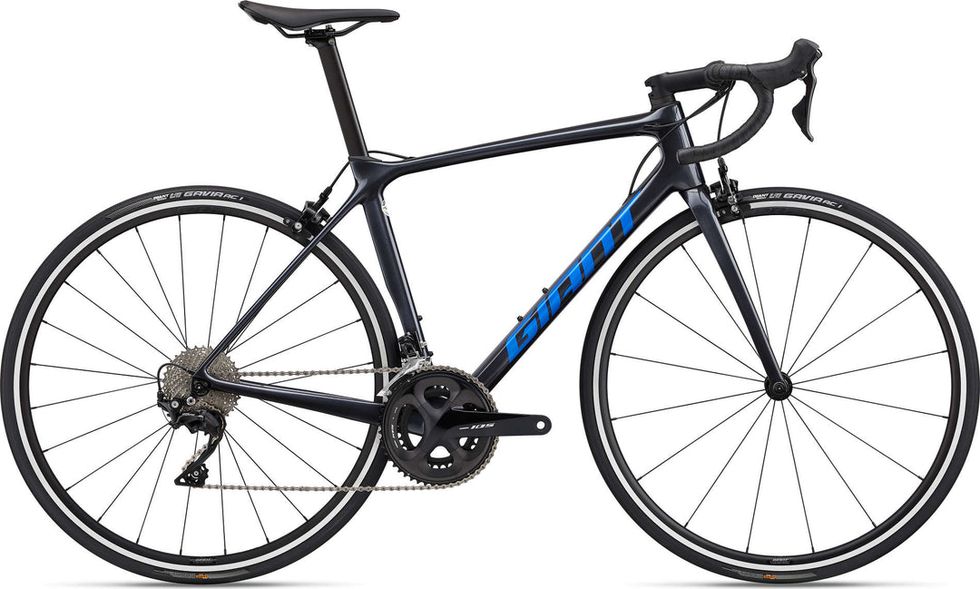
This is our pick for a budget-oriented lightweight, reactive race bike. There's just one catch: it's got rim brakes instead of disc brakes. The good news is that rim brakes, while no longer in vogue, stop a bike just fine. The brakes themselves and the wheels they work with are also lighter than their disc-compatible corollaries—a key advantage at this price point. The total package is a bike we love riding and one that will serve many riders capably.
Trek Émonda ALR
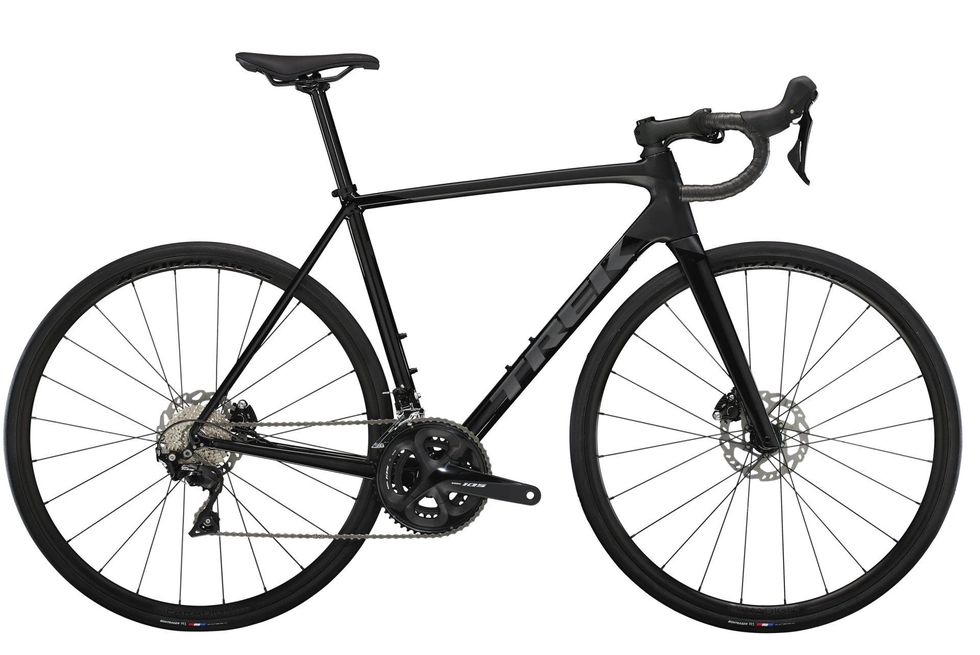
Trek’s Émonda ALR is up there with some of the best aluminum race bikes. It features an impeccably finished and well-designed aluminum frame that’s only a few grams heavier than Treks’ mid-tier carbon Émondas. Plus, the Émonda ALR shares geometry with its pricier siblings, so you get the same quick handling and adaptable fit.
REAR FULL ÉMONDA ALR 5 REVIEW
Canyon Endurace CF 8 Disc
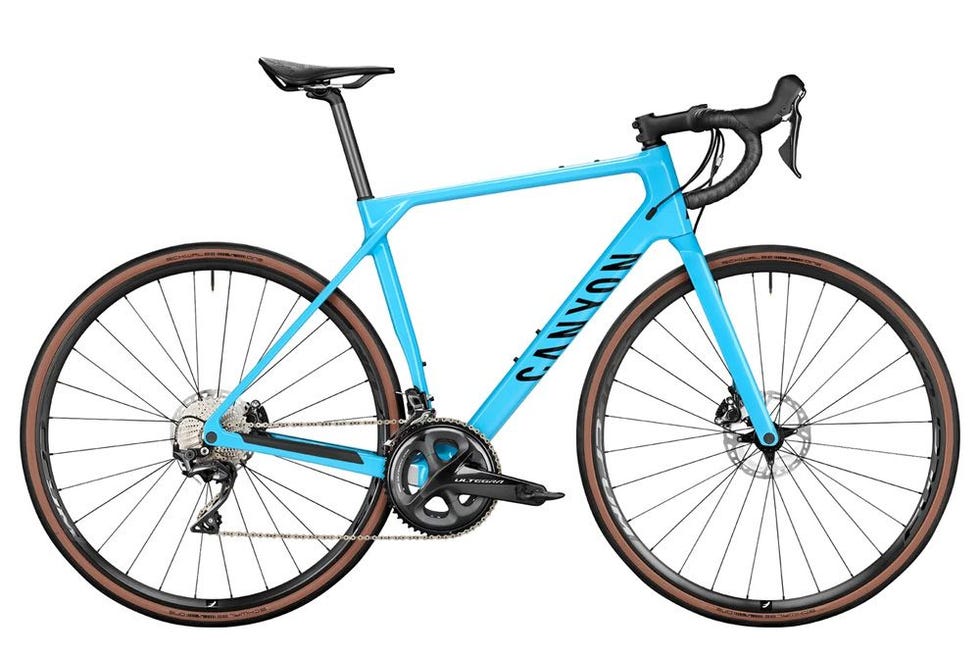
German brand Canyon was one of the first to prioritize delivering bikes directly to consumers without relying on a network of shops. That business model may also allow Canyon to offer greater value than some of its competitors.
This bike comes with a cable-actuated Shimano Ultegra drivetrain which delivers crisp, precise shifts. The Endurace has slightly more relaxed geometry—perfect for riders who aren’t highly flexible, but who still want to push a bike hard around corners and get low on occasion.
Cervelo Caledonia 105

Cerevelo’s do-it-all Caledonia checks a lot of boxes: it’s got a comfortable, semi-upright fit and aerodynamic frame tube shapes. The bike’s geometry skews closer to that of a gravel bike, making the Caledonia more stable, and with space for 34mm tires, you can ride this bike from pavement to moderate dirt and gravel roads. You can even mount fenders if you regularly ride in wet conditions, and want a bento box bag for extra snack capacity. This model comes with a 2x crank, but can also be set up with a 1x drivetrain if you prefer.
Cannondale SuperSix Evo 3
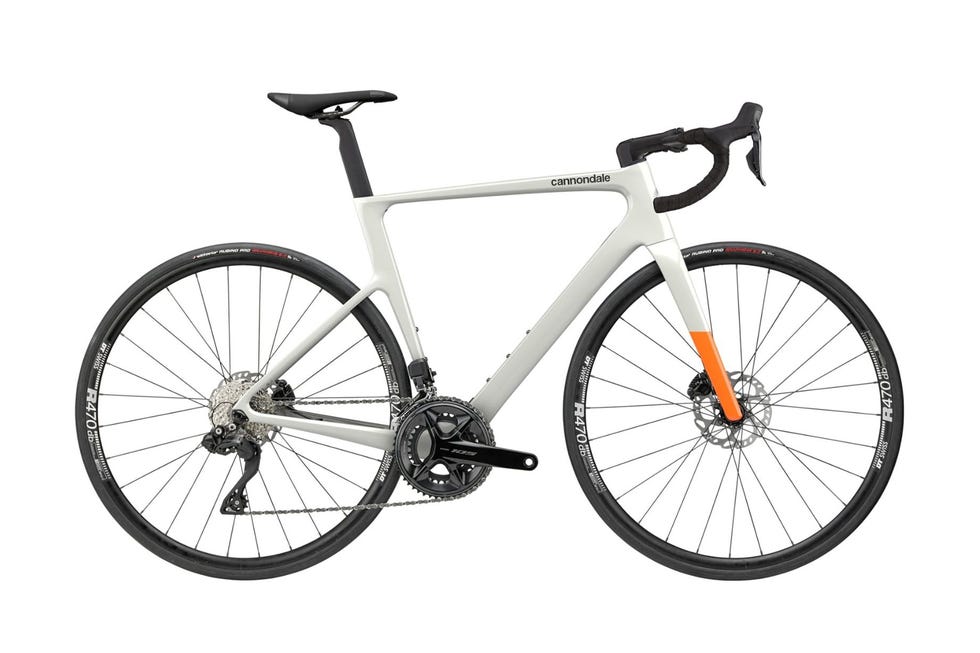
This is the fourth generation of Cannondale’s race-bred SuperSix Evo. In our testing, the SuperSix Evo Hi-Mod (a lighter-weight variant of this frame) was among our favorite bikes, winning us over with its amazing handling and overall speedy feeling.
Updates to the bike have made it more aerodynamic: The headtube now has an hourglass shape that flows beautifully into the fork. The seat tube was also redesigned to work with a new proprietary seatpost. New cable routing on the Evo’s handlebar entirely hides the brake hoses from view.
READ FULL CANNONDALE SUPERSIX EVO REVIEW
Ari Veyo SL Pro
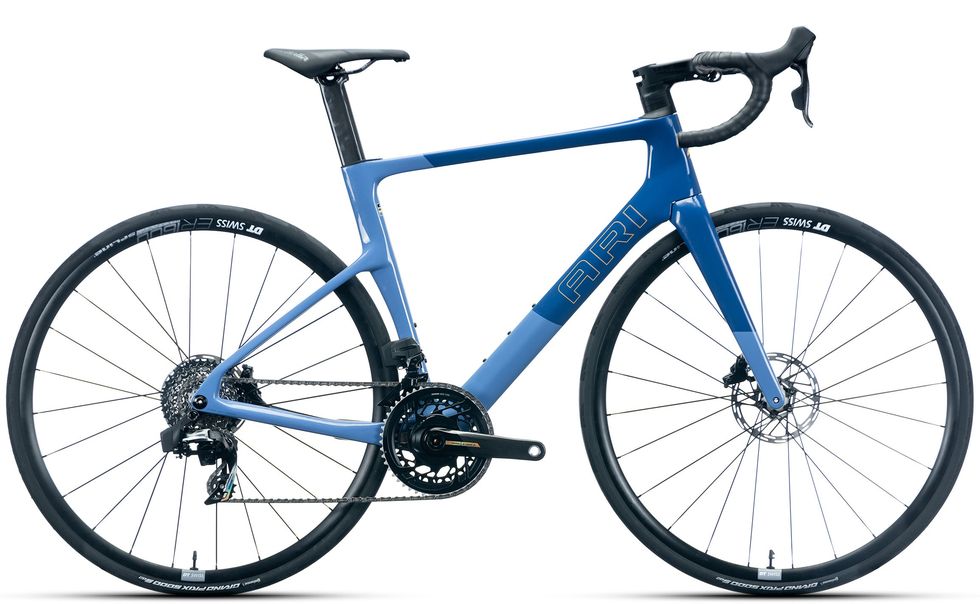
The name has changed, but the value has not! Formerly known as Fezzari, this Utah-based direct-to-consumer brand has consistently delivered bikes that ride great and offer an impressive value when compared to bikes from other brands that have a similar component spec.
The Veyo, the brand's latest lightweight aero road bike, boasts a claimed frame weight of 860 grams. It has easy-to-work-on cable integration and aerodynamic shaping. Bottom line: There is a lot to like here for riders looking for a race-oriented bike.
READ FULL ARI VEYO REVIEW
Bianchi Specialissima Comp 105 Di2
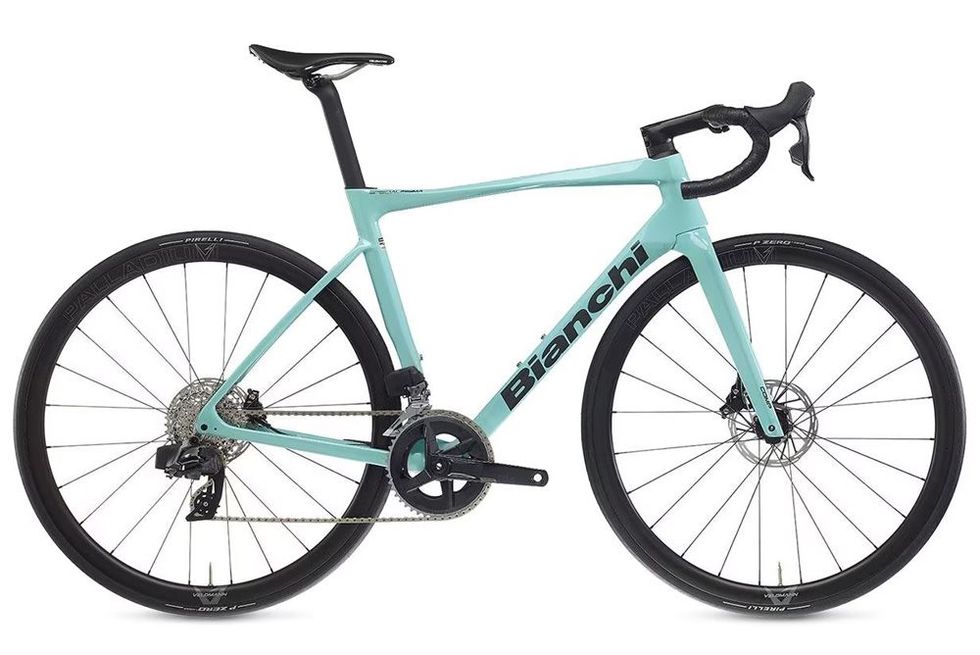
This all-purpose road bike is designed for the cyclist who is getting faster, enjoys racing and group rides, and needs a fast bike that can keep up with them. Bianchi was once a leading road bike brand, and while the celeste-green bikes are less common than they once were, the brand retains its Italian heritage.
Thankfully, the brand did not retain pesky Italian attributes like an Italian-threaded bottom bracket. This bike comes with a Shimano drivetrain, instead of the Campagnolo drivetrain you would have once expected on this bike. That’s a benefit to riders—Shimano’s parts are as ubiquitous as they are effective.
Cervélo S5 Force
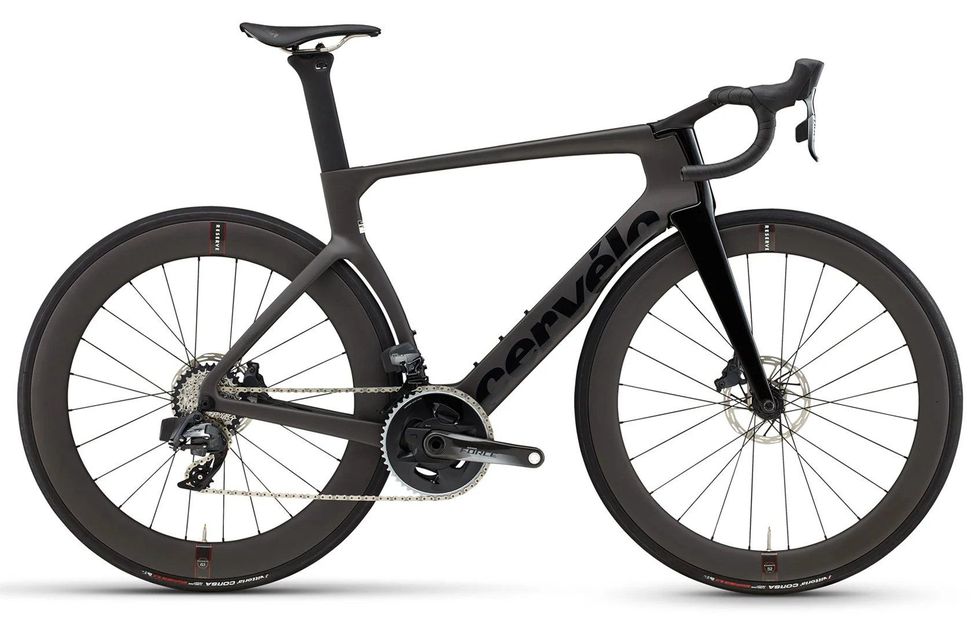
The Cervelo Soloist was one of the first aero road bikes and helpedˇ bring wind-slicing technology to road bikes for the first time. Now known as the S series, this bike has been raced to wins at some of the biggest races in the world by the stars of Cervélo sponsored Visma-Lease a Bike Pro team.
True to its heritage, the S5 is a professional-level bike designed for those who love to go fast. Every shape on this bike is designed to slip through the air with the least resistance, and you will feel the speed while riding. It can’t turn you into Jonas, Wout, Marianne, or Sepp, but it does help you have fun trying!
READ FULL CÉRVELO S5 REVIEW
Factor Ostro VAM Shimano Dura-Ace
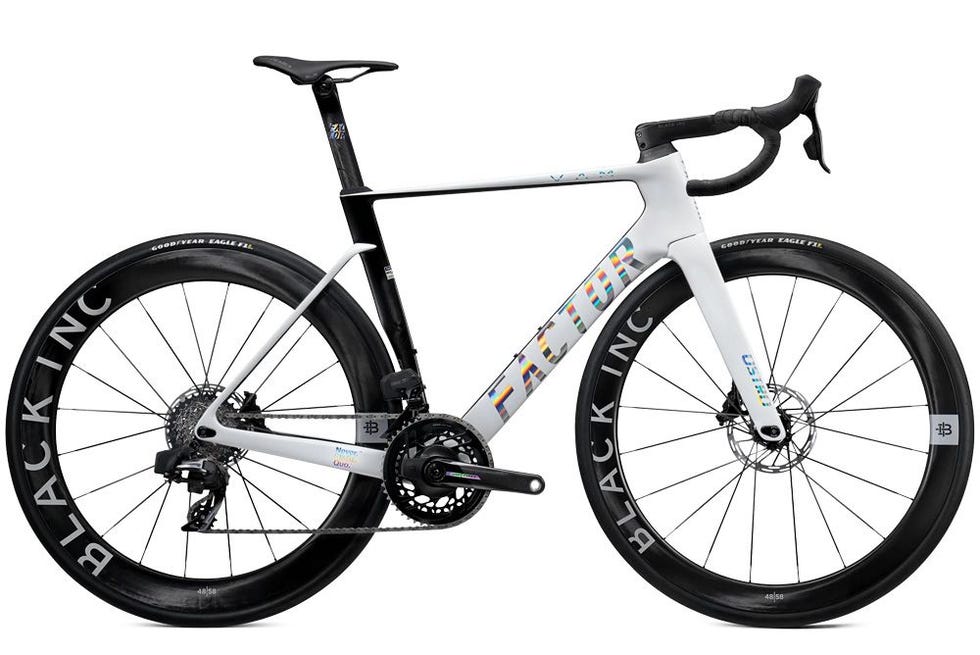
Factor is a newer consumer brand, but the company has been manufacturing frames for other brands for a long time. The brand is now offering its carbon manufacturing expertise directly to consumers. The Ostro VAM has aerodynamic shaping and fast handling geometry that will help you slice your way through a peloton.
With Dura-Ace components and Black Inc. wheels, this bike is light enough that you won’t notice it as you float your way up the steepest climbs just like the pros of Israel-Premier Tech and Parkhotel Valkenburg teams.
Specialized S-Works Tarmac SL8 Dura-Ace Di2
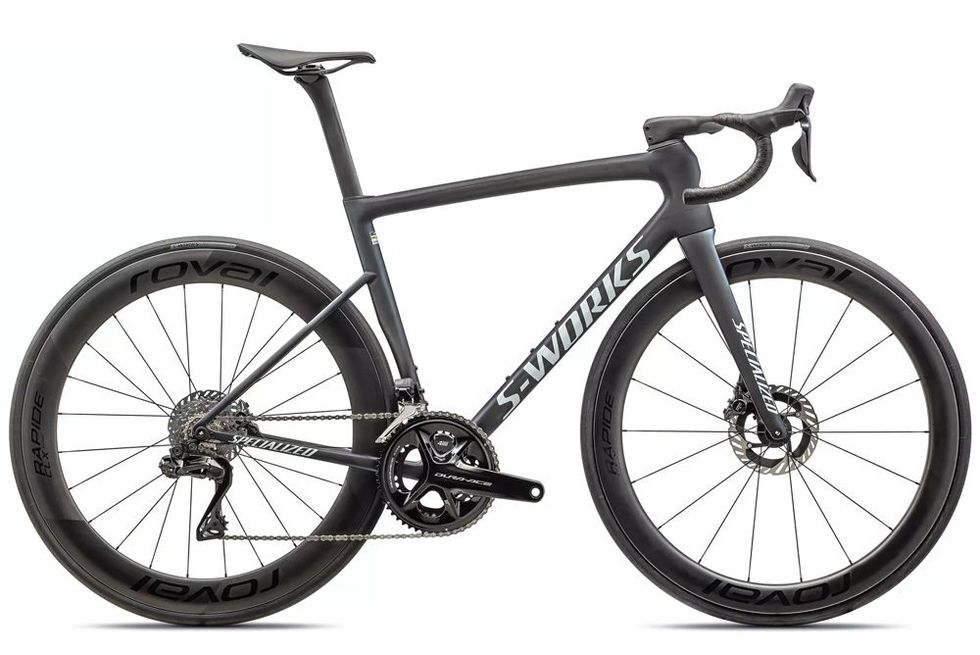
Specialized’s eighth-generation Tarmac road race bike combines the best attributes of the brand’s svelte Aethos road bike and the aerodynamics of its discontinued Venge aero road bike. The result is the Tarmac SL8, which rides beautifully and is one of the smoothest, fastest race bikes on the market. Yes, the cost is astronomical, but if you have the funds, this model should be on your short list.
Disc Brakes Are the Norm
Disc brakes are now common on the vast majority of road bikes. If you haven’t bought a bike in the last 10 years, this may come as a surprise, but you’ll be glad for the change. Disc brakes give you more control, consistent slowing power, and better performance in wet conditions. Less-expensive bikes have cable-actuated disc brakes which work well but need more maintenance. More expensive bikes have hydraulic disc brakes which work even better and require less maintenance.
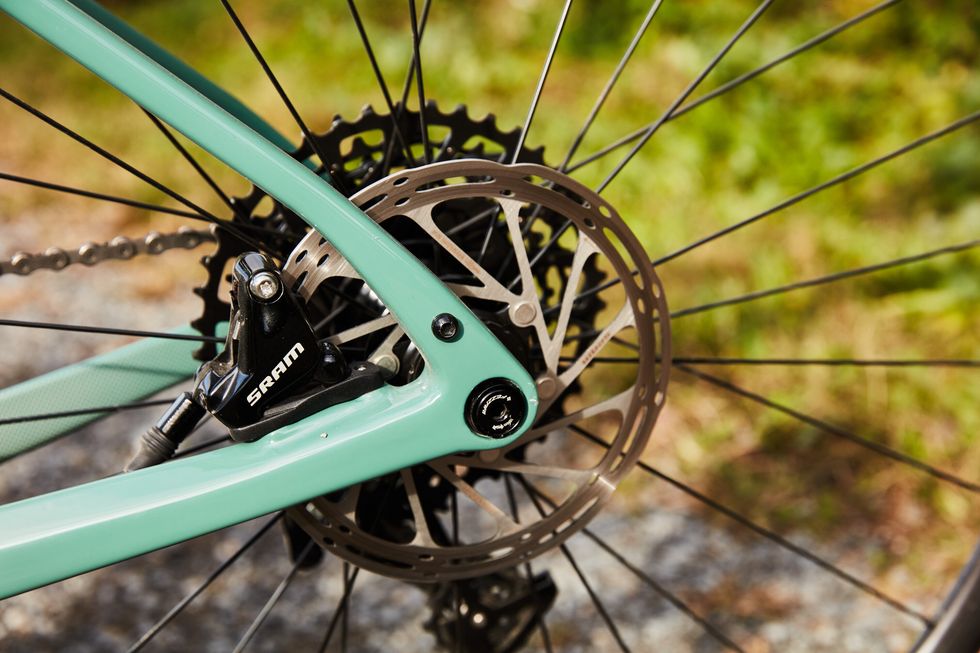
You’ll still find rim brakes from Shimano, SRAM, Tektro, or Avid on some inexpensive road bikes. For cyclists who aren't limited by budget and who still want rim brakes—maybe for the easier maintenance or lighter weight—SRAM and Shimano do still offer high-performance rim brakes to match their high-end component groups. These brakes will serve most cyclists well—everyone used them for decades without issue—but they do require more adjustments. The primary use for these brakes is on custom bikes—very few brands offer their high-performance frame sets in rim-brake versions.
Tire Clearance
There was a time when 28mm tires made a road bike look like someone had squeezed monster truck tires onto a Porsche and left out the lift kit. That size is now quite common on road bikes because we know that 28mm tires give most riders an optimized mix of traction, minimal rolling resistance, road vibration damping, and aerodynamics (depending on the frame’s characteristics).
Also, 28mm tires will fit comfortably on nearly any modern road bike largely thanks to disc brakes that don’t restrict tire size the way outmoded rim brakes do. Many frames will let you mount a tire as wide at 35mm so you can make your ride more comfortable if you desire, or optimize your rig for rides that mix pavement with moderate dirt or gravel.

Whether you choose to ride 28mm tires, bump up to 35mm, or if for some reason you want to stick with the 19mm tires of yesteryear, be sure to note the tire manufacturer’s recommended tire pressure and inflate accordingly. Too much pressure and you’ll bounce all over the road. Too little and you risk flatting.
Frame Materials
Carbon fiber composite and aluminum alloy are the most common materials used in road bike frames and forks. Almost all bikes that cost more than $2,500 are made of carbon fiber. This material is strong, durable, light, and tunable. More than any other material, carbon allows frame engineers to micro-tune areas of a frame with specific attributes, creating stiff or cushioned rides. Carbon frames can also be molded into eye-catching shapes.
You can also find bikes made of steel, titanium, or even bamboo, hardwood, or magnesium if you prefer something less-common. All frame materials have their own unique qualities, and any will serve you well.
At less-expensive price points, you’ll find bikes made of aluminum or steel. And at the very high end, you can find a bike made from any material you like!
My great-grandfather was a tailor. I mention this because his profession meant that I received inter-generational knowledge about how one was supposed to shop for—and wear—the dress clothes that were popular in Eastern European at the turn of the 20th century. The knowledge was pretty much completely wasted on me as I entered a career of working at Bicycling and wearing t-shirts to the office, but the principles of sizing up a dress shirt or suit and sizing up a bike are largely the same: you start with the tape measure.
For a shirt, you get measured around your neck and from the center of the top of your back to your wrist. For a bike, there are several important measurements: inseam, femur length, torso length, reach, as well as how flexible you are.
Bikes are sold in sizes and different types of fits, and they’re also highly adjustable. You will notice that some bikes are labeled with a number that refers to the length of the seat tube. The most common sizes are between 48- and 59cm, usually in 2-centimeter increments.
Other brands label their bikes like clothes—xs, s, m, l, xl. Any shop should be able to fit you to a properly sized bike, regardless of how it’s labeled. Once you know your size, it’s worth considering a bike fit with a professional fitter. A fitter will help you get the bike’s many adjustable features perfectly set so that you can enjoy more comfortable miles.
How Many Speeds?
In the past, many riders would refer to the total number of gears on their drivetrain as how many “speeds” their bike had. “Speed” is another way of saying “gear.” If you had a “10-speed bike,” this meant your bicycle’s drivetrain had five cogs at the rear hub and two chainrings on the crank (5 x 2 = 10).
Now, however, when cyclists or bicycle brands say a bike is 10-speed, they mean the bike has ten cogs at the rear hub. Most bikes have one or two front chainrings, although you can still find the odd triple, especially on touring bikes designed to be weighed down with heavy loads.
Bikes priced less than $1,500 usually have 10-, 9-, or 8-speed drivetrains. With fewer gears, you’ll notice changes between gears more. The more speeds you have, the smoother the transition between gears generally feels. On higher-priced bikes, SRAM, Shimano, and Campagnolo feature 12 cassettes, usually paired with one or two front chainrings.
Many road bikes reviewed by Bicycling feature two chainrings and 11 or 12 rear cogs. But there are other drivetrain configurations.
Another drivetrain you might find is called 1x (pronounced one-by). Popularized by SRAM, this drivetrain is often found on mountain, gravel, and cyclocross bikes, but a few road bikes utilize a 1x drivetrain.
A 1x system does not use a front shifter or derailleur and often offers an equivalent range as a 2x system, but 1x systems have larger jumps between gears. The 1x's advantages are simplicity and fewer dropped chains when shifting. There are also marginal aerodynamics gains compared to a drivetrain with more than one chainring.

Triple cranksets (3x) are rarely found on new road bikes as the gear ranges currently offered by 2x and 1x systems match or exceed the gear spread previously seen on triples.
Electronic vs Mechanical

These days, most high-end road bikes—those $3,500 or more—come with electronic shifting by default, either Shimano Di2 or SRAM AXS (you’ll have to seek out a Campagnolo EPS bike if you want to ride Italian components; very few bikes come with those parts).
Bikes costing less are still equipped with mechanical shifting. While mechanical shifting systems may not have all the cool features of electronic shifting, modern systems work very well. With proper adjustment, these systems can shift just as precisely as an electronic group.
Electronic shifting has several benefits beyond smooth, precise shifts. There are no cables to stretch, so there’s less maintenance. SRAM’s AXS shifting is wireless, so you don’t even have to route anything through the frame.
Battery life is a limiting factor with electronic shifting. Depending on how much you ride, you’ll have to charge your batteries every month or so – but the many advantages of electronic shifting outweigh this one drawback.
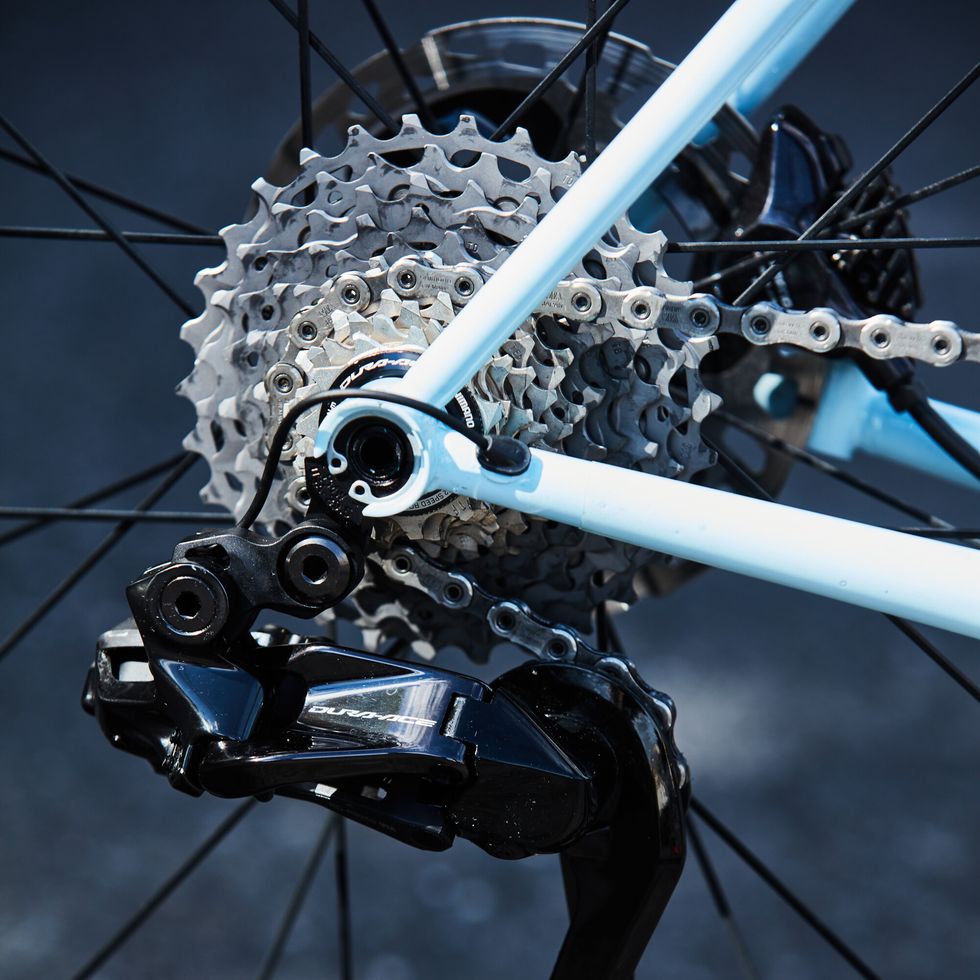
Both of the two major component brands—SRAM and Shimano—offer cyclists multiple levels of road drivetrains. The nomenclature surrounding the various options can sometimes be confusing.
Below are the two major component brands and their component groups (in descending price order). We’ve also included information about Campagnolo’s offerings, although the Italian brand is not nearly as prominent as it once was.
Generally speaking, more expensive groups use more carbon and machined aluminum (versus stamped aluminum or steel) parts to achieve lighter weight and better performance. More expensive component groups will likely have more options for crank lengths and gear sizing.
.css-1dxgn05{-webkit-align-items:center;-webkit-box-align:center;-ms-flex-align:center;align-items:center;background-color:#ffffff;border:0;border-bottom:none;border-top:0.0625rem solid #E5E5E5;color:#000;cursor:pointer;display:-webkit-box;display:-webkit-flex;display:-ms-flexbox;display:flex;font-style:inherit;font-weight:inherit;-webkit-box-pack:start;-ms-flex-pack:start;-webkit-justify-content:flex-start;justify-content:flex-start;padding-bottom:0.3125rem;padding-top:0.3125rem;scroll-margin-top:0rem;text-align:left;width:100%;}@media(min-width: 64rem){.css-1dxgn05{scroll-margin-top:3.375rem;}} .css-b4ahb2{border-radius:50%;width:1.875rem;border:thin solid #737373;height:1.875rem;padding:0.4rem;margin-right:0.625rem;} .css-jlx6sx{display:-webkit-inline-box;display:-webkit-inline-flex;display:-ms-inline-flexbox;display:inline-flex;width:0.9375rem;height:0.9375rem;margin-right:0.625rem;-webkit-transform:rotate(90deg);-moz-transform:rotate(90deg);-ms-transform:rotate(90deg);transform:rotate(90deg);-webkit-transition:-webkit-transform 250ms ease-in-out;transition:transform 250ms ease-in-out;} Shimano
Dura-Ace → Ultegra→ 105 Di2 → 105 → Tiagra → Sora → Claris
The latest Dura-Ace, Ultegra, and 105 drivetrains from Shimano are all 12-speeds. Dura-Ace and Ultegra are both electronic, while the lower-cost 105 group is available as either 12-speed electronic or 12- or 11-speed mechanical.
Some bikes that blur the line between road and gravel might use GRX gravel components. The new GRX group has 12-speed mechanical shifting. (Previous generation 11-speed Di2 and 11- and 10-speed mechanical variants are also still found on some bikes.)
SHIMANO DURA-ACE AND ULTEGRA REVIEW SHIMANO 105 DI2 INFO SRAM RIVAL AXS VS SHIMANO 105 DI2 SHIMANO GRX REVIEW
Red AXS → Force AXS → Rival AXS → Apex AXS →Apex
SRAM’s electronic shifting, 12-speed drivetrain is named AXS. SRAM also offers a 12-speed mechanical shifting Apex group.
SRAM FORCE AXS REVIEW SRAM RIVAL AXS REVIEW SRAM APEX AXS REVIEW
Super Record Wireless → Super Record → Record → Chorus
Campy recently released its new 12-speed Wireless electronic groupset and discontinued its EPS (wired) electronic shifting groups, though you might still find these on some bikes. Super Record, Record, and Chorus are all 12-speed mechanical shifting drivetrains. Campagnolo also offers a 13-speed 1x-only groupset named Ekar, which is primarily found on gravel bikes.
CAMPY SUPER RECORD WIRELESS INFO
Want to learn how to better shift gears? Or more about electronic shifting? Check out our guide to better shifting here . And if you're considering electronic shifting read all about it here .
Expert Andrew Bernstein, Who Rides His Specialized Turbo Creo Around the Steep Dirt Roads Where He Lives, Shares What to Have Along for the Ride, and Why Bikes Seem So Expensive Nowadays.
What accessories will i need.
Accessories will depend on what you need to support the way you ride, but there are definitely a few items I recommend: A pair of bib shorts or bike shorts will make any ride more comfortable and fun.
You’ll definitely want to carry a spare tire, CO2 inflator or mini-pump, or other means to repair a flat tire. I also suggest a rear-facing red light that’s bright enough to be seen in daylight.
Why does it feel like bikes are so expensive now?
While you can spend more than ever before on the top end, there are still plenty of lower-cost models available. If it feels like you’re getting less for the same amount of money, keep a couple things in mind: First of all, yes, inflation has driven up the cost of all goods, including bikes. But also: you’re getting a lot more value than you did 10 or 20 years ago.
In 2010, a $3,000 bike likely would have come with Shimano Ultegra-level components. That same bike now probably comes with 105, but you also get a stiff, compliant carbon fiber frame that will ride better than earlier bikes, powerful hydraulic disc brakes, slick-looking internal cable routing, and dependable 12-speed shifting, instead of 10-speed. In fact, I’d choose a 2024 105 group over a 2010 Ultegra group any day!
What bike do you ride?
Mostly, I ride a Specialized Turbo Creo e-gravel bike to crush the steep dirt roads above Boulder. I also ride a Yuba Spicy Curry around town. When I feel strong and want to ride sans-motor, I reach for either a Canyon Endurace or my 2013-vintage Specialized Venge.
Andrew “Bernie” Bernstein is a former Bicycling Magazine Gear Editor, and Bicycling marketing manager. While at Bicycling, he promoted the Bicycling Fall Classic, and the famed Fifth Street Cross Thursday Night Training Series. Bernie was an elite track and road racer from 2010-2019. In 2019, he was hit by a driver near his home in Boulder, CO. The crash nearly killed him and left him with paraplegia. He considers himself very lucky to still now be able to hike, and ride with the help of an e-gravel bike. He’s written about his experience as a paracyclist disabled athletes for Men’s Health, Bicycling, and Outside Magazine. You can follow his adventures on Instagram .
Test Editor Dan Chabanov got his start in cycling as a New York City bike messenger but quickly found his way into road and cyclocross racing, competing in professional cyclocross races from 2009 to 2019 and winning a Master’s National Championship title in 2018. Prior to joining Bicycling in 2021, Dan worked as part of the race organization for the Red Hook Crit, as a coach with EnduranceWERX, as well as a freelance writer and photographer.

.css-1t6om3g:before{width:1.75rem;height:1.75rem;margin:0 0.625rem -0.125rem 0;content:'';display:inline-block;-webkit-background-size:1.25rem;background-size:1.25rem;background-color:#F8D811;color:#000;background-repeat:no-repeat;-webkit-background-position:center;background-position:center;}.loaded .css-1t6om3g:before{background-image:url(/_assets/design-tokens/bicycling/static/images/chevron-design-element.c42d609.svg);} Road Bikes

Tested: Trek's Carback Bicycle Radar Light

SRAM Red AXS 2024—What's New, What's Not

SRAM Launches its New Red AXS Road Group

SRAM Red AXS 2024—Should You Upgrade?

There’s Nothing Quite Like 3T’s Strada Italia
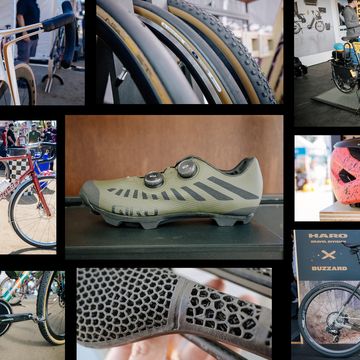
The Hottest Road and Gravel Bikes for Spring
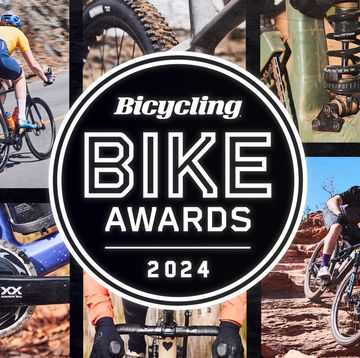
2024’s Best and Most Exciting Bikes!
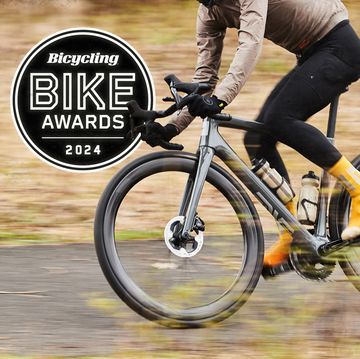
2024’s Best Road Bikes
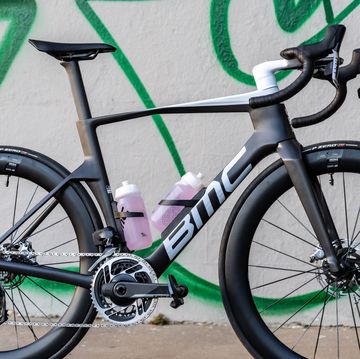
Reviewed: BMC‘s Fast and Unique Teammachine R 01

Best Hybrid Bikes You Can Buy Right Now
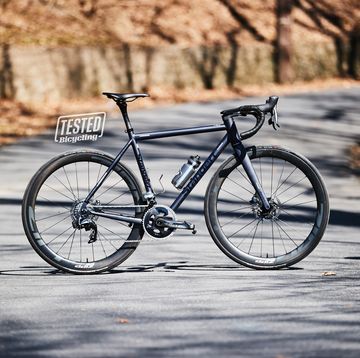
The Kreissäge RS Is an Unapologetic Race Bike

NCM e-Bikes Review: Are These Bikes Any Good?
Last Updated on November 17, 2023 by Igor Karni
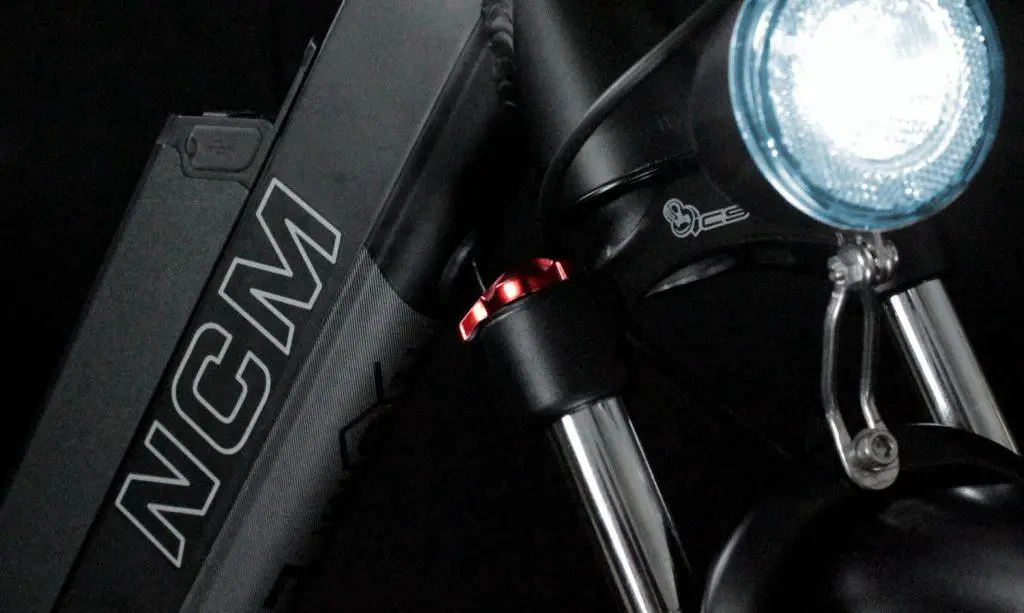
German-based e-bikes company, NCM, is connected to other brands such as Australia-based, Leon Cycle, and Leisger. NCM represents the pedelec arm of the said conglomeration. Established in 2014, its main headquarters are located in Hanover, where it still does most of the designing. It does the manufacturing in France, Vietnam, and China.
Table of Contents
The brand doesn’t explicitly state what its name or abbreviation stands for. Since its history is intimately tied to its parent brand, Leon Cycle, you don’t need to look further than the latter’s history to know more about NCM. It started out mainly as an online retail shop specializing in e-bikes and after less than a decade, it has already expanded to Spain, Australia, the UK, and the USA.
NCM e-Bikes Review: Model Lines
Ncm: veritable deliverers of quality, reliability, and durability at affordable prices.
The brand proclaims that it delivers all three of the said factors and, more or less, it manages to do so considering some of the gems in its catalog. NCM has a fairly balanced and varied collection of e-bikes.
It has different offerings for eMTB, commuter, folding, fat, and cruiser lovers alike. Their relatively budget-friendly e-bikes lean more toward the sporty side, as evidenced by the general geometry and components of the models, without sacrificing style.
NCM Aspen Fat Model Line
The Aspen Plus provides excellent value for money through its sheer sturdiness, high-quality components, and riding experience that don’t leave feeling like you got the shorter end of the stick. Sure, the Das-Kit rear 250W motor may not compare to more premium-priced mid-drives out there, but it’s sufficiently powerful because it can tackle any kind of terrain and performs particularly well on snowy trails.
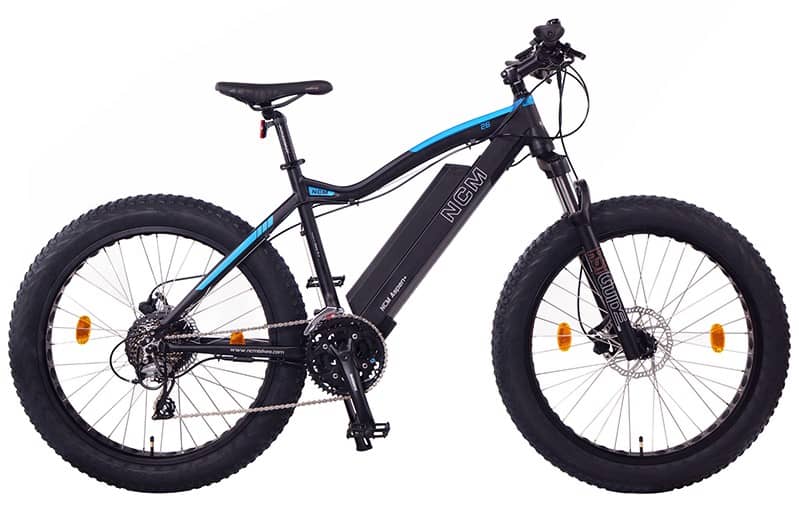
It’s heavy but sturdy, making it great for beginners. Despite this, it can top at more than 20mph (32 km/h). The full-throttle adds obvious convenience, however, we don’t recommend relying solely on the motor when negotiating steeper than normal inclines.
We also like that you can push this e-bike up to 50 miles (80 km) with a single charge. It uses a brand-standard Das-Kit LCD display that only gives you the bare necessities as far as most e-bikes displays go.
Read also: Why fat tires are good news for electric bikes ? And, How to select the best hybrid e-bike ?
The Aspen Plus is certainly better than its standard counterparts as far as components are concerned. You get sufficiently wide, 26” fat tires, Tektro hydraulic disc brakes as well as optional headlights and taillights.
We invite you to take a closer look at the NCM Aspen Fat model line here .
NCM Moscow eMTB Model Line
The NCM Moscow, particularly its Plus version, received rave reviews on its release and arguably remains one of the fledgling brand’s milestones. It uses a smaller than normal Das-Kit geared rear hub motor with 250W of output and as much as 55 Nm of torque. Great figures, considering the affordable price range.
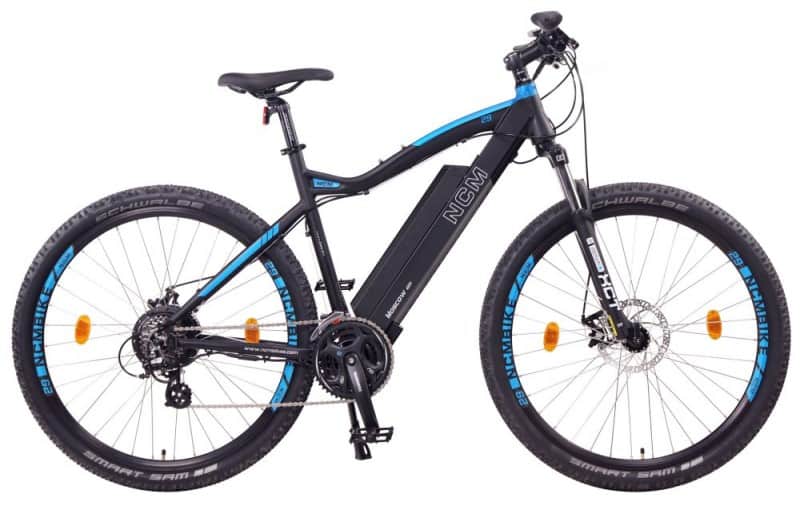
If we add in the 48V lithium battery that can last up to 75 miles (120 km) with wise usage of the pedal assist, you pretty much get a steal of an eMTB. It uses hard-gripping Schwalbe tires that can handle most kinds of terrain, which only ups its versatility.
We also love the ergonomic handlebars and the relative comfort of the gel seats. We recommend the Plus version simply because it guarantees your safety better with the Tektro hydraulic disc brakes. They’re “smart” brakes that integrate an interrupter safety feature that lets you shut off the motor should the need arise.
Read also: How to select your first electric mountain bike ? And, How much does a good eMTB e-bike cost ?
On the whole, it’s an e-bike that’s up there when we’re talking about outstanding value for money as far as e-bikes are concerned.
We invite you to take a closer look at the NCM Moscow eMTB model line here .
NCM Prague eMTB Model Line
Fat-tired and cheaper than most, NCM’s Prague line is another proof that the brand knows how to design budget-friendly offerings without compromising on quality. Specs-wise, it’s slightly less beefed up than the Moscow, but it’s still above-average overall.
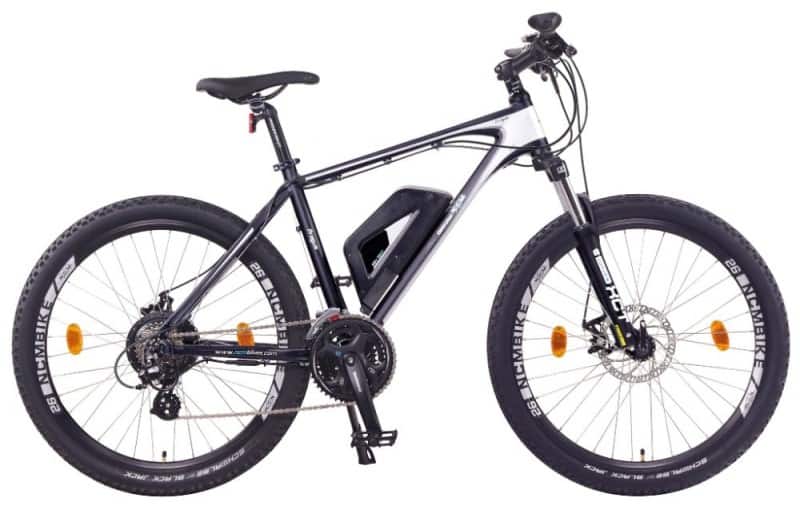
The 36V battery can give you up to 40 to 60 miles max (65 to 95 km), and the Bafang rear hub motor it uses has stood out in the e-bike industry as one of the most durable that’s available in the market. If you want an eMTB that’s sturdier, safer, and more capable of handling rougher terrains, this is a good candidate because of the Schwalbe 26” fat tires.
Read also: How much elevation / altitude can electric bikes climb ? And, Can electric bikes go up steep hills ?
It doesn’t have a Plus version, as of this writing. Still, the Tektro mechanical disc brakes are commendable enough for their stopping power. Nothing beats hydraulic, though. The Prague is definitely still a steal by virtue of the perks outlined here and its low price.
We invite you to take a closer look at the NCM Prague eMTB model line here .
NCM Milano Hybrid Model Line
A commuter hybrid, the Milano is certainly one of the most versatile models in the NCM catalog. The step-thru frame definitely helps make that more viable. If we add in the soft cushion of the saddle and the upright seating position, it may even fit the cruiser category with ease!
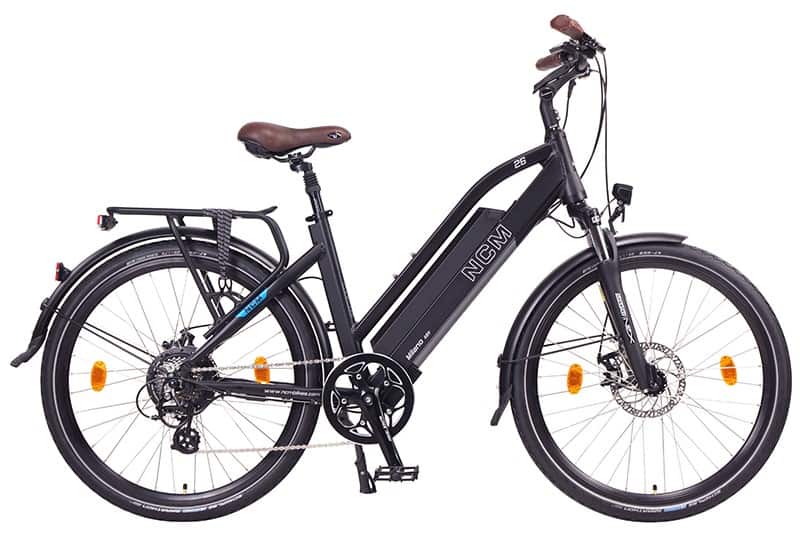
The Plus is adequately powerful, though, as evidenced by the same 48V battery and Das-Kit rear hub motor that it uses. Expect the specs to be mostly similar with a few deviations. Riders enjoy impressive riding ranges that can go up to 93 miles (150 km) in a single full charge.
The motor makes easy work of even the steeper climbs out there – all the more so if it’s ridden on paved roads. This model is more complete when it comes to components, though.
Read also: How to select the best commuter e-bike (with examples)? – also in this article . And, how much does a commuter e-bike cost ?
Both the standard and Plus include a fairly lengthy rear rack, headlights, kickstand, and fenders. The Plus, with its addition of hydraulic disc brakes, leaves no room for want, so we think it’s still better than the MAX. Although, the MAX does incorporate a mid-drive Bafang motor, which makes it lighter.
We invite you to take a closer look at the NCM Milano Hybrid model line here .
NCM Munich Hybrid Model Line
The Munich is NCM’s entry-level commuter that imparts the same comfort as the Milano line. The NC8 version has larger 28” Schwalbe marathon tires that are ideal for longer rides. It also uses a unique combination of Promax-V and Shimano coaster brakes, which obviously requires the user to know their individual mechanisms.
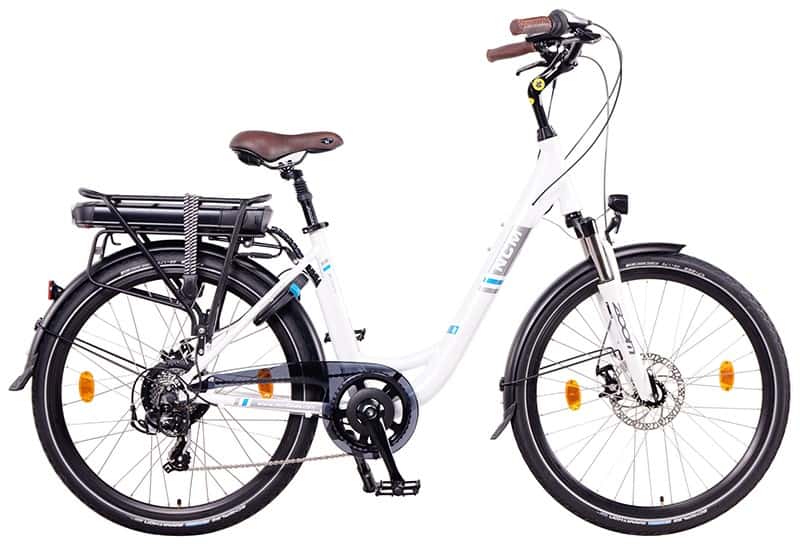
If you’re not already aware of it, coaster brakes brake when you pedal backward, making it appeal to a specific type of rider. If you don’t prefer that, you can always go for the standard, which uses Tektro disc brakes.
The range tops to about 43 miles (73 km) for both. The models are comparatively light compared to other commuter options out there, which is a wonder since it uses the same Das-Kit rear hub motor found in most NCM models.
Read also: How to select the best cruiser e-bike ? And, How much does a good cruiser e-bike cost ?
Expect to get the same slew of accessories as the Milano once you choose any Munich model. The same can be said for the overall riding experience, although the Munich can only manage half the range that the Milano can achieve.
We invite you to take a closer look at the NCM Munich Hybrid model line here .
NCM Venice Hybrid Model Line
The Venice may seem like just a step-over version of the Milano, but that’s not really the case for its Plus version. You get to enjoy the exclusivity offered by the Venice once you choose its Plus version because of the patently superior components it has.
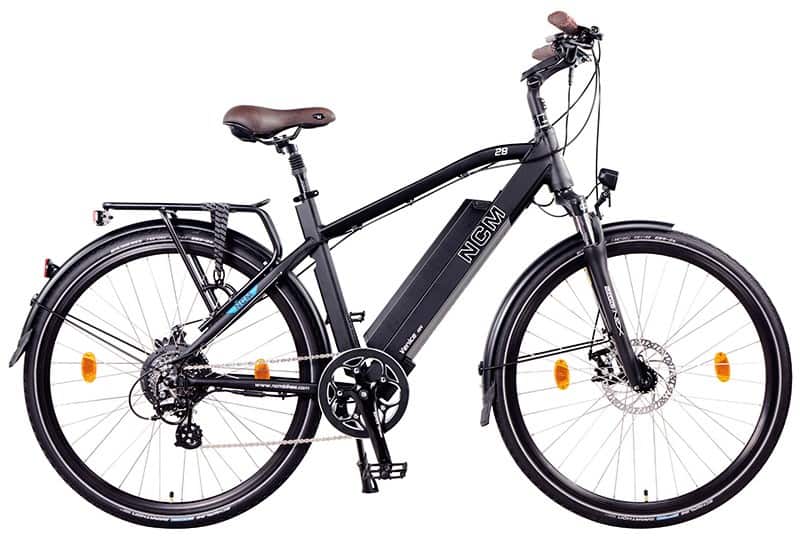
We like the far better hydraulic brakes it uses, which also happen to have brake sensors. The Venice Plus also has a faster charger. Another unique feature is the Prowheel crank it uses, which has received generally positive reviews in bike circles.
Read also: How to select the best city e-bike (with examples)? – also in this article , and this article . And, How much does a good city e-bike cost ?
Other than these features, expect the Venice to share the same specs as the Milano.
We invite you to take a closer look at the NCM Venice Hybrid model line here .
NCM Paris Folding Model Line
Same as other NCM models, you don’t want to settle for anything other than the Plus version of this folding e-bike. We like the overall smart design of this folding e-bike. For one, we like how you can easily take out the battery by adjusting the saddles and just turning the key and pulling it out for charging. It’s just as easy to slide in.
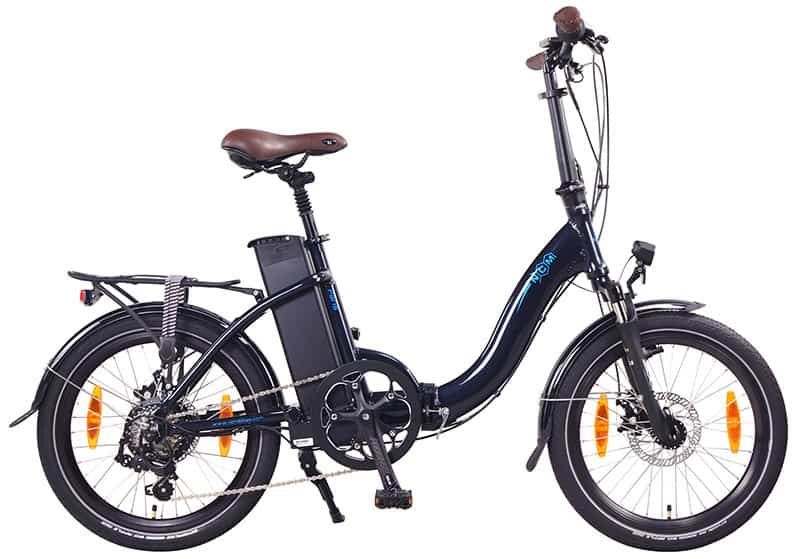
We prefer the gel saddles of the Plus version for maximum comfort, and it complements the fact that it’s a suspension seat post. There’s also front suspension, which works just as decently. Of course, the Plus also uses infinitely better hydraulic disc brakes and a faster charger.
The e-bike contains almost every accessory found in NCM’s hybrid commuters, so that’s a big plus because you practically get a folding version of those models with either the Paris or the London.
Read also: How to select the best folding e-bike (with examples)? And, How much does a good foldable e-bike cost ?
The fact that it’s step-thru is somewhat great, but most folding e-bikes have low enough frames as they are. Lastly, it takes up close to half of the space it usually occupies once fully folded.
We invite you to take a closer look at the NCM Paris Folding model line here .
NCM London Folding Model Line
There’s a very thin line that divides the London folding line from its Paris counterpart. Technically, the London is just a step-over variation of the Paris, with a slight very negligible difference in the shift lever used. We have the same feedback as the Paris with regards to its performance and components.

We invite you to take a closer look at the NCM London Folding model line here .
Does NCM Offer a Manufacturer’s Warranty?
NCM e-bike buyers enjoy a one-year warranty for all the electrical parts of any model.
What Do Most Riders Like About NCM?
It’s obvious that the brand appeals to casual riders who don’t want to have to spend an arm and a leg just to get to ride a high-quality e-bike. We need to emphasize the quality part since the other aspect that evidently makes NCM stand out is it doesn’t skimp on imparting value to riders. That it underwent vigorous growth since its founding only proves this point further.
What Countries Does NCM Ship To?
Besides the countries, we mentioned above, anywhere where there’s a Leon Cycles dealer or if Amazon USA allows shipping to your particular country.
Read also: Check out the most popular e-bike brands .
Igor is a sustainable mobility and green energy advocate. His mission for Easy E-biking is to help make electric cycling simple, practical, and fun. Follow him on Facebook and LinkedIn .
Related Posts

Best e-Bikes Made in Spain. 17 Spanish e-Bike Brands.

Best e-Bikes Made in Italy. 30 Italian e-Bike Brands.
About igor karni.

Hey there! My name is Igor Karni. I created this site to help you find answers to your questions about e-bikes. I hope that this blog will give you enough knowledge to rent or buy an e-bike you will love and the one that best suits your personal needs. It will make me happy if my articles help make your decisions a bit easier. And you have fun following the process!
LEGAL INFORMATION
This site is owned and operated by Easy e-biking. Easyebiking.com is a participant in the Amazon Services LLC Associates Program, an affiliate advertising program designed to provide a means for sites to earn advertising fees by advertising and linking to Amazon.com. This site also participates in other affiliate programs and is compensated for referring traffic and business to these companies.
Privacy policy Editorial policy Terms and conditions
Brilliantly
Content & links.
Verified by Sur.ly
Follow us on
Stock images by Depositphotos
No thanks, I’m not interested!


NCM Moscow Plus Review
- Home
- Reviews
- Brands
- NCM Reviews
- NCM Moscow Plus Review
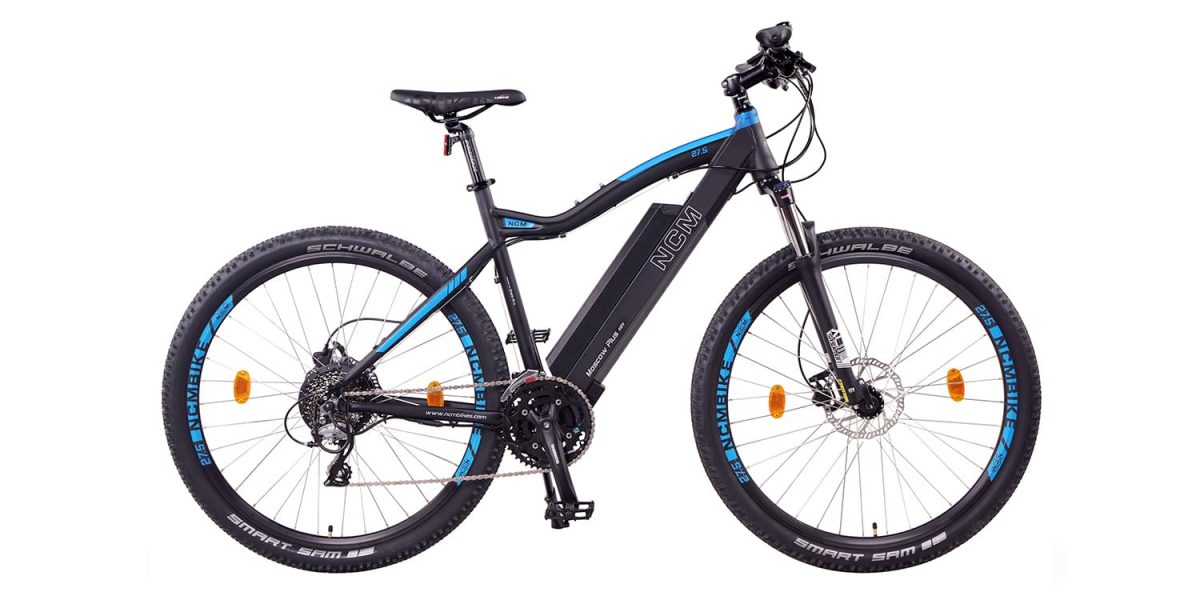
- NCM Reviews
- Class 3 Electric Bike Reviews
- Electric Mountain Bike Reviews
- Hardtail Electric Mountain Bike Reviews
- Hub Motor Electric Bike Reviews
- A cross country style hard-tail e-mountain bike with 80mm suspension fork, knobby trail tires, and sturdy alloy pedals, includes a trigger throttle up to 20 MPH
- Lots of adjustability with the display panel, including speed, the 12-magnet cadence sensor is very responsive, motor inhibitors in both of the levers, large 180mm hydraulic disc rotors in front and rear
- Upgraded suspension fork, hydraulic brakes vs mechanical, better saddle, derailleur, cassette range, battery, and display from the regular Moscow version
- The kickstand works decently well but can block the left crank arm when down, 2amp charing is slow for the high capacity battery, some wires stand out vs. being completely internal, not much room to add things on the handlebar
Video Review
Introduction
Body position:, suggested use:, electric bike class:, learn more about ebike classes, availability:, model year:, bicycle details, total weight:, battery weight:, motor weight:, frame material:, frame sizes:, geometry measurements:, frame types:, frame colors:, frame fork details:, frame rear details:, attachment points:, gearing details:, shifter details:, brake details:, seat post length:, seat post diameter:, tire brand:, wheel sizes:, tire details:, tube details:, accessories:, electronic details, motor brand:, motor type:, learn more about ebike motors, motor nominal output:, motor torque:, battery brand:, battery voltage:, battery amp hours:, battery watt hours:, battery chemistry:, charge time:, estimated min range:, estimated max range:, display type:, display accessories:, drive mode:, written review.
To run the forums, host the website, and travel, I charge a universal service fee for my reviews. This review was sponsored by NCM. My goal is to be transparent and unbiased, this video and written review are not meant to be an endorsement of NCM products.
NCM is a new company to me, but they are using reliable and proven systems in their ebikes, so in someway, there is a nice familiarity to it. Today we are checking out their Moscow Plus, the big brother to the Moscow. The Moscow Plus features a nicer suspension fork, hydraulic brakes, more comfortable saddle, and an upgraded derailleur with more gear ranges. There is also a better battery coupled with a nicer display. Because they share the same frame however, you will find a lot of parallel information in this review if you read the write up on the regular Moscow. So the Moscow Plus here is an aluminum alloy frame hard-tail ebike that comes in 2 sizes. Each size also has tire options as well, so basically there is a 19” frame and a 20.5” frame and you can choose either 27.5” tires, or 29” tires. Today we have the 19” frame with the 27.5” Schwalbe Smart Sam knobby tires. Overall the bike weighs about 56.1lbs, (about 1.4lbs lighter than the regular Moscow) and costs $1,899 USD and $2,399 in CAD. As I mentioned before, it is a bit of a hard-tail setup, so you do get this nice SR SunTour XCM30 spring suspension fork. It has 80mm of travel, larger 30mm stanchions, and includes compression adjust, lockout, and preload adjust. Pretty standard hub spacing in the front, 100mm, and there is a 9mm quick release skewer in the front, but none in the back since this is a hub-drive. I am told that it has a maximum weight capacity of 275.5lbs, which is higher than standard. This might come in handy since the bike does have bottle cage bosses, rack bosses, and even fender provisions, so you could really load it up with accessories and it should handle it very well. I like that there is an adjustable length kickstand included, but it is center mounted. That means that you could have the pedals strike the kickstand when down and reversing, an annoying occurrence sometimes referred to as ‘pedal-lock’. The seat post here is a rigid post, which is normal, but since it is 30.9mm, you could swap that out with a nice suspension seat post to get some more cushion on top of that front suspension fork. Other features include ergonomic Velo grips, Wellgo aluminum alloy platform pedals, and one of my favorites, a slap guard that will protect the bike frame and paint from getting nicked by the chain and scratching the paint.
Driving the Moscow Plus is a 500 watt nominally rated planetary geared hub motor. I love that it is fairly compact given the high power output. Power wise, it can deliver up to 80nm of torque, which is quite high, but it cannot leverage gears the way that a mid-drive could. The upside is that the motor always feels zippy, it doesn’t matter which of the gear combinations you are pedaling with. And, the motor can deliver instant power with the minimalist throttle. Hub motors are a great fit for hardtail mount bikes because there is no rear suspension to interfere with. As you shift gears, there won’t be increased mashing or forces applied to the drivetrain because the motor operates completely independently of the chain and sprockets. Moving the bike is done here with either the throttle or the cadence based pedal assist. Of course, this motor will use more power if you’re constantly starting with the throttle, but that’s a worthwhile trade for someone like myself, who has a knee injury. I love being able to override assist with the throttle at any time. I also love that the throttle is easily disabled by removing a cable in case you need to make the bike legal for other trails or local laws. Mechanically, you have 3 rings in the front (48,28, and 28), but sadly, there is no chain cover to protect your clothing. In the rear you have an upgraded 11-32 tooth setup, so a bit better range than the standard Moscow. All in all, it is a Shimano Acera system, and you also get 8 speeds, trigger shifters, and a couple of display windows that tells you what gear you are in. There is a derailleur guard here too, something I love since it protects the derailleur during shipping, or if the bike takes a spill some day. Stopping the Moscow Plus is a set of hydraulic brakes. This was one of my grips on the regular Moscow, so I am happy to see they are offered here in a set of 180mm rotors for both the front and rear. Another upgrade here on the Plus is motor inhibitors in both brake lines. The regular Moscow only had it on one lever so I am glad it is here as it helps cut power to the motor when stopping.
Powering the NCM Moscow Plus is a high capacity Lithium-ion battery pack, offering 48v 16ah hours of capacity! I would say that’s a nice upgrade from the 48v 13ah of the regular Moscow…that means you can go further or ride at higher speeds. I love that they use a sealed external controller, this allows a lower cost for replacement batteries, and keeps the controller protected from harsh elements. Where as some companies are $800-$1000 range for a new battery, this keeps the NCM battery cost to around $500. Note that whenever you’re operating around or above 20 mph, air resistance is going to cause exponential energy draw and range will be decreased. This pack delivers electricity to the motor, but also the backlit display panel (hold the + icon to turn on backlighting), and even a full sized USB charging port on the top right side. You could use this port to maintain phones, GPS, or music devices as you ride or when parked at home or a camp site. My friends recently took a bikepacking trip using another electric bike, and this sort of charging-on-the-go feature would be really handy. If you’re excited to charge while riding, I recommend using a right-angle USB adapter like this , just to keep the wires tucked in and out of the way while you pedal. The battery pack weighs more than average at 9.2lbs, but the alloy casing is sturdy and most of the weight is kept low and center on the bike frame. I took the pack off when moving the bike to our review location, to reduce load on my car rack. If you live up stairs, removing the battery is a great idea, and for those who need to leave the bike in a cold, hot, or wet locations… being able to protect and charge the battery inside is a great thing. It’s best to maintain the pack above 20% and avoid extreme temperatures. It’s going to take a bit longer to fill this battery because of the higher capacity, and the charger is more basic, offering 2amp output vs. 3amp or 4amp. So expect 6 to 7 hours for a fill recharge if you go all the way down to zero. One quick warning about charging the battery while mounted to the bike, be careful with the left crank arm because it passes directly in front of the plug port on the left and could bend or snag the charging plug and cable.
The display on the Moscow Plus is upgraded, nice and large and easy to read. To begin, just hold the power button on the little control pad near the left grip. It activates the display and you get several readouts including assist level, current speed, and battery capacity. Pressing power one time will activate backlighting on the LCD display and holding the down arrow constantly will activate walk mode (which can be handy if you need to to ascend a ramp, make your way through a walk-only space, or even climb stairs). The display can show different menus if you press the set button, a nice feature to dive in a little more. I like the size and position of the display, you can even angle it forward and back to reduce reflection glare, but it is not removable. For those who plan on commuting, it might be worth strapping your helmet over the display to keep people from noticing or scratching it, and also protecting it from the sun, while parked at racks. Overall, I would still call this display panel and accompanying button pad above average, I love that it can be angled to reduce glare and feel that it looks beautiful and is well sealed against water… but to clean the bike it is recommended to use a damp cloth vs. spraying it. Don’t ever submerge the bike components or spray them hard. Also, consider storing the battery pack away from extreme heat and cold to protect the cells. The only other thing I would mention is that the display is large and center mounted, taking up a lot of valuable surface area on an already crowded handlebar, so it may be difficult to add accessories.
In conclusion, the Moscow Plus was a lot of fun, and as mentioned earlier, is using a lot of nice proven technology that has kept many happy. This is a value priced ebike, so there will be some tradeoffs to consider, so I should make mention of those now… For one, the kickstand is center mounted, so if the kickstand is down and you are reversing the bike, you will encounter pedal lock. I noticed that there is no chain ring cover or guard, so be careful when pedaling with clothing like pants or a dress. The charger is just 2amps, this means charging happens slowly, so matched with that high capacity battery, it could take quite some time. Tradeoffs aside, it is a very well put together bike with a lot of what we have come to know and love about ebikes, and at a price of just $1,899 in the US, will appeal to many customers. I want to thank NCM for the chance to check out the Moscow, and I look forward to reviewing more bikes from this new company.
As always, I welcome questions and feedback in the comment section below. Whether you own a previous version of the bike, have taken a test ride, or are brand new to the space, my goal is to provide an objective and honest resource. You can also join the Other Brands ebike forums and share your own photos, videos, and review updates to help others! Have fun out there, and ride safe :)
- The Moscow blends off-road geometry, suspension, and tires with urban utility because you can add fenders and a rear rack, there are also bottle cage bosses on the top as well
- There are 24 gear combinations to explore here, and that empowers you to climb easier or hit and maintain the top assisted speed, I really appreciate the slap guard on the right chain stay and the steel derailleur guard at the rear which also protects the motor power cable (especially when the bike is being shipped)
- The 500 watt Das-Kit motor is powerful and zippy but completely independent from the the pedal drivetrain, it’s a good choice for a bike with so many gears vs. a mid-motor, it also allows for instant throttle power regardless of which gear you’re in
- One of the advantages of having a front derailleur is that it keeps the chain from bouncing off track, it does usually add more weight and maintenance to the bike however, and if you’re using either of the two smaller chainrings the larger 48 tooth one can snag your pant leg because there is no bash guard plate
- Good weight distribution, the battery is positioned low and center on the frame, it seems well protected and blends in pretty well with the black accents on the fork, handlebar, seat, and chainrings
- Great tires for cross country and street riding, the 27.5″ x 2.25″ size is lightweight and efficient, they steer quickly and Schwalbe products tend to be higher quality, there is also a 29” option as well
- At $1,899 USD and $2,399 in CAD, it is competitively priced and will serve many customers well since it has a throttle, high capacity battery, and suspension
- I’m glad that they chose a trigger throttle vs. twist because it makes the grips more secure and reduces accidental activation, the 12-magnet cadence sensor is also more responsive than 8 or 5 on many other products
- The suspension fork offers compression lockout and preload adjust, this allows it to firm up for smooth riding conditions like city streets, reducing bob and energy loss as you pedal
- You get a flick bell, locking ergonomic grips, and a pair of large sturdy platform pedals that should work well in all sorts of conditions and weather, sometimes these parts are cheaper on value priced ebikes
- I love the high capacity 14v 16ah battery, it even has a USB port on the side to take advantage of it and use it as a power bank, perfect for traveling
- Between the knobby tires and 80mm suspension fork, this bike feels pretty comfortable, but I might recommend a suspension seat post to make things even more cushy for your ride
- The 180mm rotor hydraulic disc brakes are a great upgrade here, they are complimented well by a nicer derailleur, better gearing range, and more gearing options here on the Plus vs the regular Moscow
- The Plus is actually lighter by 1.4lbs despite its larger battery, better fork, upgraded gel saddle, and nicer display
- Minor gripe here, but I actually prefer the integrated finger bell on the regular Moscow as opposed to this more generic bell on the Moscow Plus, this was likely chosen to save space on the handle bar since it is using a larger display
- Some of the wires on this ebike are a bit more exposed along the base of the top tube, it looks a bit cleaner and reduces snags when they are completely internal
- This e-bike weighs more than your average trail bike at 56.1lbs because it has a higher capacity battery and a more basic spring suspension fork vs. air, I’d definitely take the battery off when lifting and transporting it
- No chain cover or guard means you need to be careful with your pants or dress, you don’t want it getting snagged and torn up in the chain ring system
- Even though this is technically a mountain bike, it’s nice to see a kickstand for those urban rides, I do wish that the stand was positioned a bit further back however, to avoid pedal lock with the left crank arm
- Another minor grips, but more and more people are commuting with hard tail mountain bikes, I like that this has provisions to add commuting options and already comes with a kickstand, but it should be noted it does not come with any lights in the front or rear
- With a standard 2amp battery charger, it could take a while to completely fill the high-capacity battery (6 or 7 hours), there are other ebikes with 3 or even 4amp chargers but they tend to weigh more
- The display panel isn’t removable and doesn’t swivel easily, as a result, it could get scratched more easily at racks and will take sun and rain wear over time
- Official Site: https://ncmbikes.de/
Review Updated On
More ncm reviews.
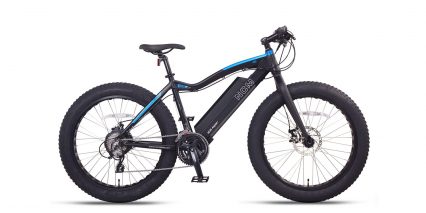
NCM Aspen Review
- MSRP: $1,699
- MODEL YEAR: 2019
- Fat Electric Bike Reviews
A minimalist yet capable value priced hard-tail fat-tire ebike with a proficient drive train both electrically and mechanically, lower price point allows for more financial freedom to customize and add things to the bike. Pretty lightweight at under 60lbs total, has a responsive and aggressive ride feel, comes with…...
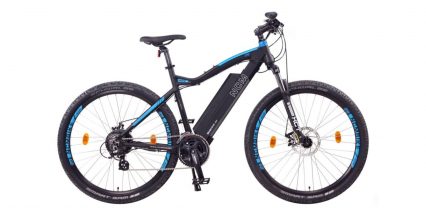
- MSRP: $1,499
- Affordable Electric Bike Reviews
A cross country style hard-tail e-mountain bike with 80mm suspension fork, knobby trail tires, and sturdy alloy pedals, includes a trigger throttle up to 20mph. Lots of adjustability with the display panel, including speed, the 12-magnet cadence sensor is very…...
Comments (49) YouTube Comments
First off, let me say that I really enjoy your thorough reviews. The Moscow Plus is the third e-bike in our family, along with a Specialized Turbo Como 4.0 and Aventon Pace 500 . I purchased this from Amego; great value when purchasing from the US due to no tax and free shipping! I am able to use the code to get to the settings, but cannot figure out how to adjust the top speed from 20 mph to 25. All that I can access is wheel size and battery voltage. Can you assist please?
Hi Mark, I called Amego EV today asking for tips on how to update the speed. It sounds like you can only adjust the speed with the larger center-mount plus display. In that case, you’d hold the + and – key to get into settings and use the code 8018 which would allow you to adjust the speed. Perhaps someone in the ebike forums will be able to help further but this is what I go. Sounds like you’ve got a fun fleet of ebikes there and I hope you do find a solution :)
This might be a bit late, however you adjust the wheel size down and the bike will then up the speed based on that. I.E. adjust a 27.5inch down to 20.00inch and you add 30% speed as the computer reads a smaller tyre… make sense? The only down side is this throws off the odometre reading so you’ll need to factor in the 30% for closer accuracy.
hey Mark, how is the Moscow plus treating you thus far ? Is it a better purchase compared to the Aventon 500?
John - Sydney, Aus
Just bought one of these awesome machines! I haven’t been able to take it on a serious ride yet, but on a quick test ride one thing that surprised me was how easy it was to foul the front wheel with toes when turning – is that a regular thing?
Hey John! Yeah, I’ve experienced “toe strikes” when riding bikes like this, especially with larger shoes. They’ve gone with the “one size fits all” here but are using fairly large 27.5″ wheels with trail tires, so the clearance between the pedals and the front tire isn’t as much as it might be on a larger frame. This being a cross country frame style, with less rake on the fork, the wheel is fairly close to the frame and it can lead to the situation you’re describing. Yes, it is a regular thing with certain frame sizes and wheel/tire combinations. You might be able to reduce it by pedaling with the pad of your foot vs. the middle or heel.
John Liversage
Hi again, I’ve been riding the bike a couple of months now and enjoying great battery life and plenty of power (and thankfully the toe strike thing is no real problem). However, there’s is a significant defect in the power system – if you are stationery and adjust the pedals by turning them back even a small amount, occasionally (say 1 in 10 times) the power comes on, possibly at full power. As you can imagine, that’s extremely dangerous – it has once shot my bike onto the road while waiting at lights to cross a busy road, and once into the side of my car while parking the bike in my garage. I’ve reported the issue to the bike shop I bought the bike from (Leon Cycles here in Melbourne, Australia), and although initially they were responsive (even confirming it is a known fault), they have stopped responding, despite my best efforts. I did send a video I’d taken that graphically shows the issue. Even apart from that fault, the power is also very slow to come on when going from downhill (above the speed where power is provided – here in Australia that’s 25KPH) to a steep uphill, taking upwards of 5 seconds to respond (I tested a different e-bike and response was almost instantaneous). On your review ride it was largely flat, so I’m thinking you would not have picked that up. Is that a common issue with other ebikes? Any suggestions?
A few rectifications:
- The bike uses a 8 speed 11-32 freewheel, not a cassette. It’s hard (if impossible) to find in the north american market. Here’s a link I found on aliexpress for spare parts: https://www.aliexpress.com/item/33056759327.html?spm=a2g0s.9042311.0.0.3e774c4df5Shfp
- The display will let you go from pedal assist 6 up to 0, but not from 0 down to 6, if that makes sense. Doesn’t go around in both directions, maybe that’s something they changed. (I bought 2 moscow pluses and they’re both this way.)
- You can’t change the maximum speed, but what you can do is input a smaller wheel diameter. They speedometer won’t show the correct speed anymore, and the bike will assist you up to 32km/h + about 30%. THIS WON’T MAKE IT A SPEED PEDELEC unless you pedal EXTRA HARD on the top gear ratio (48×11). I find myself going barely over 32 on flat ground, maybe up to 35-36 helping with my legs.
Hope this will be helpful. This bike is amazing btw, and if you’re commuting, going faster than that would absolutely drain your battery anyway. For exemple, a bike going 50km/h will need to draw 1500W of power and you run continuously for only 40 minutes with a 1000Wh battery. This has been my experience with the Rize Rx, which I decided to resell because of that.
Hi Mat, thanks for the updates! Great point about the freewheel. I didn’t think there were any 11 tooth freewheels and only recently learned more about the distinction between a cassette and freewheel. I really appreciate you sourcing that part! Your second point about not being able to “around” makes sense. Perhaps they did change something from 2018/2019 when I covered the bike. The wheel size hack is something I’ve heard about before, so thanks for explaining that more thoroughly and posting your results for top achievable speed. I’m hoping to cover more RIZE ebikes in the future, so glad to get your insight about why you switched to NCM here. Great comment! Thanks again :)
Mathis Bourcier-Laurin
Concerning the link I put in my comment, these appear to be cassettes after all… I might have got this wrong. I’m sending an email to NCM to know more. There doesn’t seam to be any 11-32 freewheels accessible on the market.
Hi! Nice review! I am considering the NCM Moscow Plus or Eahora AM100. Can you please make review Eahora AM100 or/and compere Moscow Plus with Eahora AM100! Will be very appreciate any suggestions. Thanks!
Hi Steve! I’m more familiar with NCM, but I will keep an eye out for the Eahora products and possibly do another review this year. That said, it could be many weeks or months from now. I recommend asking for feedback in the EBR forums in the NCM section here . I hope this helps you compare the two… and the list of specs here on the Moscow Plus review, you can compare them with the specs for the Eahora AM100 based on their website :)
Hi, in your video review the topic came up about using the NCM Moscow in snow conditions with regards to how it would hold up in salted roads and in wet conditions.
How do these bikes do in rain and puddles? I can see where you might want to avoid those but sometimes you get caught out on a ride where you have to ride through some conditions like that.
Hi John, my experience riding in rain has been that most ebike products, even the cheaper ones, are highly water resistant… they should hold up alright in rain, just don’t submerge. One time, I had ridden in a heavy rainstorm in Austin, TX (big heavy drops) and then parked my bike outside in the sun. The LCD fogged up inside because the water somehow got inside due to humidity or splashes or something. That fog stayed for a long time and was annoying. I’ve considered wrapping displays with plastic during extra rainy days. I also never flip an ebike upside-down to wash them (with a hose gently) because the cables and holes and electronics are all designed to drain downwards and if you flip them, water can pile up inside instead of draining. I learned that washing with a hose, some car soap, a rag and chamois is alright, even using car wax on bicycle paint seems to work well and protect any steel parts from rusting as quickly. I usually go for synthetic spray wax that works on metal and plastic, and I just coat everything. Final tip, I also use biodegradable spray cleaner for bicycles more often than car cleaner products before the wax, and I regularly lube my chain but dry it off after vs. leaving it greasy. This reduces the chance of dust and debris sticking to the chain and wearing down your sprockets. Sorry that these tips aren’t formatted perfectly, I’m in a hurry ;)
Thank you for your reply in answer to my questions. That helps me a lot.
Question for you on the Moscow plus mountain bike. The specs for that bike from Lyon cycle says it has 55 NM and I was reading your review and in it you say it has a NM. Can you tell me the difference between the measurements?
Hi Kipper, I hope I’m understanding your question correctly. It sounds like you want to know what NM stands for? This is an abbreviation for Newton Meters of torque. It’s a measure of how strong a motor can be, how much force it can create (which is good for starting and climbing). I hope this helps! Many of the stats that I provide here for motor power (watts and newton meters) are provided by companies. There are different ways to measure these things and I suspect that some companies are exaggerating the power of their products. That’s why I try to leave comments open and also show how the bike rides on camera, so people can make their own judgements :)
What I think Kipper was saying is that you list the torque at 80nm… All other specs I’ve seen list it at 55nm
Had the bike for about 6 weeks now and have 600k on the odometer. Overall a solid bike with great range and speed. Have encountered the following problems. The battery gets loose after a while and starts to knock. This can be remedied with some strips of duct tape to act as spacers. I broke a spoke on the rear wheel. When I tried my local bike shop, they said it was an unusual size and ended up having to order one online from Germany. The screws holding the rear brake disc fell out. The seller has promised to send me a new set at no-charge but it’s odd that they all fell out without much warning. No big issues so far, and I am still pleased with the purchase.
Hey, thanks for chiming in with these notes about the Moscow Plus. I’m glad that overall, you’re still happy with it. It’s also reassuring to hear that NCM has provided some support and your local bike shop went to such great lengths to help you get a new spoke! Good on them, and thank you for taking the time to share :)
Hi there, I really enjoyed your review. I have a NCM Moscow 27.5″ Plus here in the UK. Leon cycles tell me they no longer provide thumb throttles for the Eurorean market so I guess my questions are can you tell me the details of the throttle so I can source one which is compatible and will I be able to fit it on to my model? Does the cable from the throttle go into the back of the display (there are no spare holes) or does it go directly into the control box somehow. Hope these questions aren’t too technical and that you can help in a small way.
I suppose the alternative would be to buy a bike from North America, but suppliers there seem reluctant to ship to the UK – unless you know of one who does!!?? :) Thanks for your time. John H.
Hi John! Unfortunately, I do not know where to source the part, and am not 100% sure that I’d know the latest display/throttle interface. Perhaps you could post the same question in the NCM Ebike Forums to see if any recent buyers could help. This throttle is fairly unique and highly sought after by some other companies I’ve spoken with, because it’s narrow – allowing the shifter and brakes to not get pushed too far in towards the stem. I think some other companies use it too, like Magnum on their Mi6 model . I hope this helps point you in the right direction!
Hi, sorry, but I didn’t catch your name in the video review, but found it to be one of the best reviews information wise. How tall are you so I can gauge how the 29 will fit? You appeared to be in a comfortable upright position. Did you have enough straddle room at a stop? What’s your inseam if you don’t mind saying?
I prefer a larger bike so I don’t have to lean over so much. I’m 5’9″ and currently ride a large Trek Verve+ with 29 inch wheels which works well.
Thanks, Gary
Hi Gary! Sorry for the delayed reply here. I’m 5’9″ as well, and my inseam is about 32 inches. The bike felt good to me and I did have room to straddle the top tube when stopping. I tend to raise the seat way up to get full leg extension, and this bike had enough space for me to achieve that and have comfortable reach. We are lucky because many bikes fit people 5’5″ to 6’1″ or so and we’re right in the middle there :D
Hi, I just got my Moscow Plus 29″.
I’m 6’2″ 245lbs with 32″ inseam and when I stand straight I’m just touching the cross bar, which I find uncomfortable, and zero chance over ever installing water bottle. I wish I had read more reviews before purchasing, as on site said that the 29″ good for 5’9″ to 6’4″ and 27.5 was 5’5″ to 6’1″. I have read now found a few reviews that say the 29″ is too big even for someone my height
I would suggest that 33″ inseam or less go for the 27.5″ Thanks
Saiveer Aushatty
Hello I recently brought the Moscow plus e-bike but I am not satisfied with the battery because it is getting discharged quickly and when I take the bike from store the bms was 53. Something when it is fully charged. but now when I am charging in the home it is showing 51. Something and also charging of the battery is also discharging quickly can I know what is the reason??
Hi Saiveer, perhaps it is colder weather? That could explain why the battery isn’t getting the same range but might not explain the voltage drop. Over time, it is my understanding that any lithium-ion battery will begin to lose capacity (especially if the battery is heating up a lot). Maybe NCM is using cheaper cells or your pack was older? I cannot say for sure, but maybe you could buy a replacement battery someday if it continues to drop in capacity.
Hi, I love the review and currently considering a NCM. Can you comment on the difference between a Moscow and Moscow Plus? Why would you consider the upgrade?
Hi Leanne! It has been too long since performing this particular review to know what the current differences are. Usually, it has to do with upgraded brakes, maybe a nicer derailleur, or a higher capacity battery pack. Perhaps you could ask for some input on the NCM ebike forums to see if anyone there has some insights :)
Hi! I’m considering the Moscow Plus. I watched the review, it was awesome! Thanks. It made me want to by it right away, but over in Montreal is not really good timing with the snow, especially if ebikes don’t like salt (quoting yours truly :) )You mentioned the 29 inch is more comfortable than the 27; according to my height 5,6’’ I should get the 27″. Do you think I should get the 29 and I will be able to adjust it to my body dimensions? Also, how fast does the battery recharge?
Thank you! Céline
Hi Céline! Yeah, this is a good ebike. It’s made to be affordable, but still pretty capable, and it’s nice that they offer two wheel sizes. Yes, I agree that the 27″ wheel is a better fit for you at 5’6″ tall. The larger 29″ wheel diameter helps to smooth out bumps, but raises the frame, adds weight, and just isn’t a great fit unless you’re a taller person. I believe that the 27″ will still be very comfortable for you. As for charging, I’d estimate that a full charge could take 5.5 hours. Note that the first half fill goes much faster than the second half, because the charger slows down in order to help the battery balance (which is easier on the cells, helping them to last longer and be in good condition). I hope this helps!!
Thank you for your reply it helps me and reaffirms my choice for this ebike! Can’t wait to order and try it out!
I just got a Moscow and its terrible in so many aspects! The controller is awful and the wires running all over the frame is a pain! you cannot easily carry the damn thing and finding a rear rack for it is another nightmare! The common racks that attach to seat post and rear part of the frame wouldn’t work and the compatible ones are unavailable and quite pricy! the bike come with absolute no adjustment and the L and H on the derailleur was so off that you couldn’t shift it to Gear 1 or 7 and the rest was entirely unindexed! The whole things is a mess and Leon Cycle did not even post my review! This is why they have so few reviews for each product!
Hi Hamed, that really sucks. This is why I created EBR and the associated forums, to let people speak more freely (as long as they are constructive and honest). It sounds like you’re frustrated with the bike and it came damaged or just way out of tune. I’m sorry man, yes, the wires on this ebike are also more exposed vs. internally routed. I hope you got a good deal on it, I think with so many brands being sold out recently, people are left with fewer options and the direct online bikes can be risky and get damaged in shipping. NCM has been around longer, and I feel like the founder is a hard working person (who supplied Magnum and Amego) but I haven’t been in touch or reviewed their products for a while now. Hope you can get it running right and enjoy some rides this summer… or sell it and get another ebike.
Hi Court, I really appreciate both the website and youtube videos! They are really helpful! I fixed almost everything but it took me > 3 hours and was a total pain! I got it for < 1500 CAD so it wasn't horrible but anyway I wish I would have been waitng till June/July to get either a Radpower or Rize which both are looking pretty good but are in the back order! Deciding to bike again after twenty something years you'de assume how unfamiliar everything looks like and that is why I want other folks like me know what to expect! Cheers
dennis morgan
I purchased a Moscow Plus one month ago and it has not run with any assistance at consistantlly motor keeps cutting and no speedo reading have checked all connections and they are tight we have at least 8 ebikes in our group now . and many different brands this only one doing this. other experienced riders have ridden my bike and the same thing has happened to them no speedo reading no power motor turn on handle bar switch it runs with assistance for about 30 seconds and cuts out again i am now wishing i did not purchase this bike. you can ring them for help and it takes so long for them to get back to you has any one else had this problem with a moscow plus bike
Hi Dennis, that sounds frustrating. Thanks for sharing with us, I hope you are able to find some solutions or maybe sell the Moscow Plus and try another ebike?
Got a Moscow Plus and I’m pretty happy with it. The previous owners stating their issues I believe they may have a dud, Mine works well, shifts very smoothly (for the drivetrain in this price range), the pedal assist works well Talking bang for the buck I believe there is nothing that comes close. 16mA batt 500W motor 80Nm torque, hydraulic brakes, decent tires I mean this bike checks all the boxes for a rear hub low cost bikes. Will see down the road for longevity and issues but as it is I would totally recommend this for someone’s first ebike without shelling out big $$ for a mid drive fancier big name bike. As the review already stated the kickstand position is awkward to say the least and the charger could be better, but these are pretty much my only complaints after owning it for approx 1 month,
Thanks for the update, Adrian! Glad to hear that you’re satisfied with the product :)
I bought my Moscow Plus a week ago from a local bike shop in lower mainland of BC. Fully charged the battery (53.7 V reading) and took it out for a total of three rides. Got a total of 135 kms before the last battery gauge bar started to flash. was using PAS 1-2 mainly. The only problem encountered so far is when the front derailleur is in the small sprocket and the rear is also in the small sprocket, the chain would tend to skip. Otherwise a good bike.
Hi Rob! Very fair assessment, thanks for sharing what has worked and what issues you’ve noticed. I covered this model a long time ago, so perhaps things are outdated a bit. Does your bike mostly fit the description and review I made here? It sounds like you’re pretty happy with it overall, I think they are priced well.
Hi, love the reviews and because yours are far most the best, I purchased the NCM Power Plus and am happy with the bike. Only problems I have had since my purchase I found that the fat tires were rather slippery during the winter riding on city roads and I started to get constant rear flat tires, I had about 3 flats all within 2 months after purchase, I took it into the shop and the bike mechanic could not find anything wrong, so I made the decision to change tires from the original Schwalbe 57-662 to 55-662 and 1,766 km later still no flat tires and mystery was never solved.
The other issue I have that the Leon website key features state – reach up to 150 km (depending on terrain conditions & power level settings) OK well I thought that this seems a little of an over statement, so was hoping for at least 100km range on a full battery but I don’t even get close so I would love to know how this 150km range is achieved – I am 5’11” and weigh 91kg. I usually bike on good flat city roads and the occasional flat fine gravel cycle path using PAS #3 and 18th gear traveling about 23-25 km/h (21 m/hr) and I am lucky to get 65km (40 miles) range before the flashing cell appears on the screen, so if anyone or yourself can tell me what I am doing wrong and how I can achieve more km range without have to weigh in at 60kg I would be very grateful, as at this stage I feel that the 150km statement made by Leon Cycles is a little misleading. Other changers I have made on my bike are just some short plastic guards and a more comfortable seat.
Cheers Glenn
Hi Glenn! I’m glad to hear that your new tires are working better. Regarding the range estimates from NCM, most companies I speak with use a 72kg (160lb) rider on flat pavement with no wind using both the low assist and high assist to estimate a range. Since you are riding with PAS #3 I would expect your actual range to fall somewhere between their estimate. The higher the assist, the lower the tire pressure, the less smooth the terrain, and the more throttle is used will all reduce your range. Another way range is sometimes calculated is to divide the watt hours of the battery pack by 20 so that would be 768 / 20 = 38.4 minimum range. It sounds like you are getting close to that number (you said 40 miles). Over time, battery cells may not provide the same high capacity as they are power cycled, and the parts of the bike could become dirty and less smooth. A tuneup could help increase range. This ebike also uses a cadence sensor, which doesn’t require much pedal input from the rider, so the motor usually works harder than a torque sensor. These are all of my thoughts, I hope they help you :)
bikes crap…. my throttle has already broken the display screen has frozen and won’t let me change pedal assistance settings….. complete angler Gosnells is where i brought it from they scammed me and put 1.95 inch tubes when its supposed to have 3 inch wide tubes…. disappointing
Post a Comment
Cancel reply.
Your email address will not be published.
This site uses Akismet to reduce spam. Learn how your comment data is processed .

IMAGES
VIDEO
COMMENTS
Best flat bar tourer. Giant Tough road SLR 1. Check Amazon. The Giant Toughroad takes a slightly different tack from most touring bikes, with flat bars, an alloy frame and carbon fork. Its 50mm ...
Yes. Trek 520 is a worthy touring bike for people seeking bike-packing adventures. It has a durable steel frame with a relaxed geometry, racks for extending storage capacity, and a wide enough gear range to tackle any terrain. Read this entire article for more info.
Joining the ranks of the 'adventure bike', the Trek 920 aims to rewrite the classic touring rulebook. Skyler takes one to B.C. to find out what this means. ... Bikepacking Bikes / Drop-bar & Gravel Bike Reviews. ... Trek's 920 seems to aim to achieve the same thing as those rule-bound classic touring bikes, but freed the Luddite mentality ...
The Best Overall Touring Bike: Trek 520 After analyzing and aggregating more than a dozen professional reviews, we believe the 2020 Trek 520 is the best mid-range road touring bicycle for most people. While it was a hard call between the Trek 520 and the Surly Disc Trucker (winner of our Customizable Pick), we chose the Trek because we think it is a better value as an entry-level bike.
With both 26" and 700c wheel build options available, the Disc Trucker can be as adventurous as you choose. The 26" (in sizes 42-58cm) is capable of taking up to 2.1" tires, while the 700c version ...
The Trek 2023 520 is a dependable touring bike made for long distance rides that has been optimized for comfort and performance. This touring bike offers riders a lightweight yet strong chromoly steel frame, precision brakes and an ergonomic riding position. It also comes with an adjustable stem to provide extra reach when needed, reliable ...
Following suit, the 1120 was a natural progression for Trek. The Wisconsin based titan has a longstanding history of making bikes in the adventure travel and touring category. First the 520 and 720 touring bikes became classics back in the early 80s. Then Trek found success with its more recent gravel and dirt-drop tourer, the Trek 920. It only ...
Trek 520 Disc first ride review | BikeRadar
How does the Trek 920 perform as a touring bike? Find out in this comprehensive review by BikeRadar.
The 2023 Trek 520 Grando is an adventure bike designed for the open road. This rugged touring machine features a reliable steel frame, Shimano components, and a wide-range of gears for tackling those challenging hills and trails. Its components ensure a secure fit for cyclists of all sizes and the included rear rack allows for convenient ...
The Trek 520 MSRP is set at $1,429.99 USD. It comes in five different frame sizes: 48, 51, 54, 57, 60cm. I am 5'8" with a 30" inseam and the 54cm fits me perfect. The included components are great for touring right out of the box. The Shimano Dura-Ace bar-end shifters are low maintenance and easy to fix on the go.
The New 2019 Trek 520 Touring Bike. The Trek 520 is the longest running model in Trek's history. It's hard to believe that this USA-based company has been refining their dedicated touring bike for 36 years now! Today, we'll be looking at the controversial changes to the frame, fork and components of the 2019 Trek 520 model.
Trek continues to work on developing the Émonda, dropping the weight of the top end Trek Émonda SLR to 640g in a size 56cm (665g with discs) and 1091g for the Trek Émonda SL (1149g with discs ...
Trek's FX range of bikes is quite extensive, starting at the £500.00/$599.99 FX 1 and going all the way to the full-carbon £3,050.00/$2,799.99 FX Sport 6.
Bikepacking & touring bikes. Whether you're bikepacking on remote gravel roads or touring from city to city, Trek touring and bikepacking bikes give you the freedom for two-wheeled exploration. These bikes are built to withstand the rigors of multi-day adventuring and feature loads of mounts for gear so you can stay out longer.
56 Comments. This 2022 Trek FX 3 review covers everything you need to know about the best hybrid bike for 2022. The 2022 Trek FX 3 checks all the boxes: disc brakes, 1X drivetrain, tubeless ready wheels and more! Its a fitness hybrid, which means you can ride it like a flat bar road bike while staying comfortable, or use it to commute around town.
Trek Fuel EX 9.7 review | Trail Bike of the Year contender
The Trek 1120 Touring bike is for bicyclists who want to take on all terrains. It has a rugged, durable frame that is also lightweight. This model is perfect for backpacking trips and bike tours because it has a heavy-duty rear rack system for hauling gear. It is ready to go for mountain trails and more. It is built to take on any kind of ...
The full Trek Checkpoint SL line-up spans a price range from $3,399.99 / £3,700.00 with the SL 5 to £6,400 with the SL 7, which is the model I had on test. This may be the top of the range for ...
Price: $12,000 (SLR 9, as tested) Weight: 17.8 lb. (Size 54cm) Buy Now View Gallery. Trek's gravel loving Checkpoint is all new front to rear, with new geometry (covered below) and features for ...
Watch it below, and scroll down for more details on his bike. This isn't the only bike check for Justinas we have on the site. You can find links to a couple of others in the Further Reading grid below, plus you can see the Trek Procaliber he rode in the 2023 Tour Divide in the drop-bar rigs roundup from last year.
The best electric bike for most people. Best overall. 1. Rad Power RadCity 5 Plus. View at RadPower Bikes. It's not the flashiest, but we think the RadCity 5 Plus will more than fit the needs of ...
In my opinion, the NCM Milano electric bike offers exceptional value for money. It is unusual to see such a high-quality, well-made e-bike at this price point. What's more the specification is excellent. The 48v13ah battery will certainly provide users with a realistic range of between 30-45 miles, or 31 miles using the 20wh per mile calculation.
The Diverge E5 can be a road bike, gravel bike, drop-bar mountain bike, touring bike, or even an adventure bike. READ FULL SPECIALIZED DIVERGE E5 REVIEW Salsa Journeyer Claris
A Vanmoof imitator, children's e-bikes, an e-cargo bike with a roof, Tenways' new mid-motor e-bikes, a full-suspension Shark + more e-bike highlights from the 2024 National Cycling Show 4 Team GB star Katie Archibald set to miss Paris Olympics after tripping over garden step and breaking leg, ripping ligaments, and dislocating ankle in "cruel ...
The NCM Moscow, particularly its Plus version, received rave reviews on its release and arguably remains one of the fledgling brand's milestones. It uses a smaller than normal Das-Kit geared rear hub motor with 250W of output and as much as 55 Nm of torque. Great figures, considering the affordable price range.
The 180mm rotor hydraulic disc brakes are a great upgrade here, they are complimented well by a nicer derailleur, better gearing range, and more gearing options here on the Plus vs the regular Moscow. The Plus is actually lighter by 1.4lbs despite its larger battery, better fork, upgraded gel saddle, and nicer display.